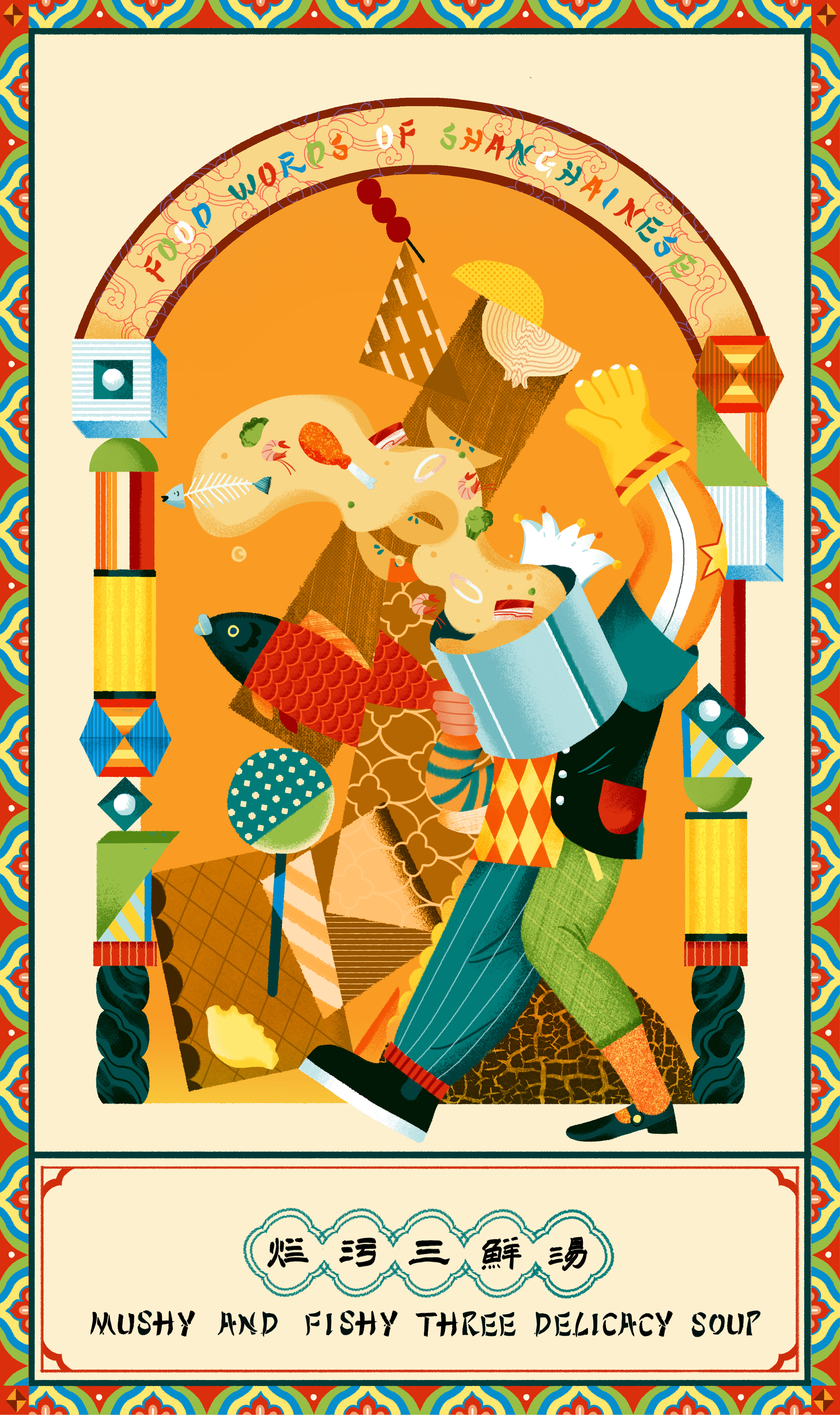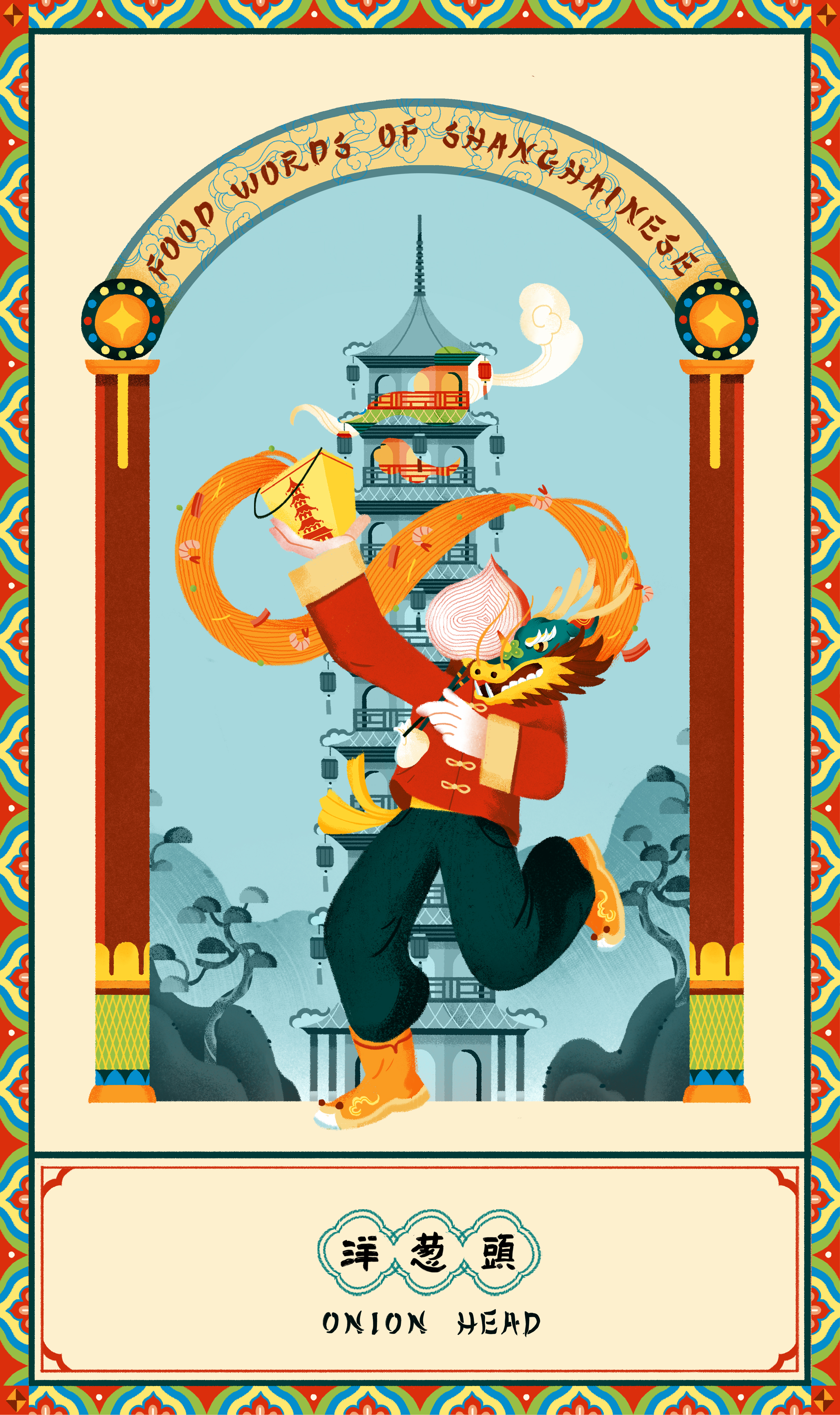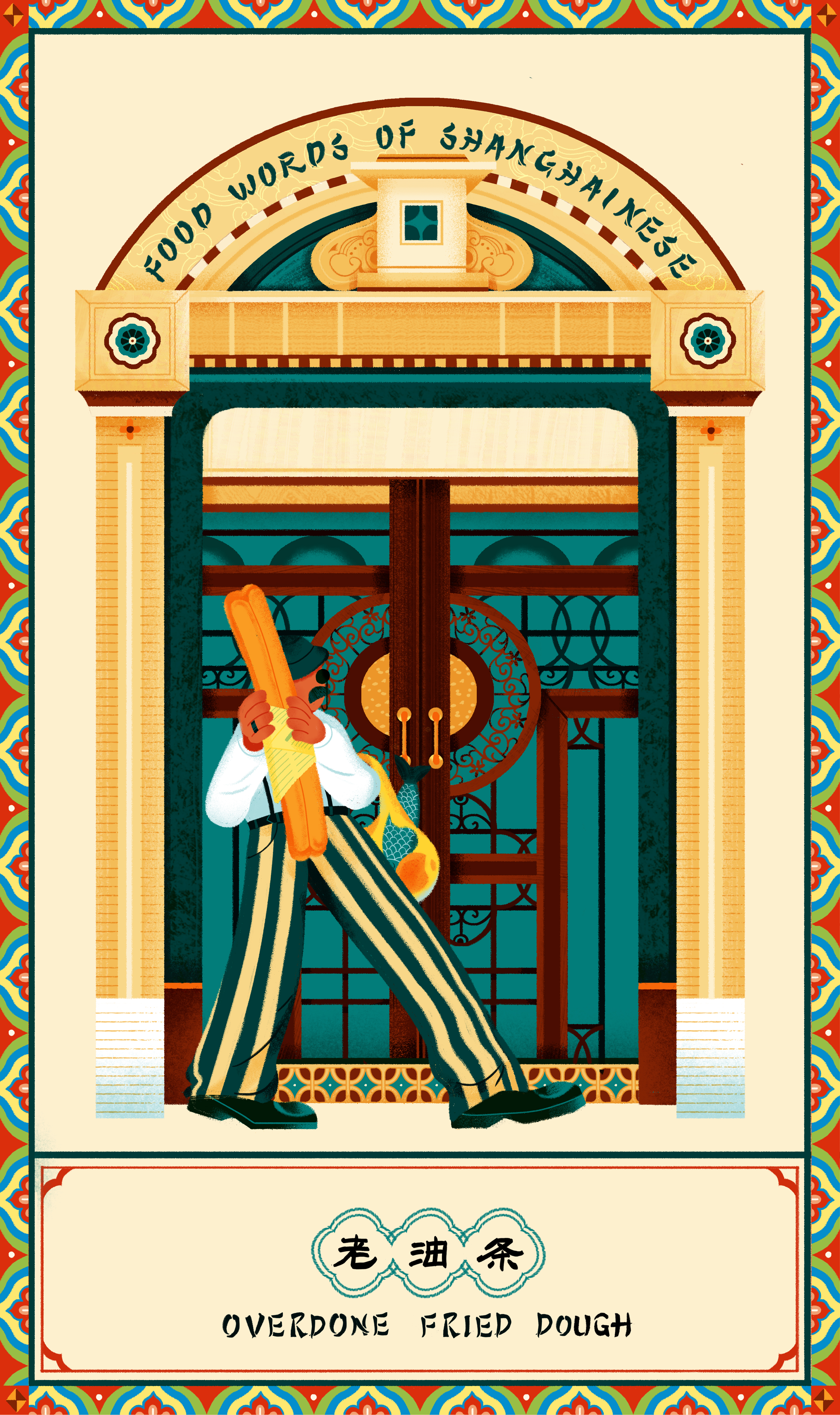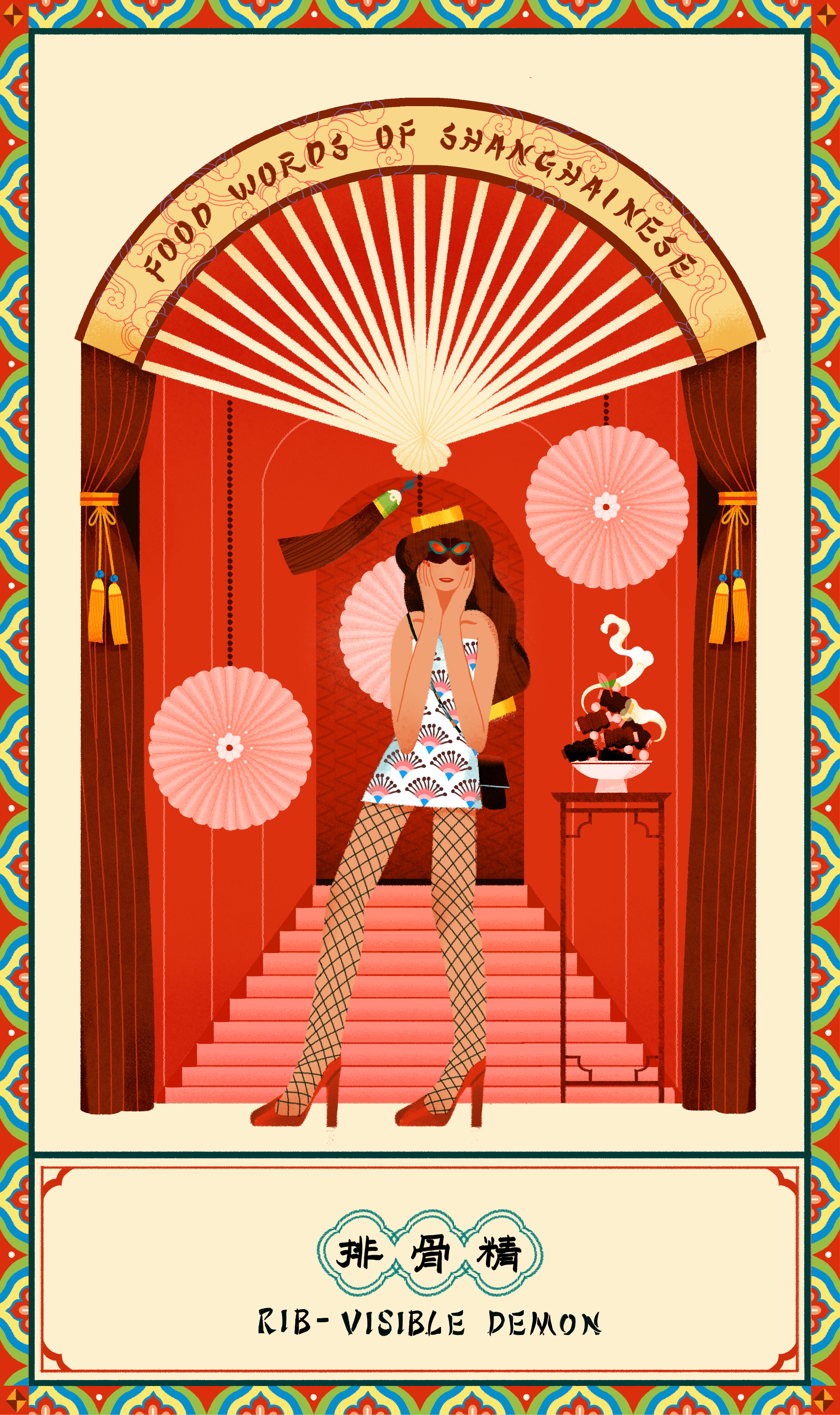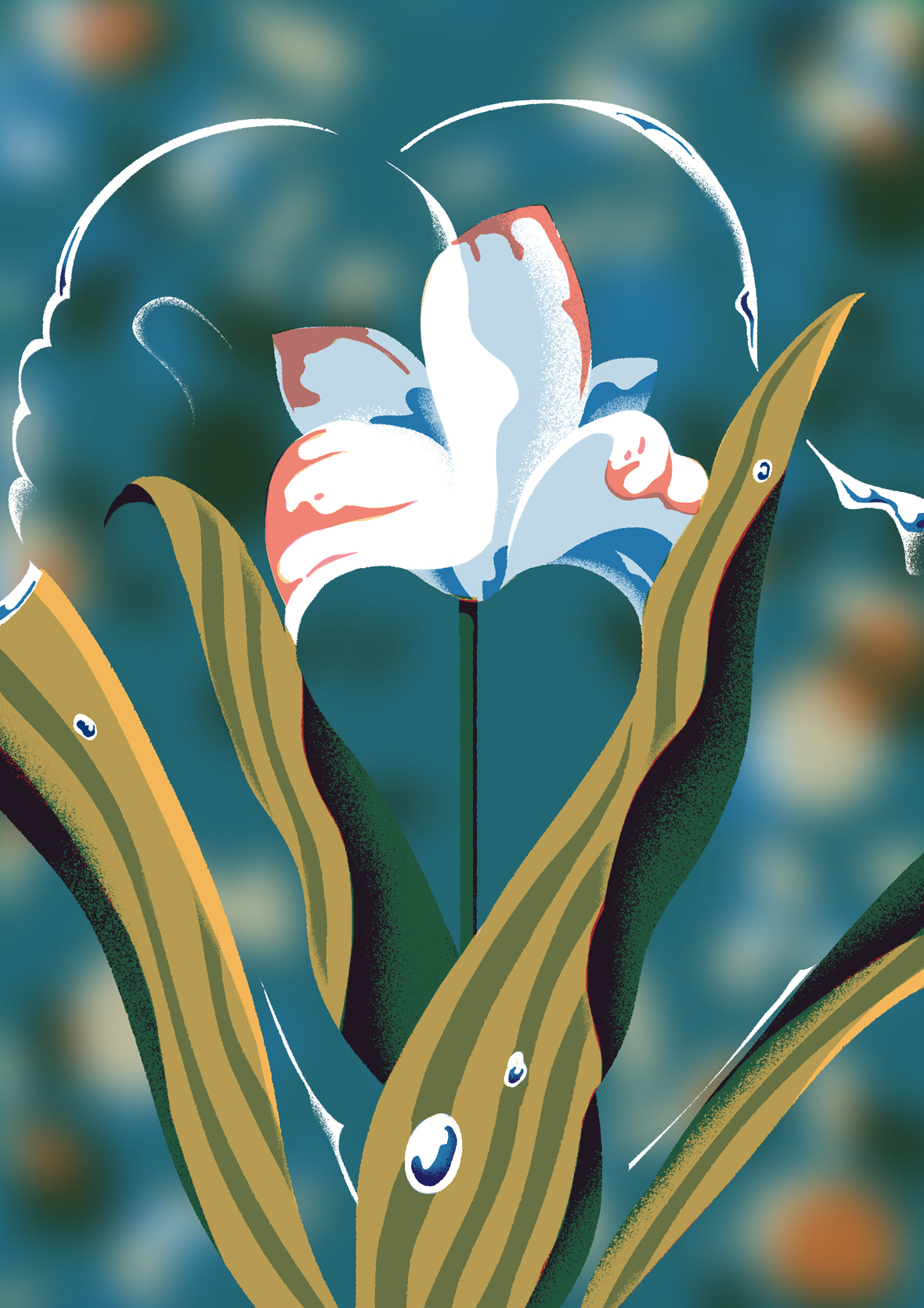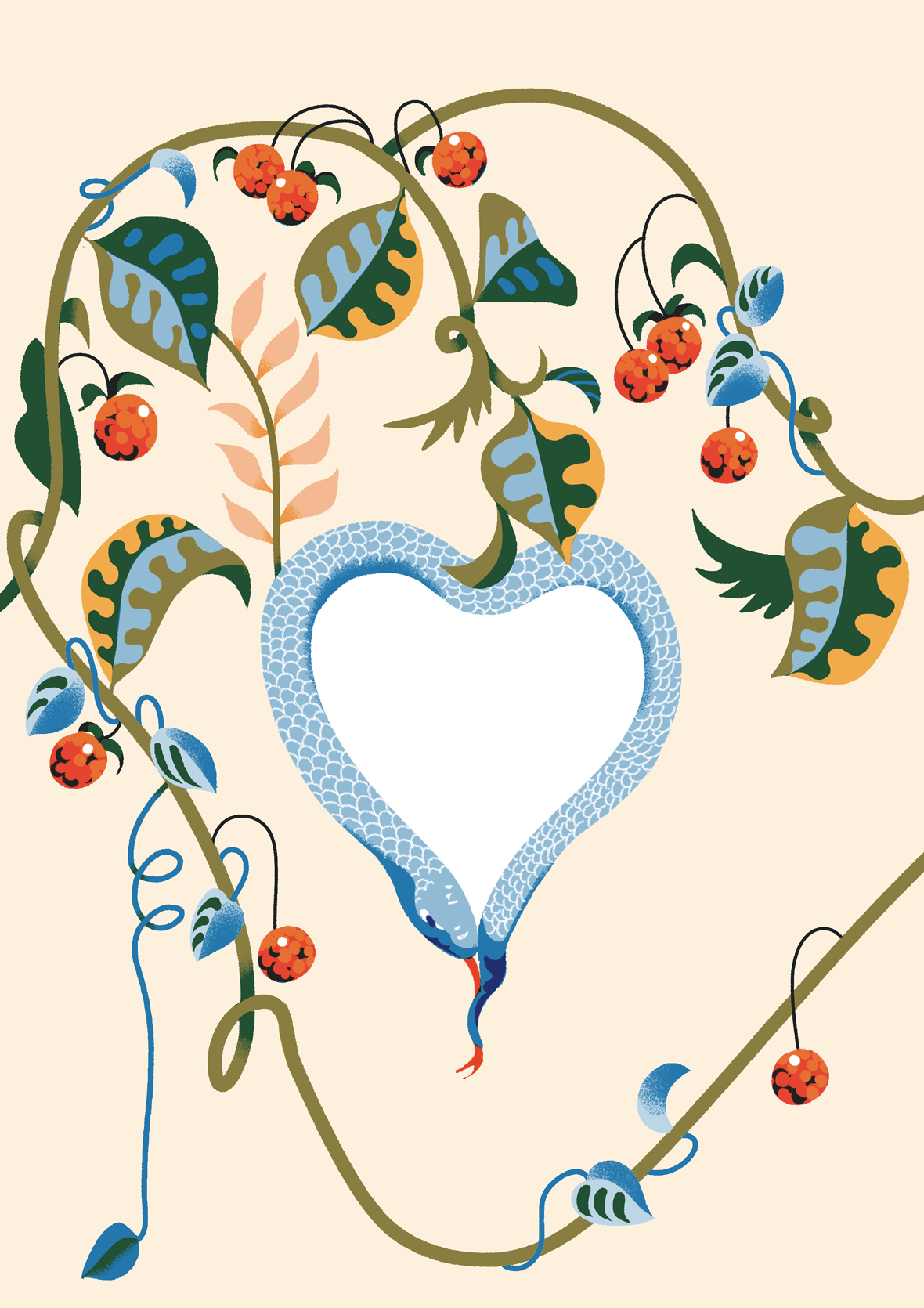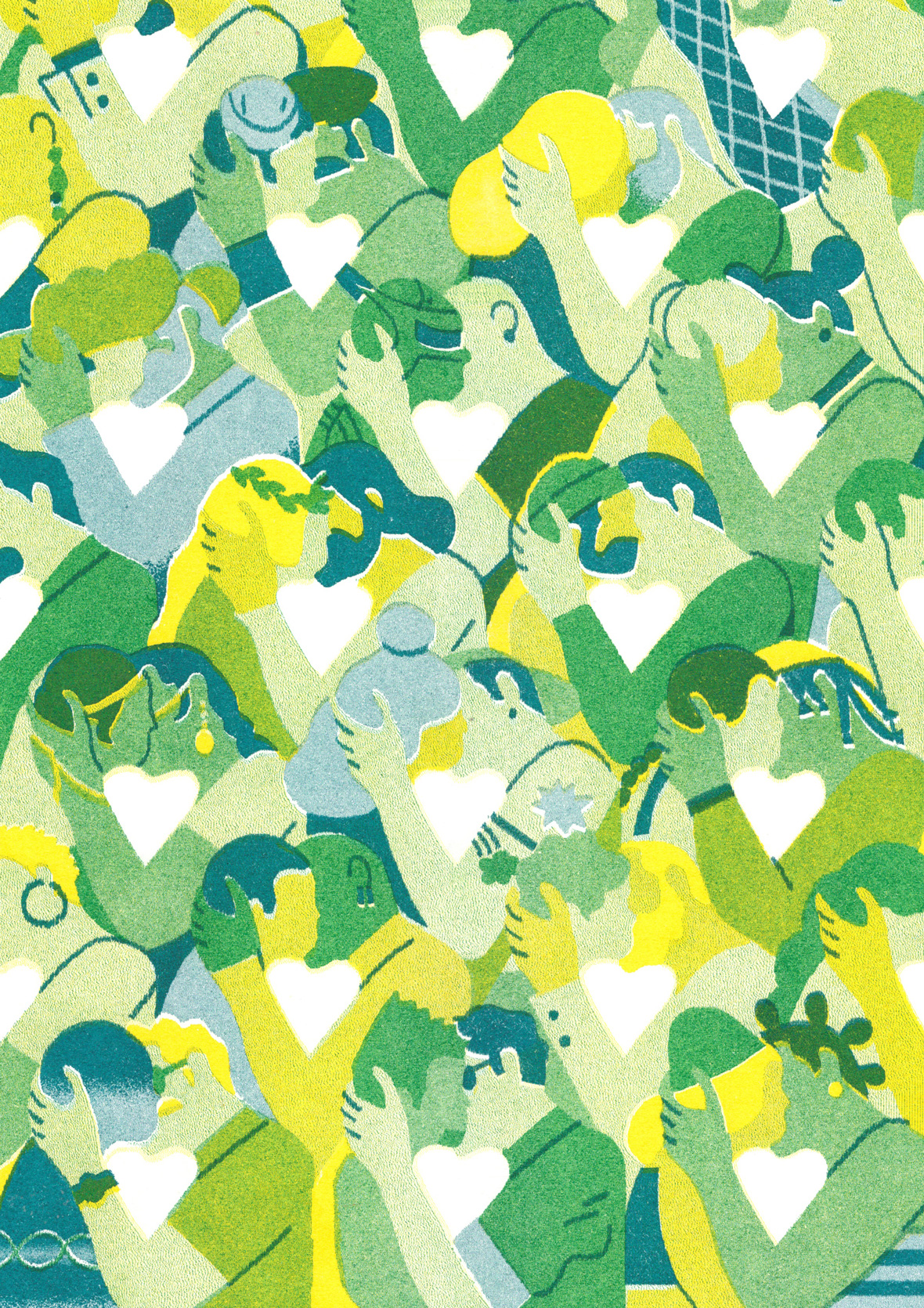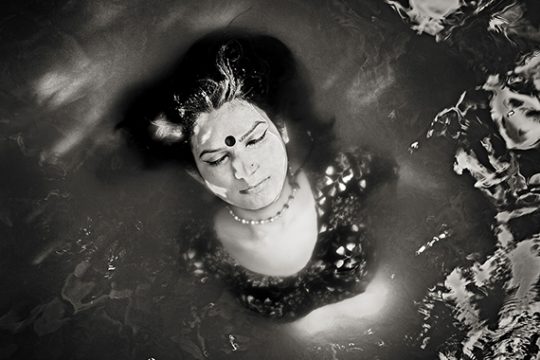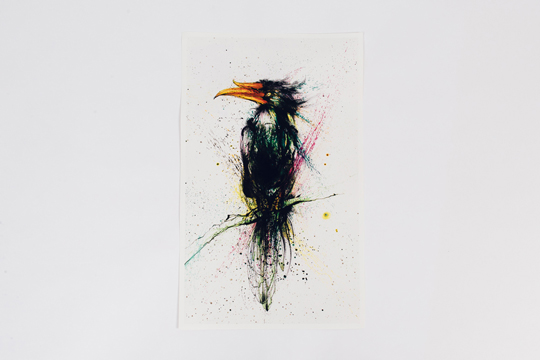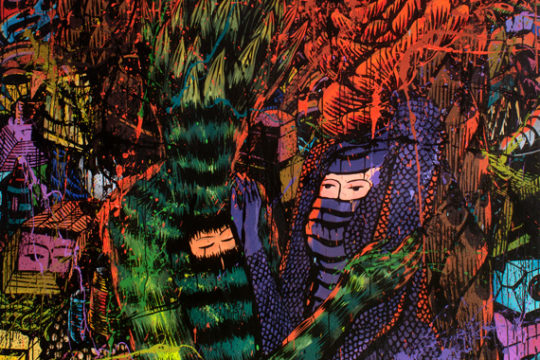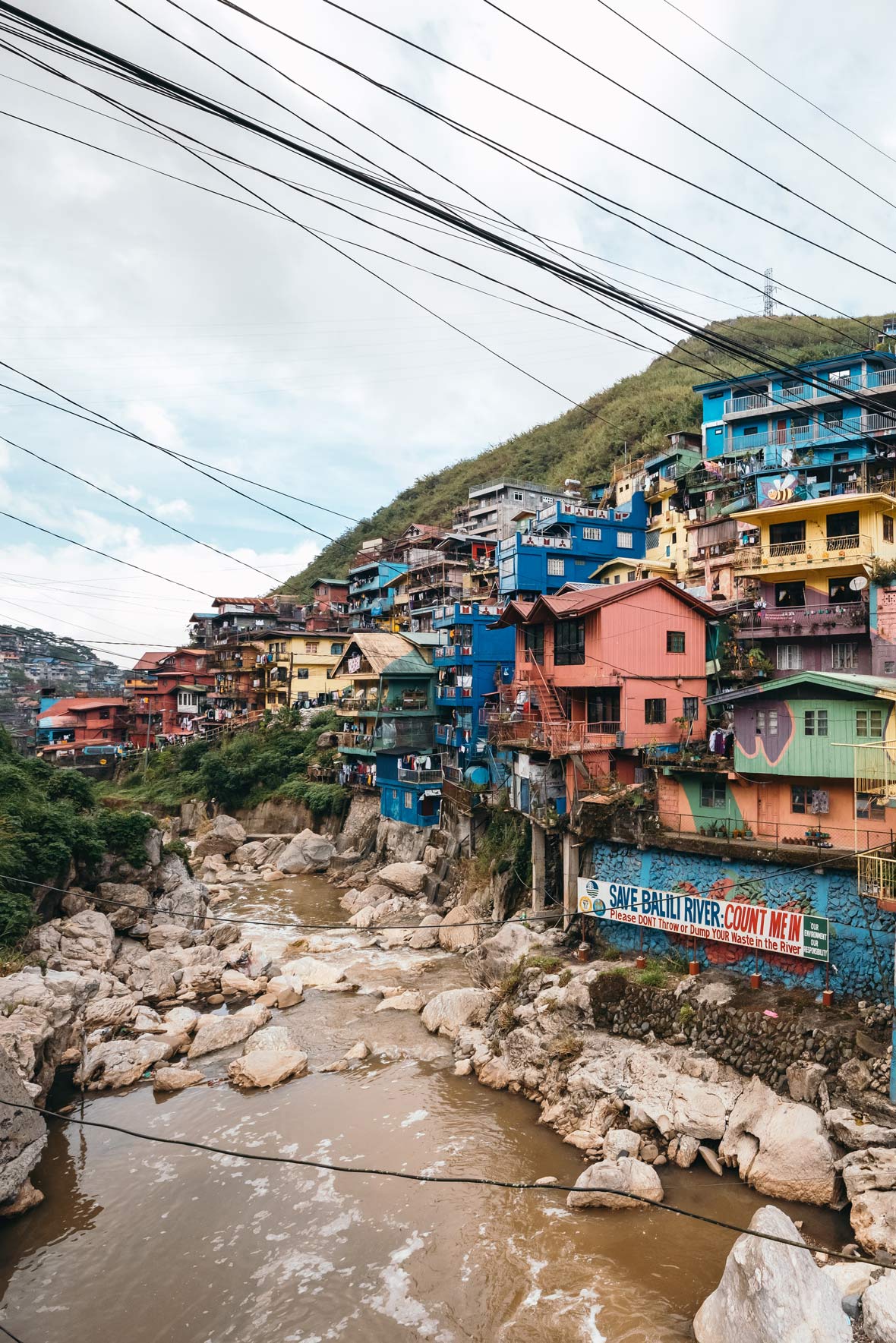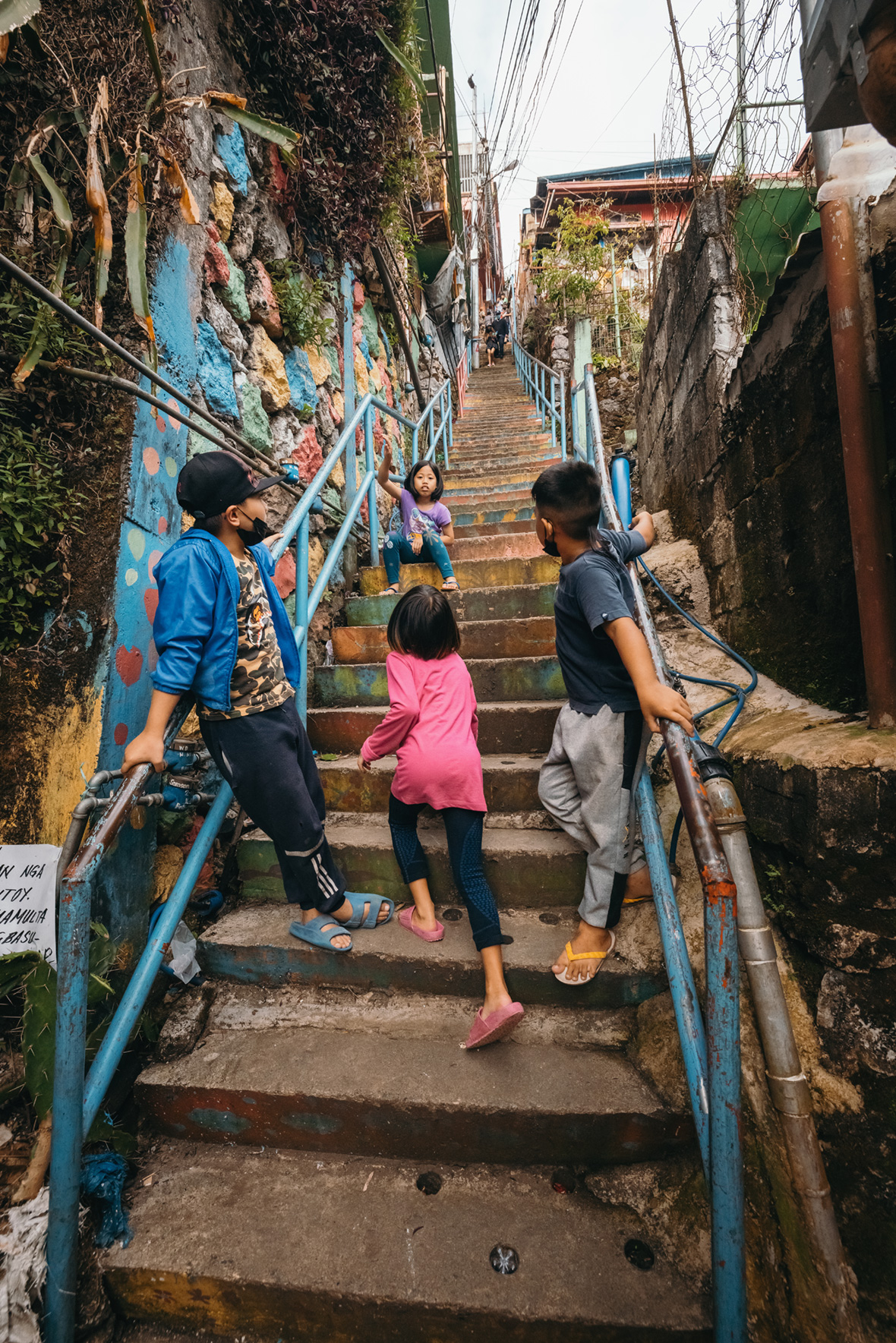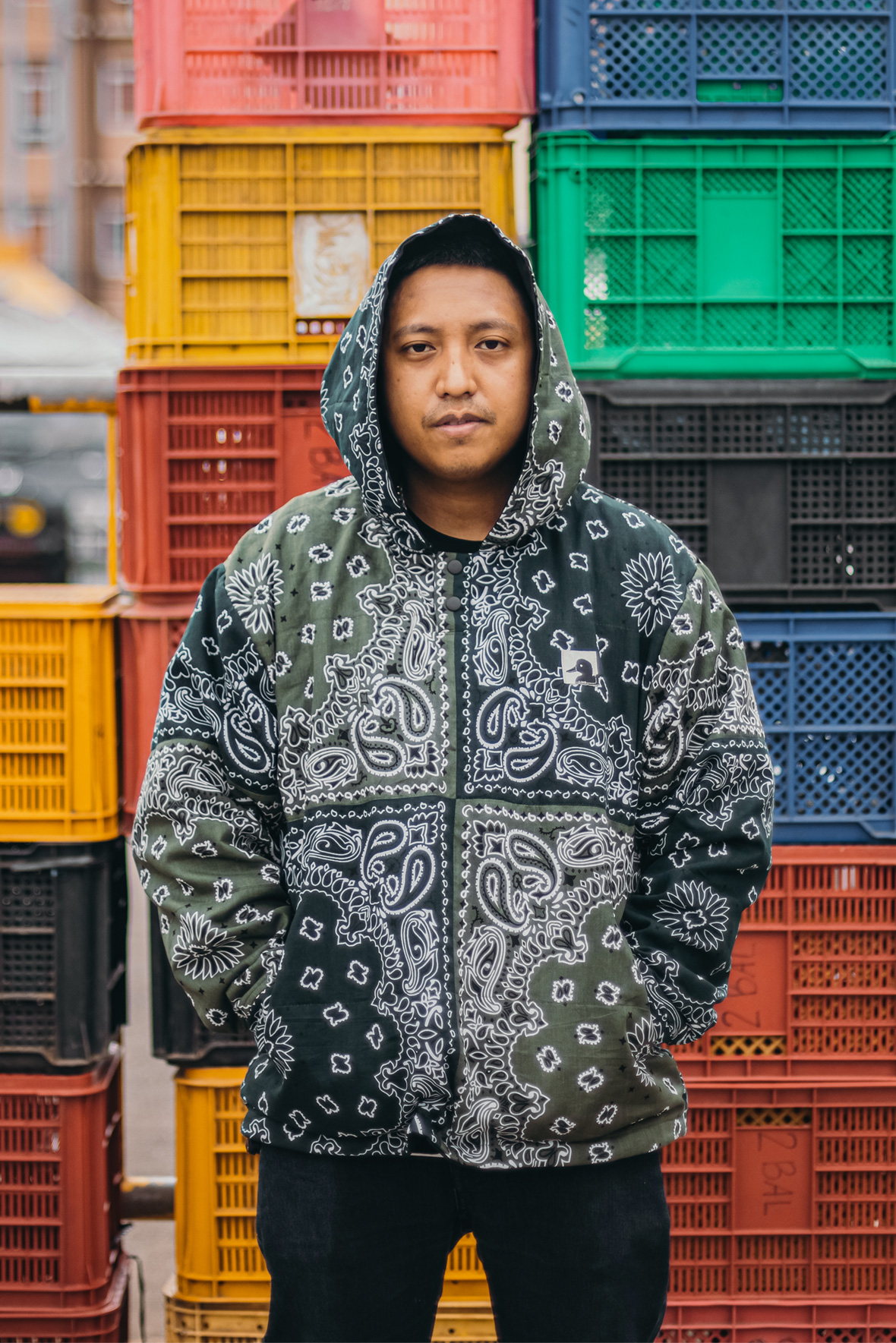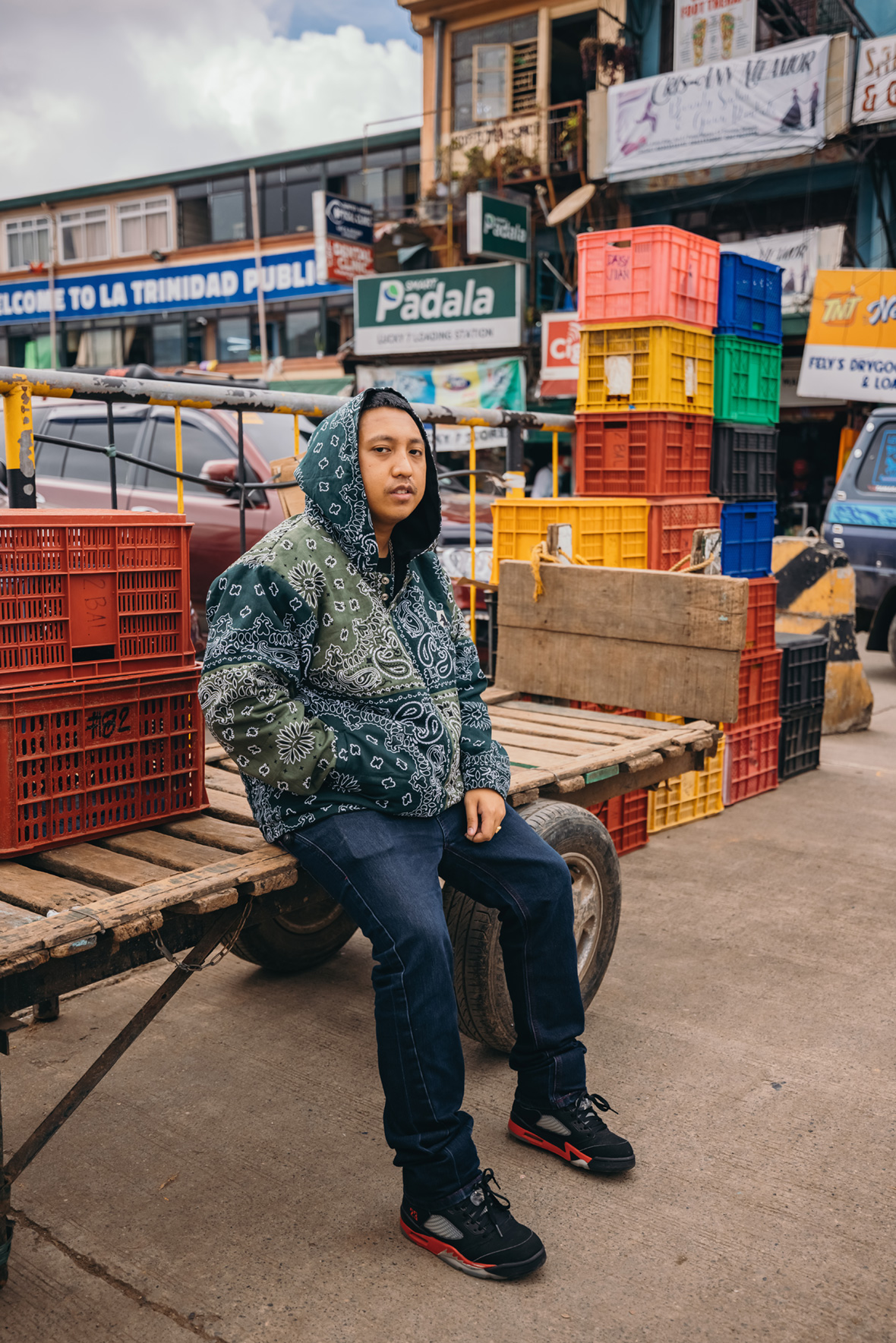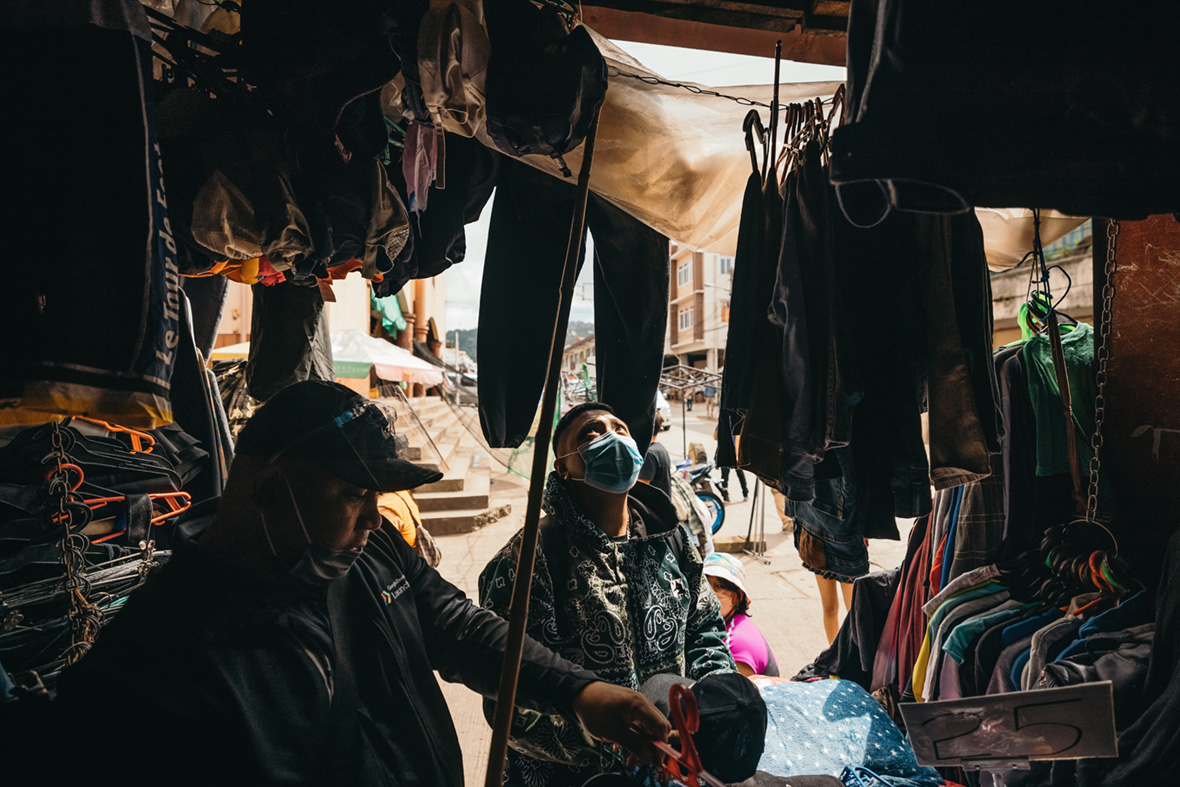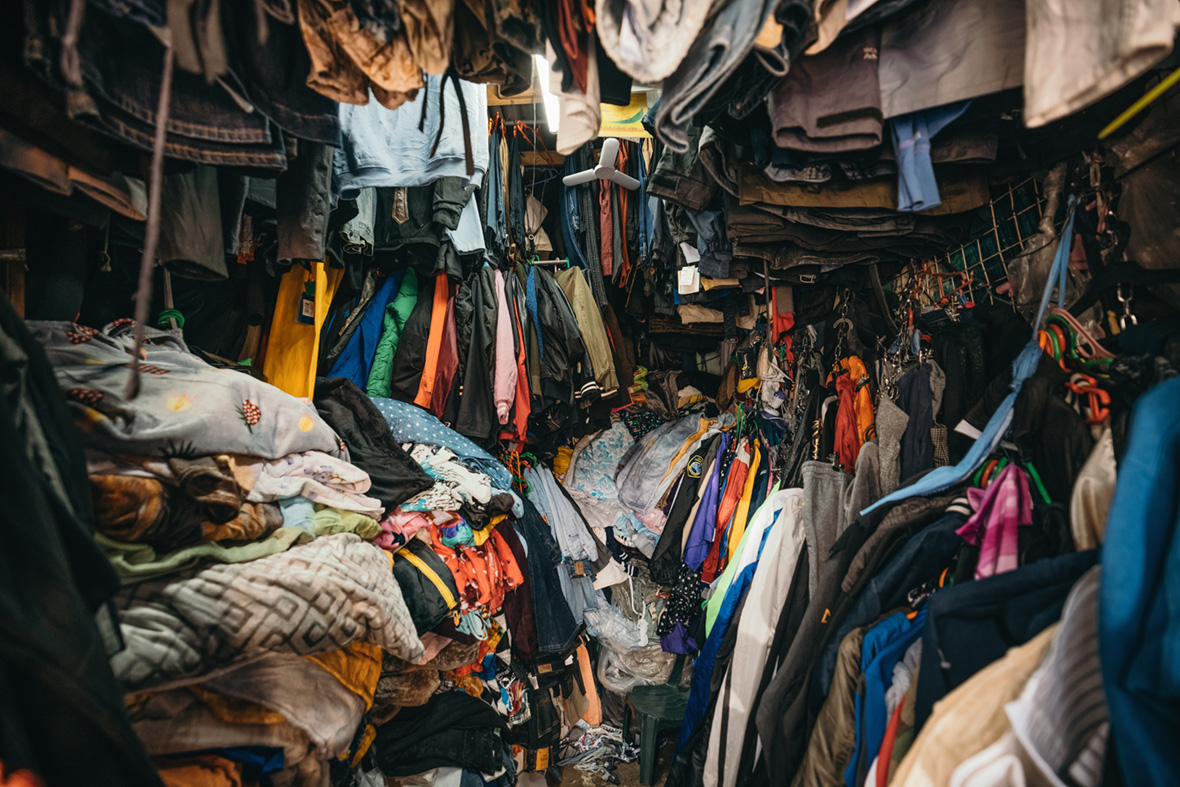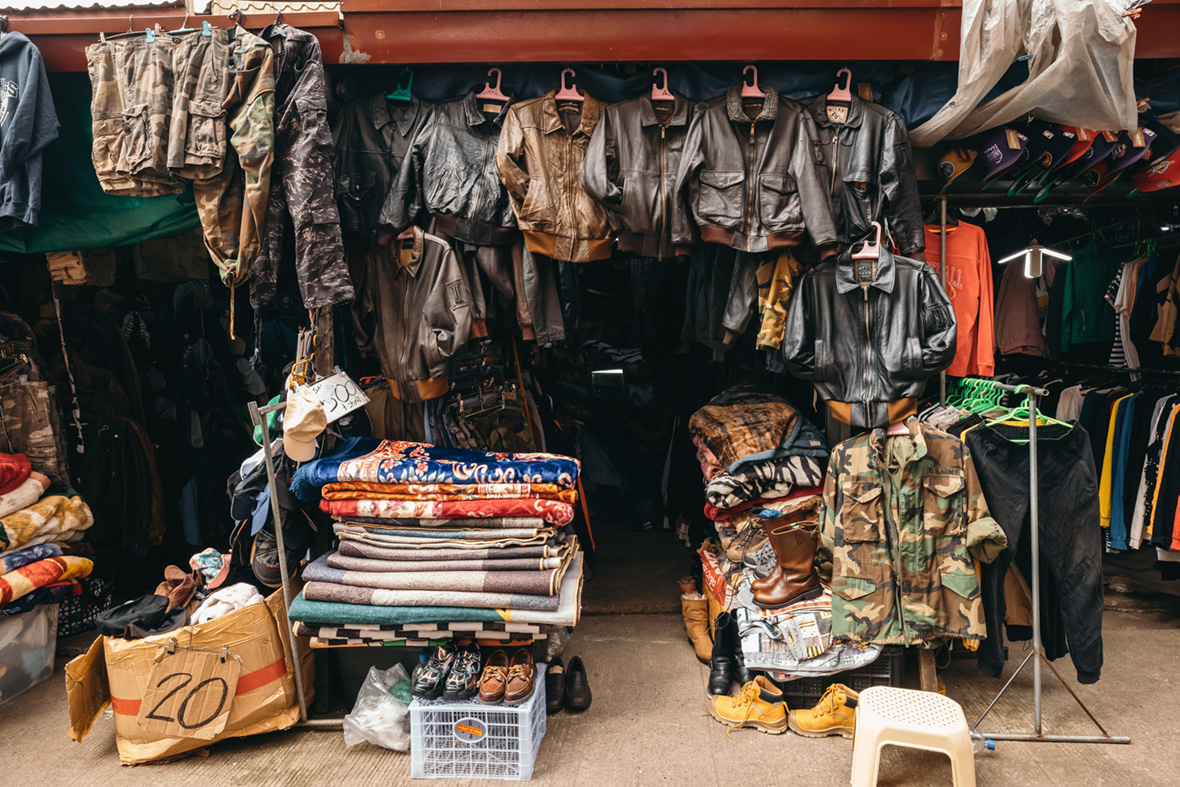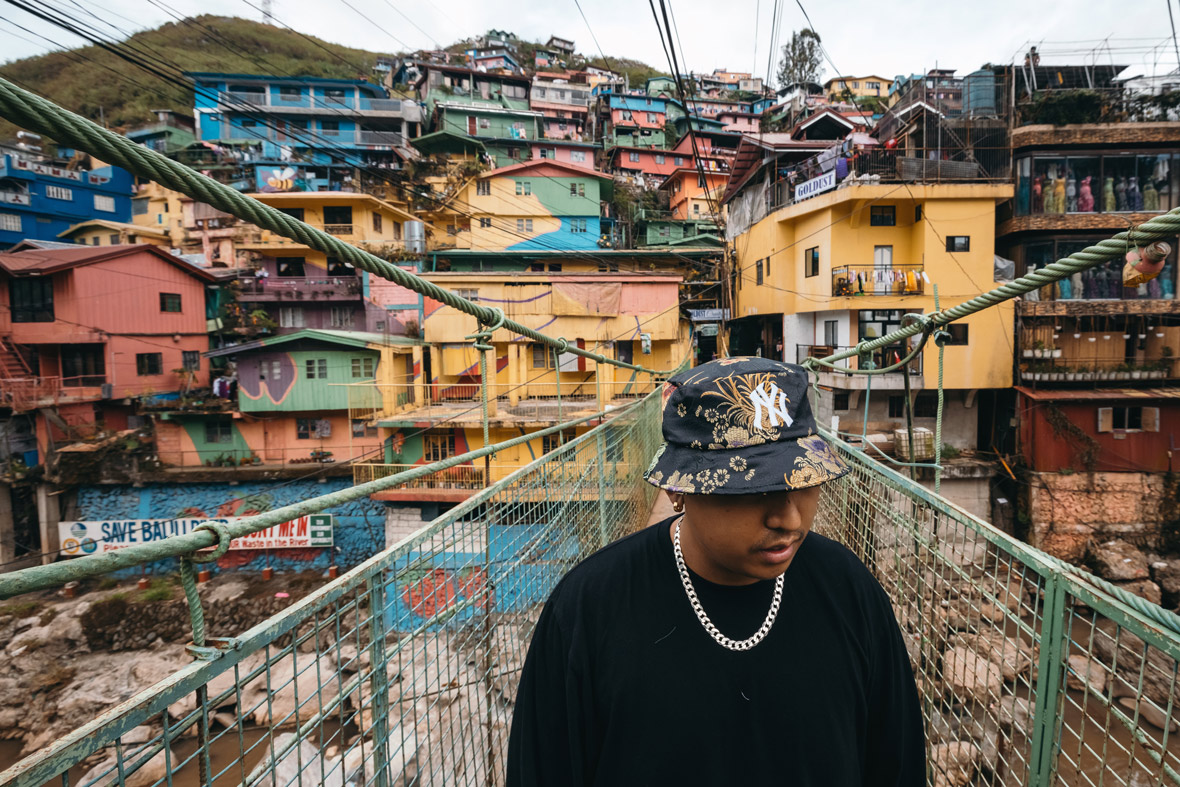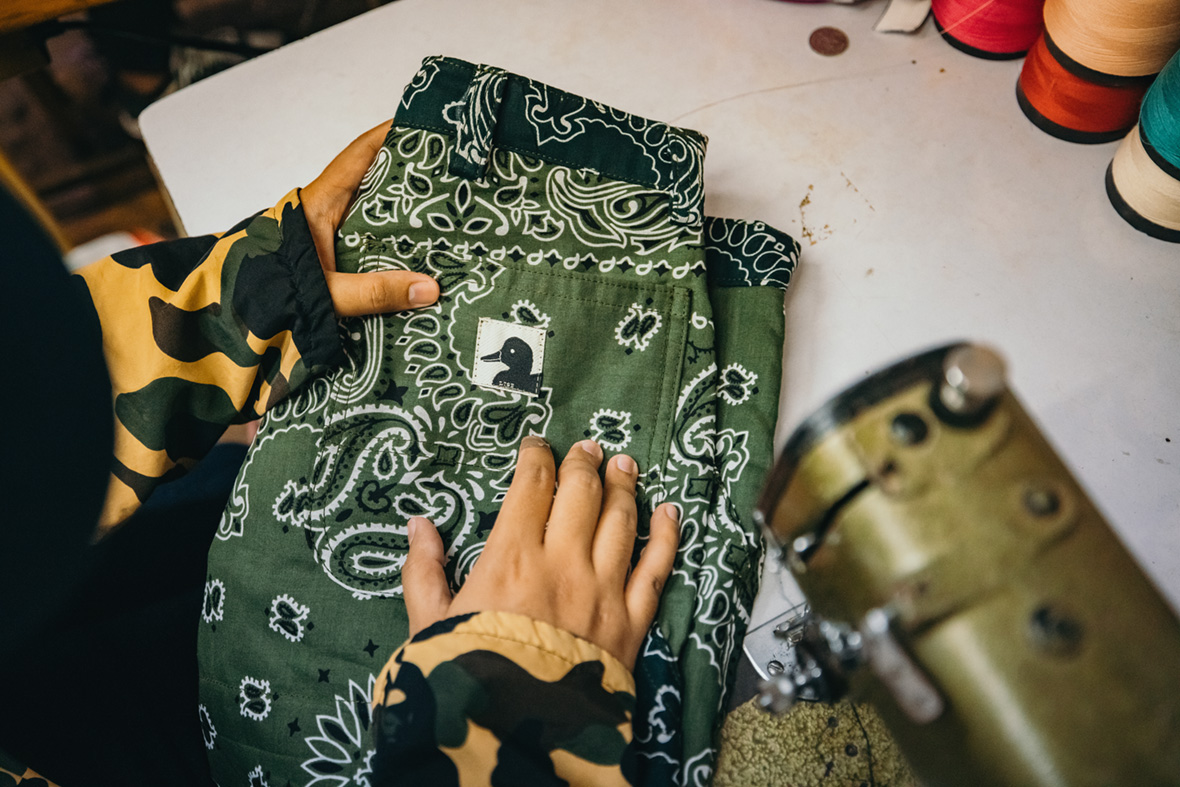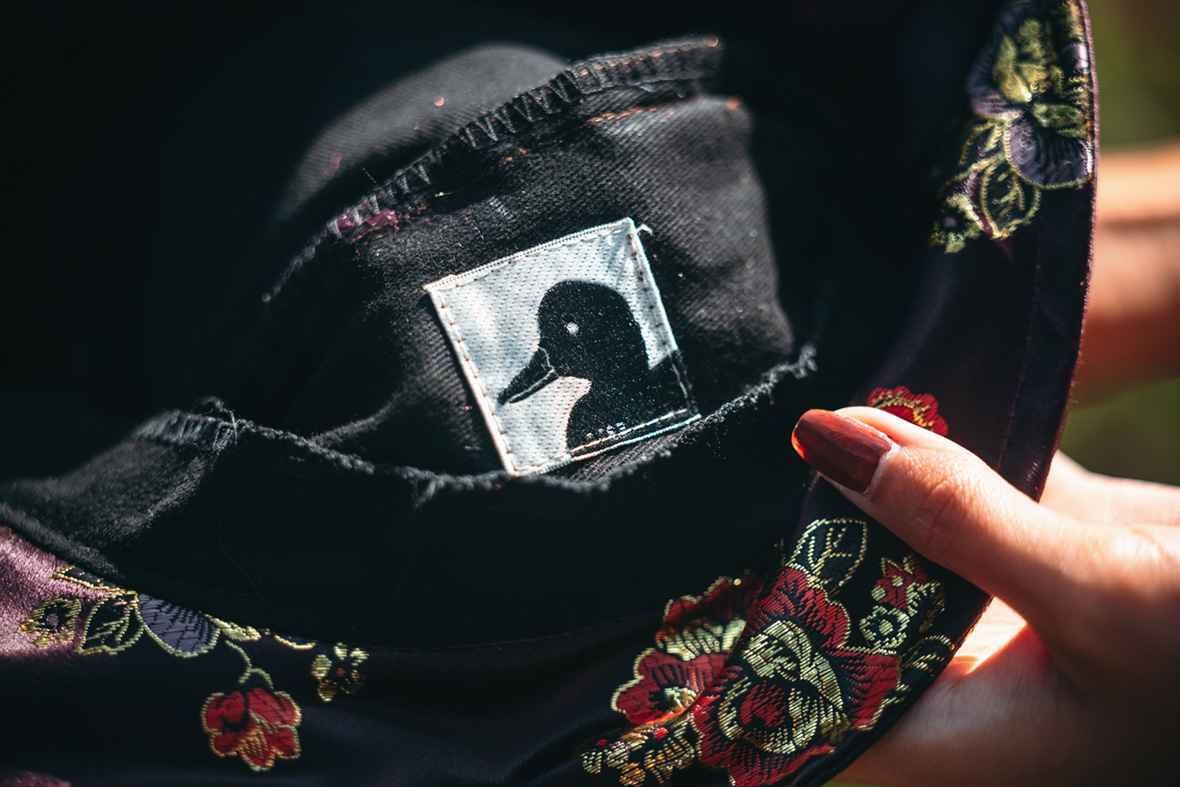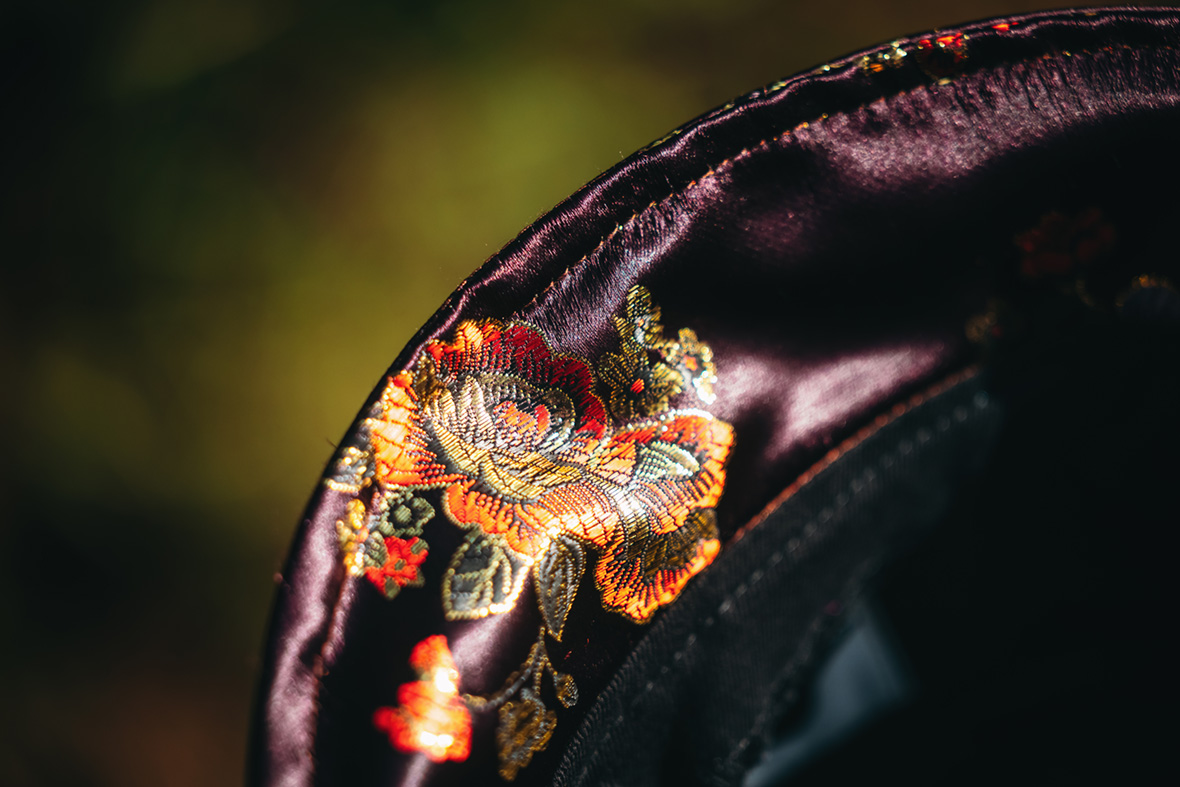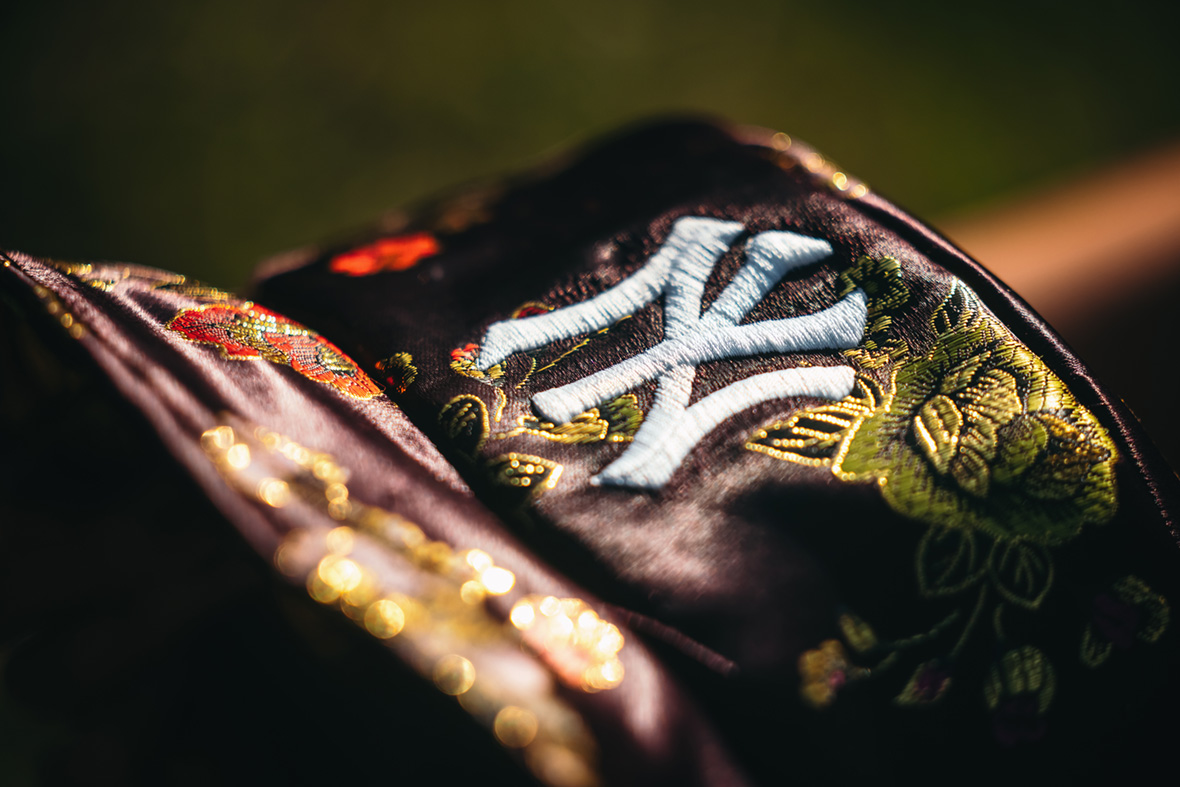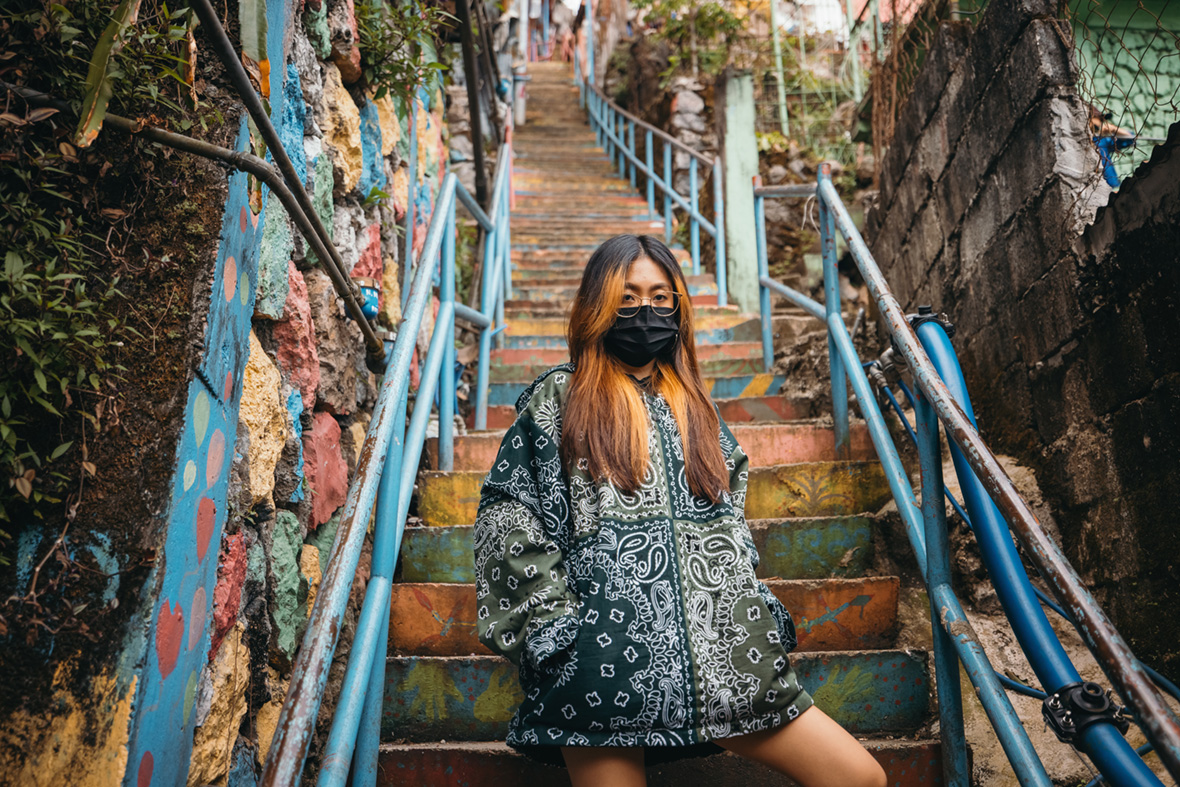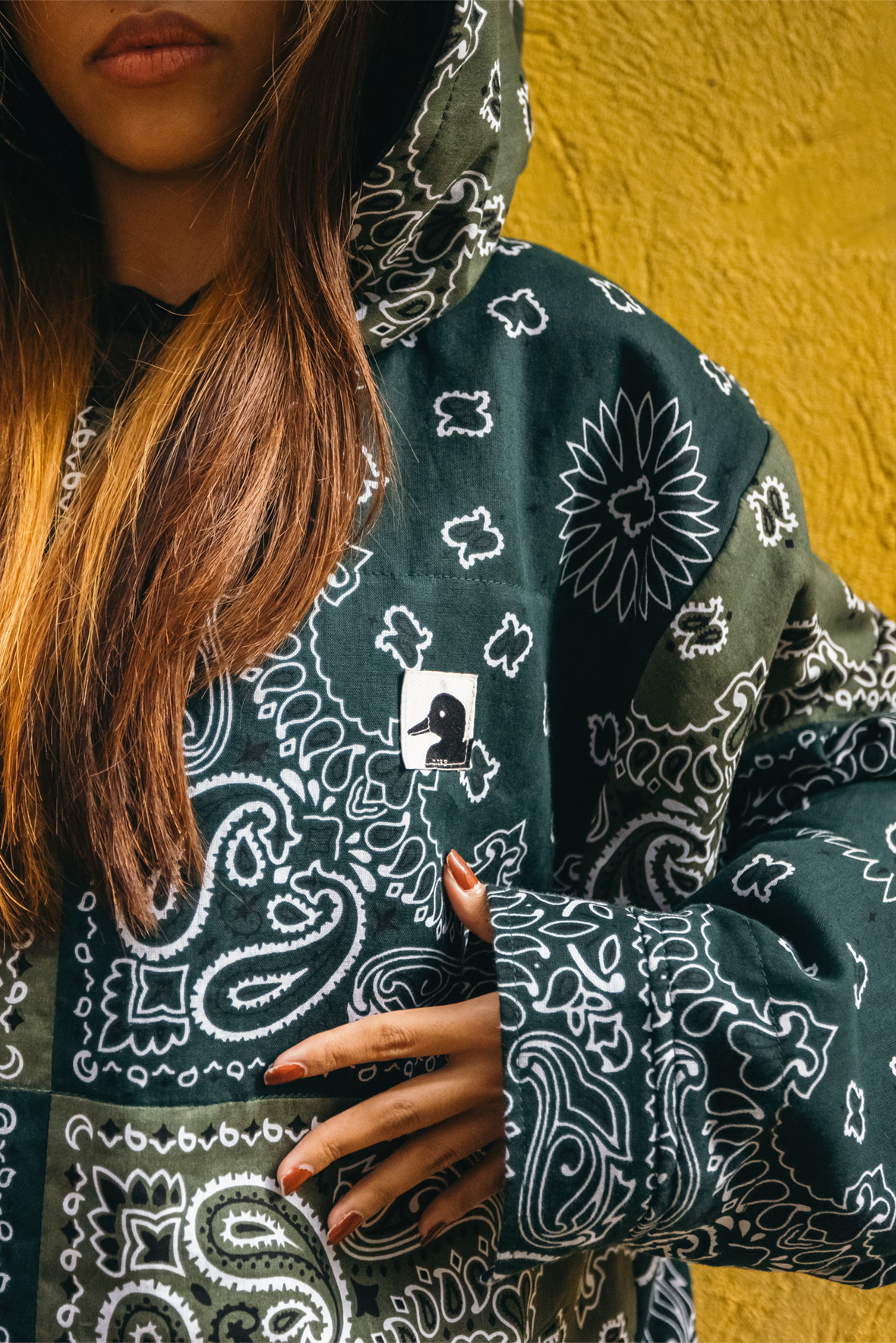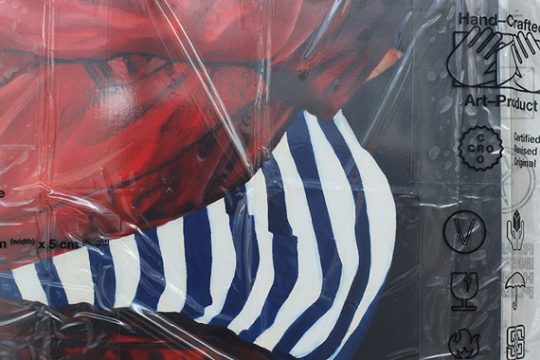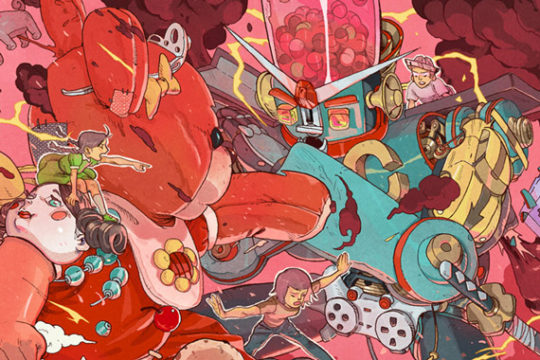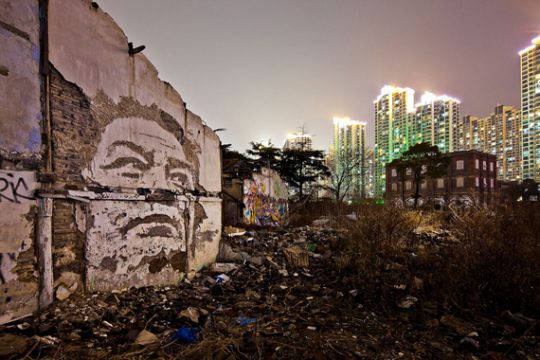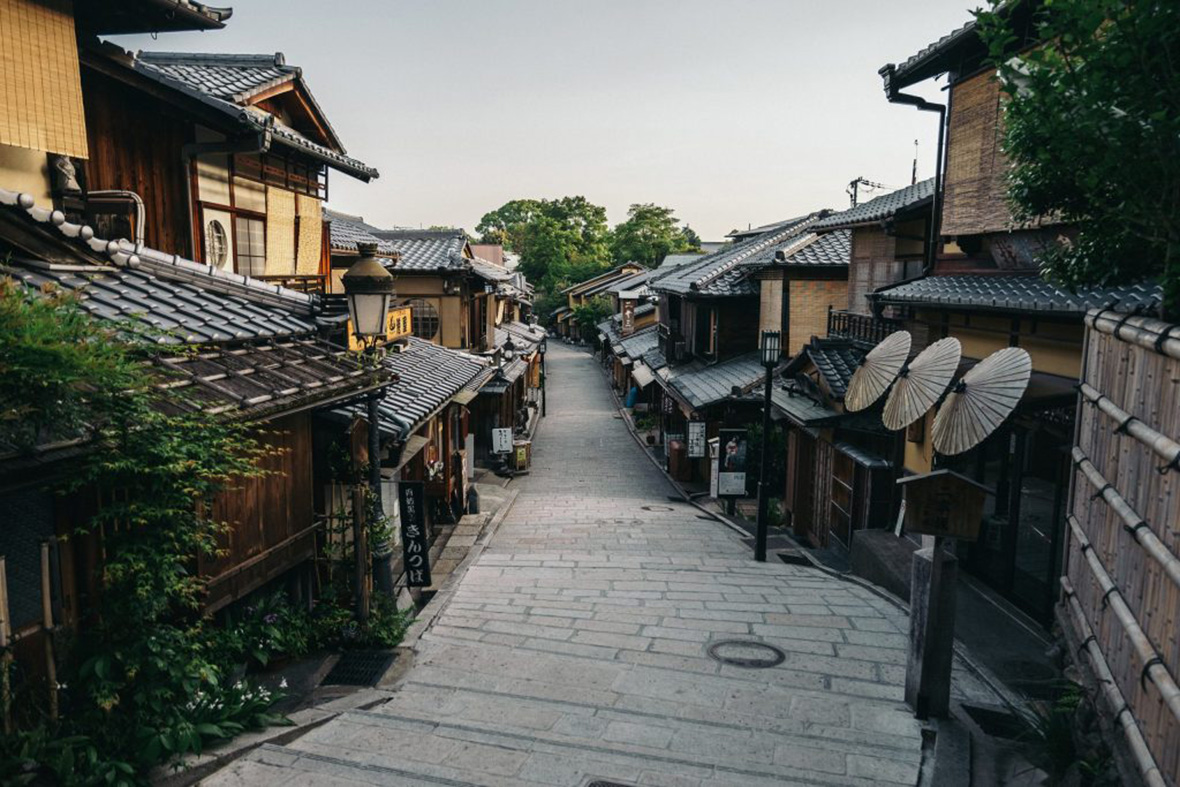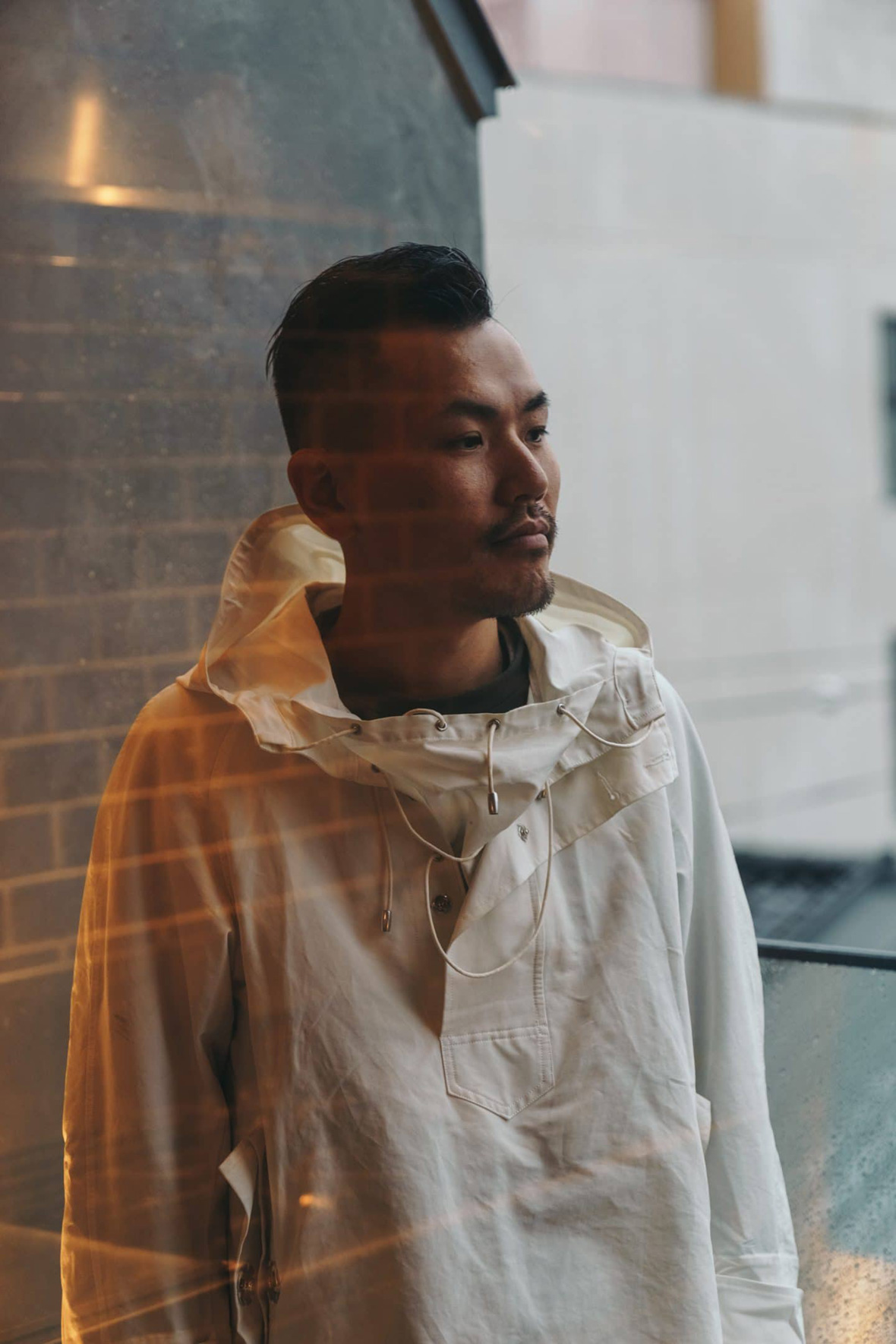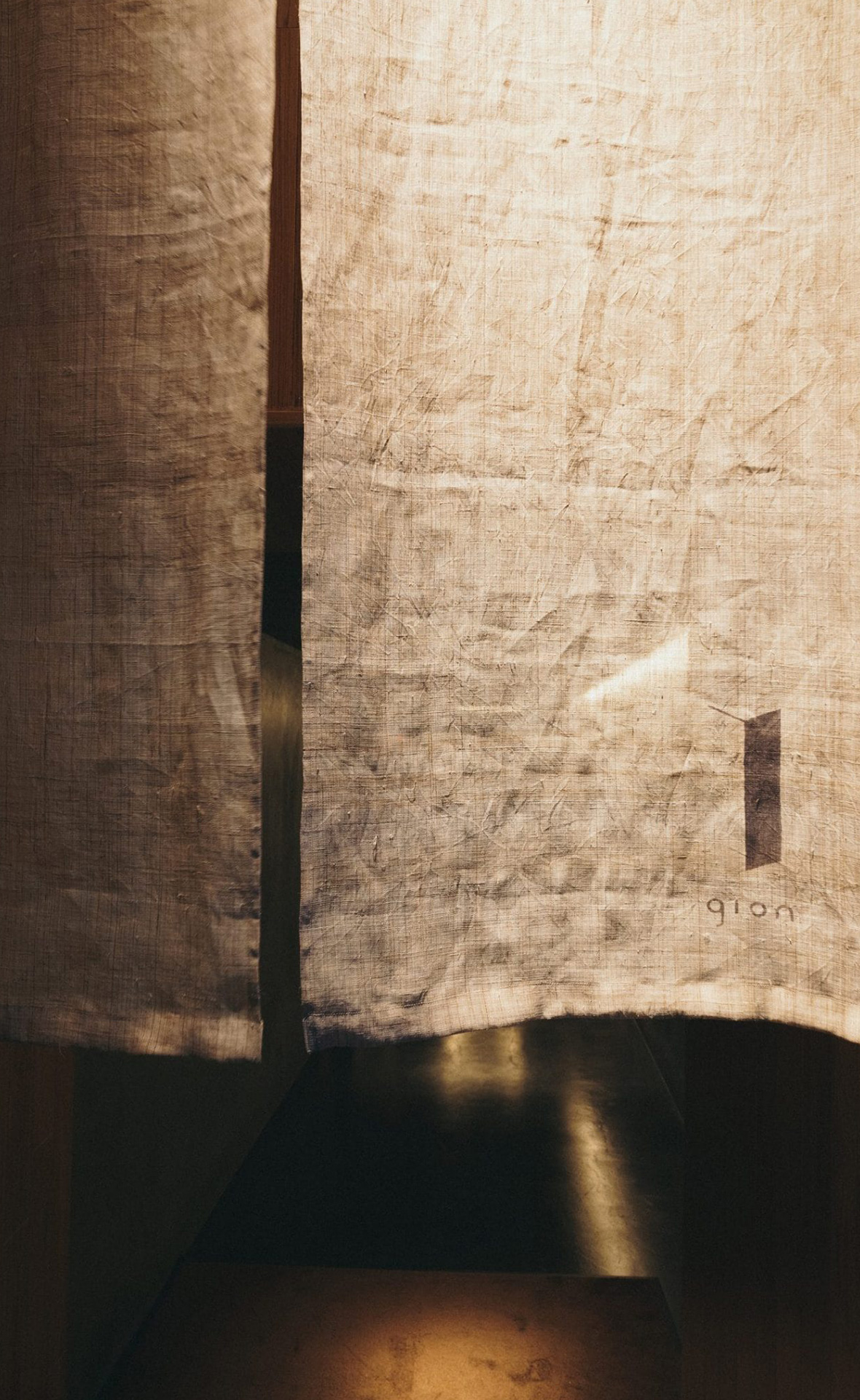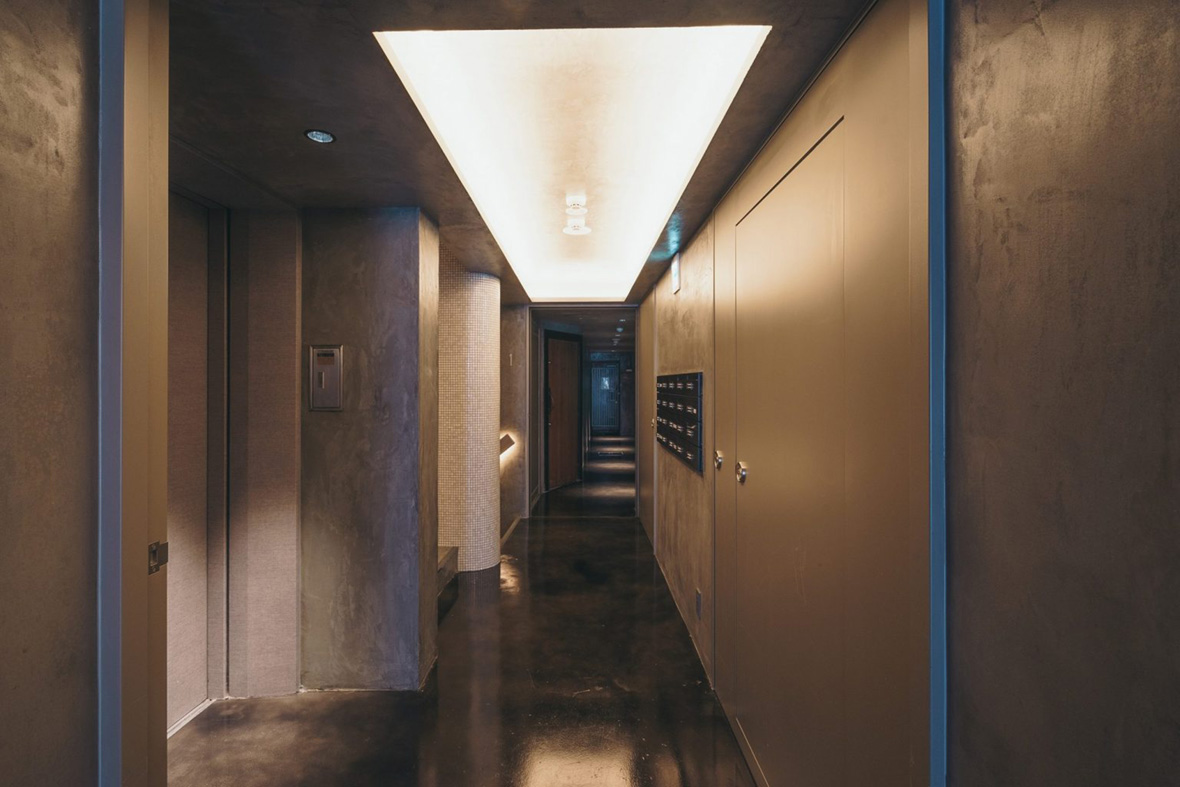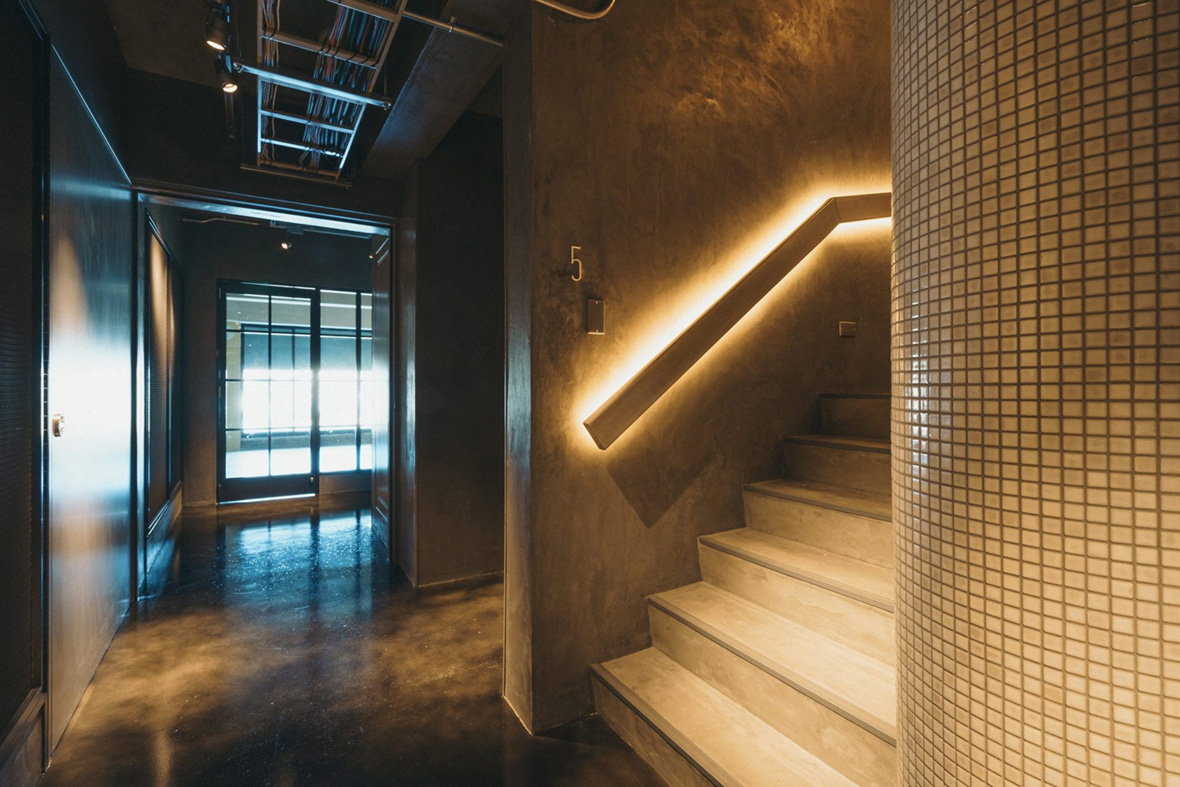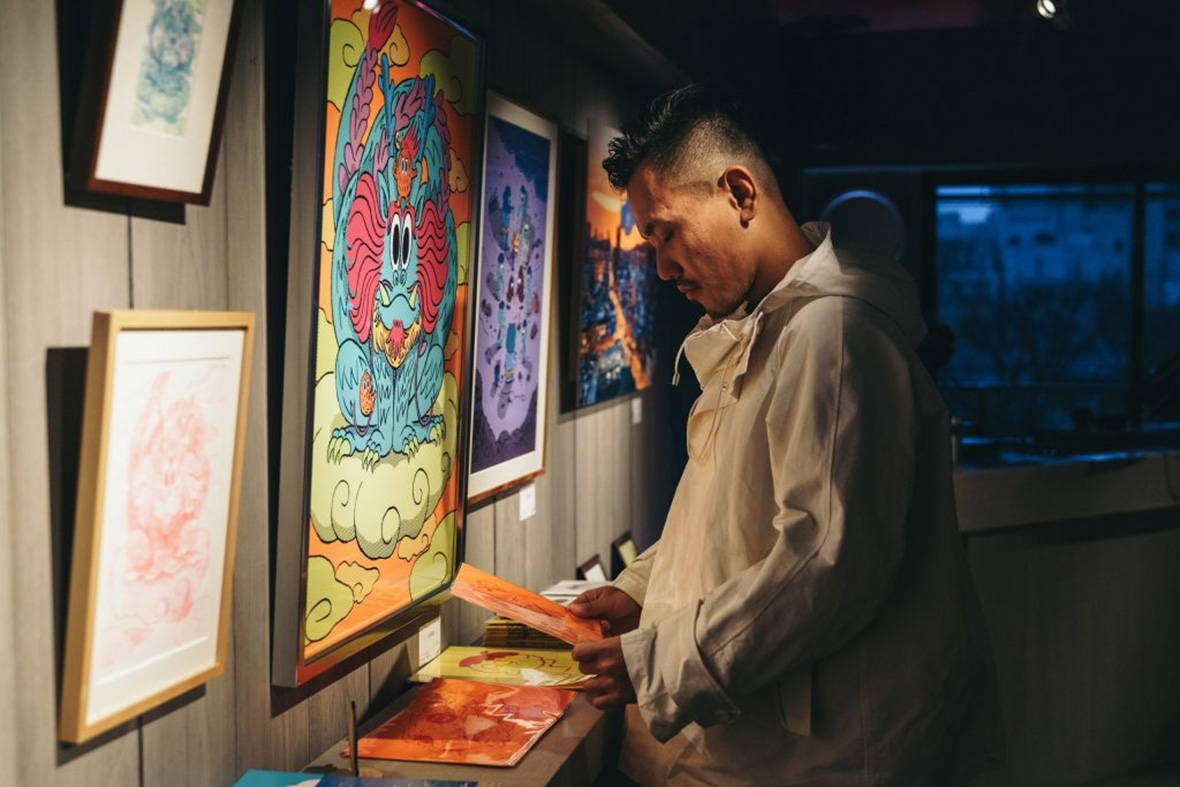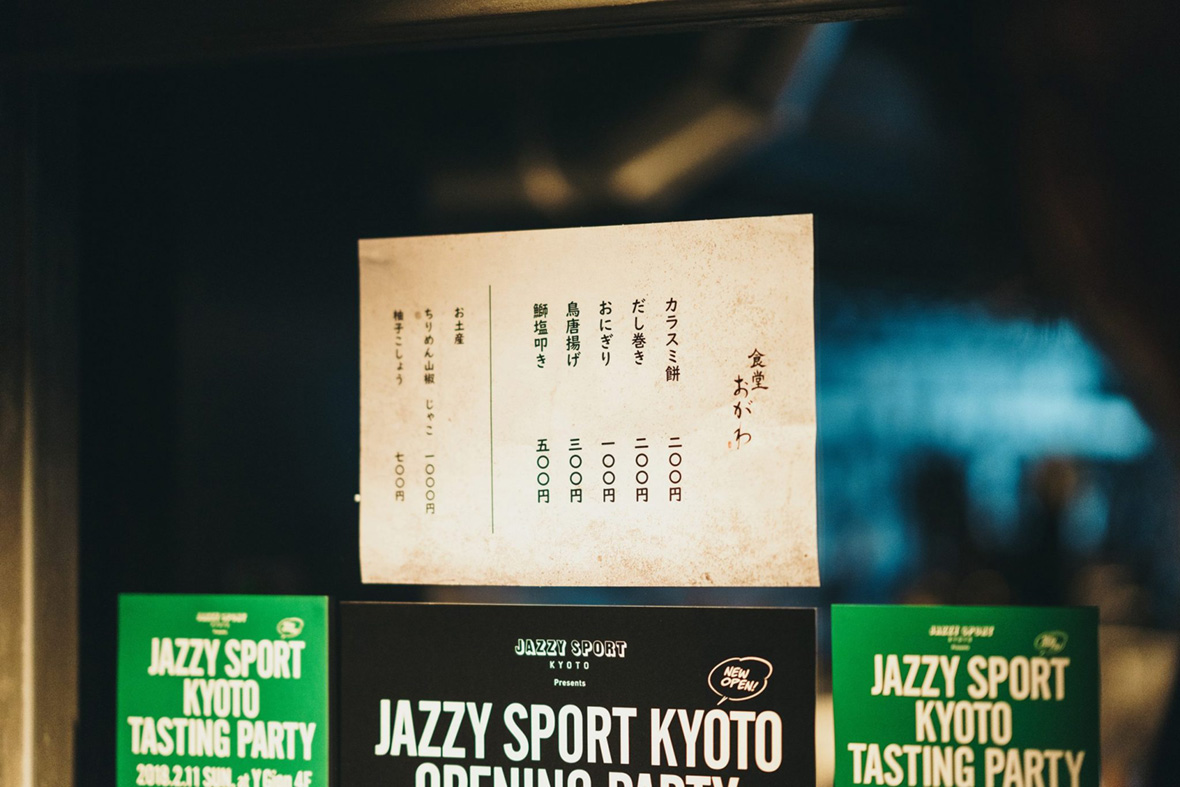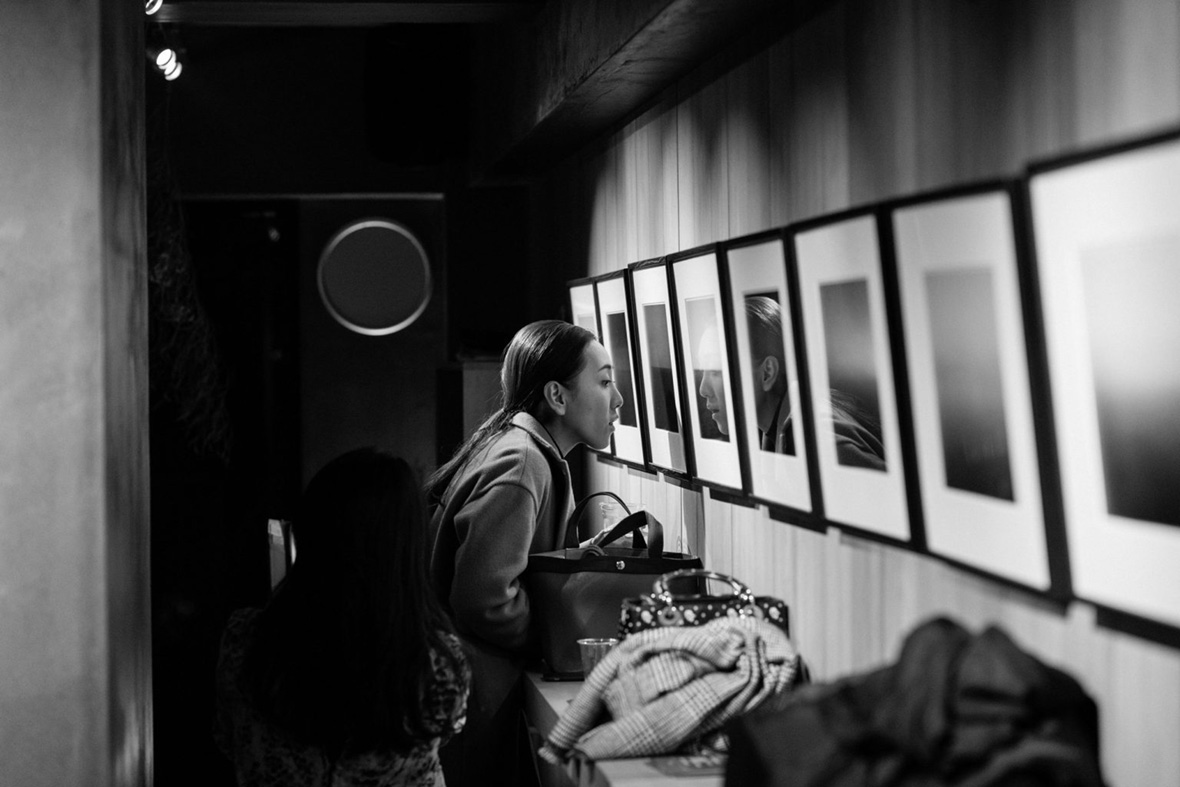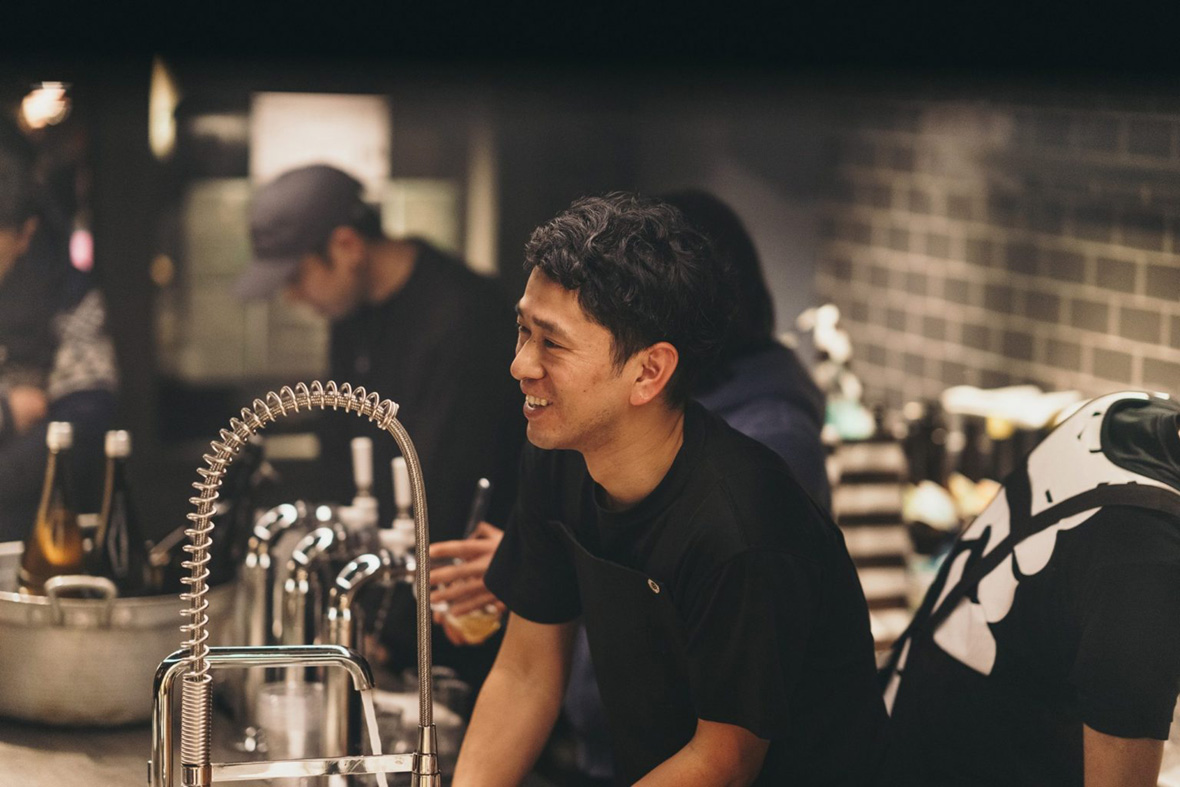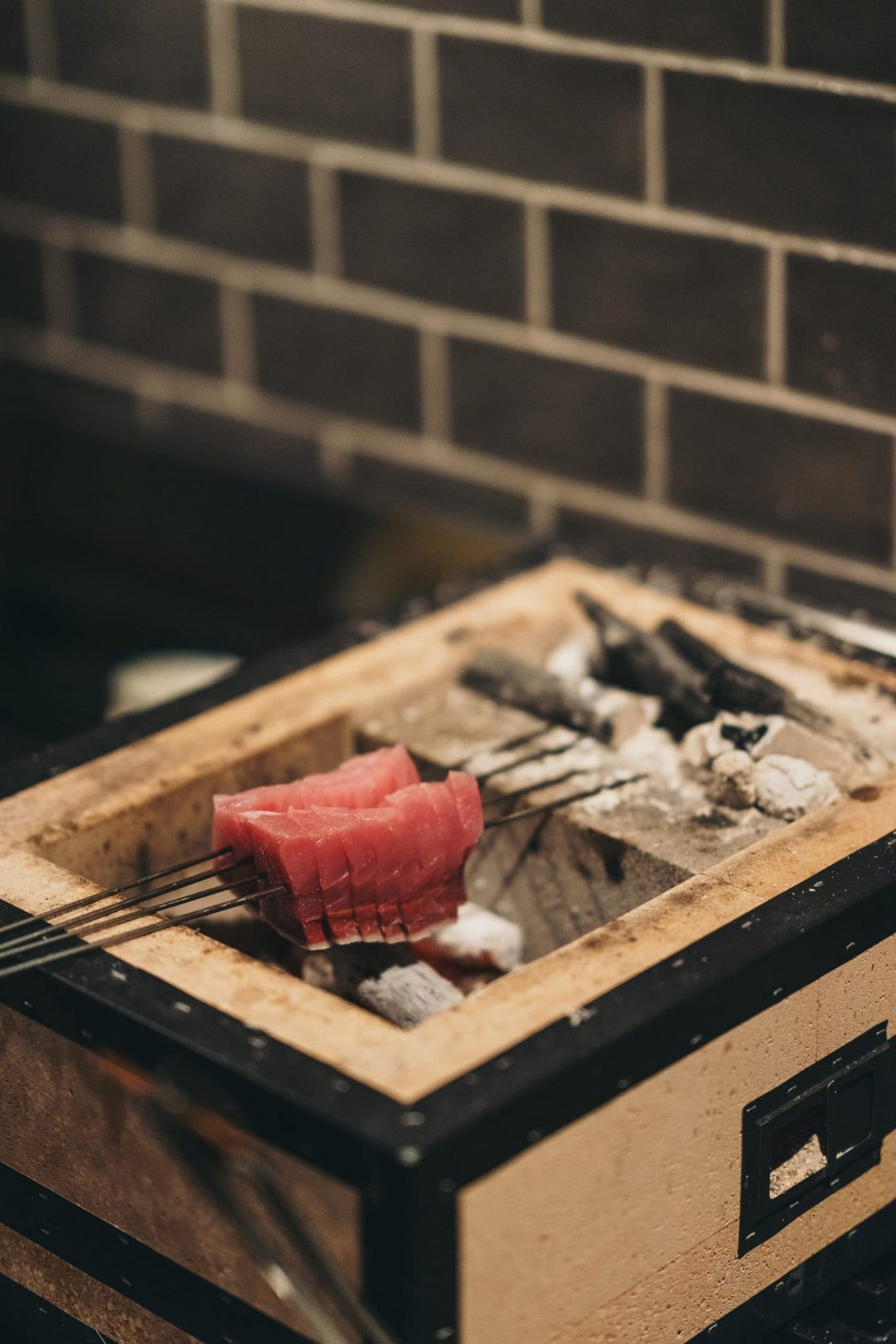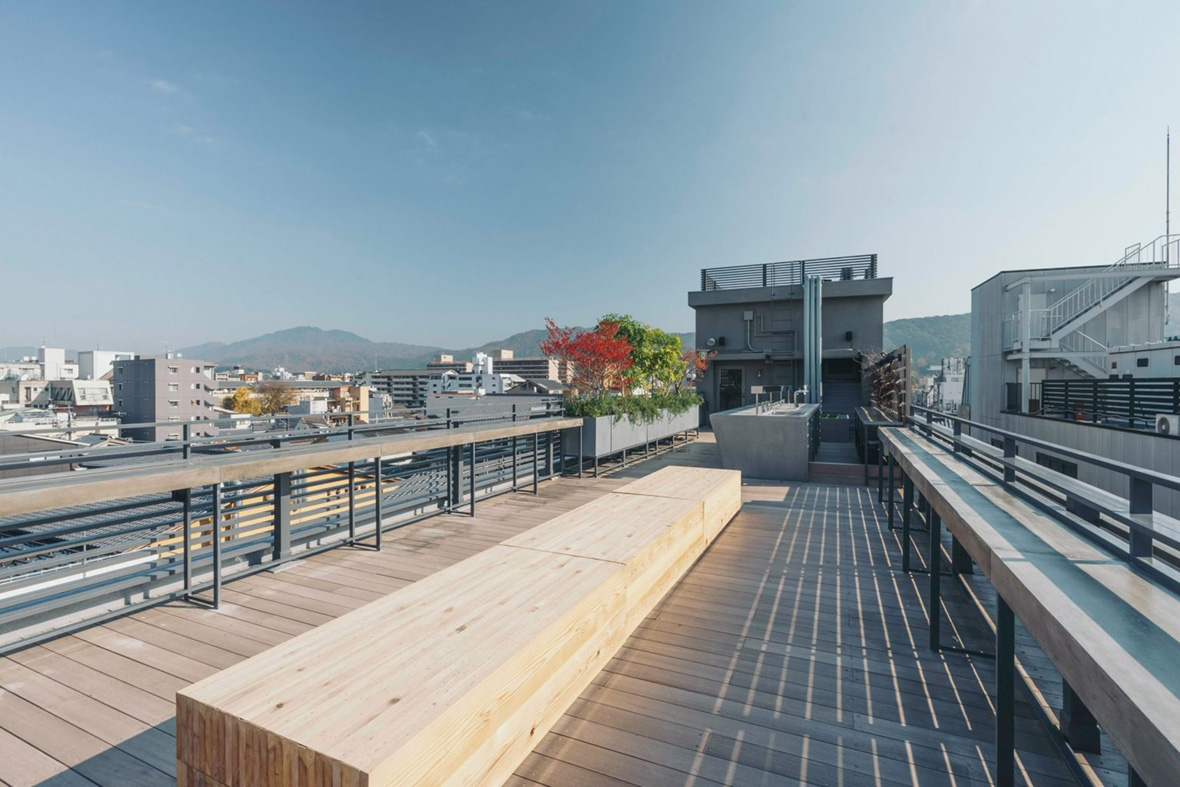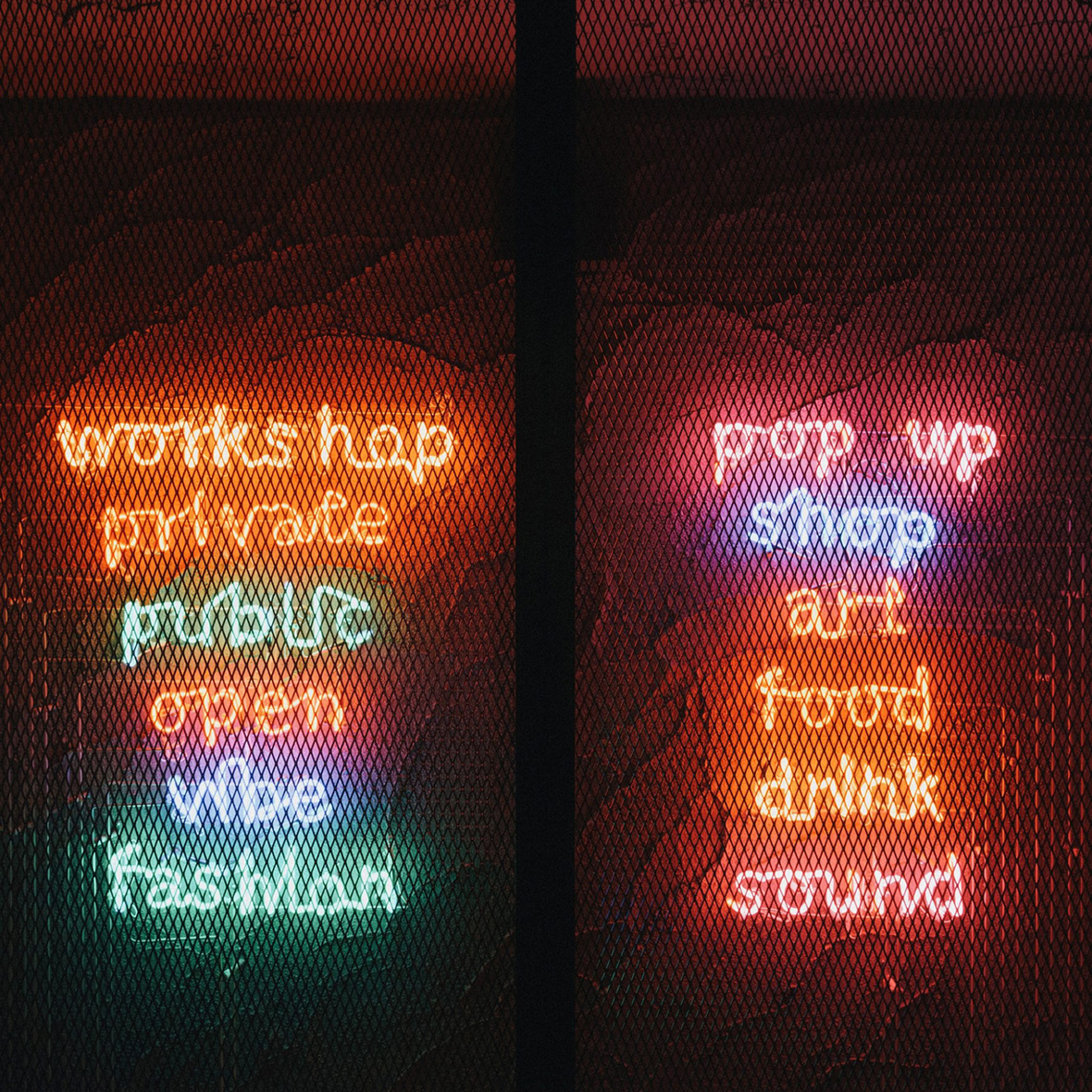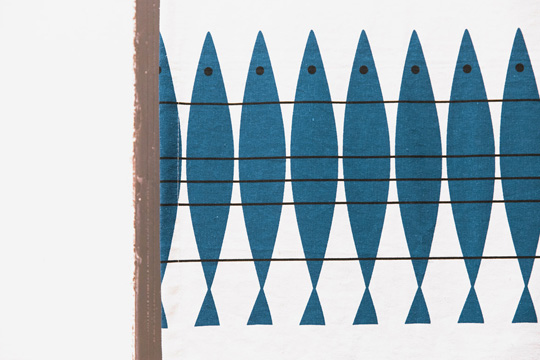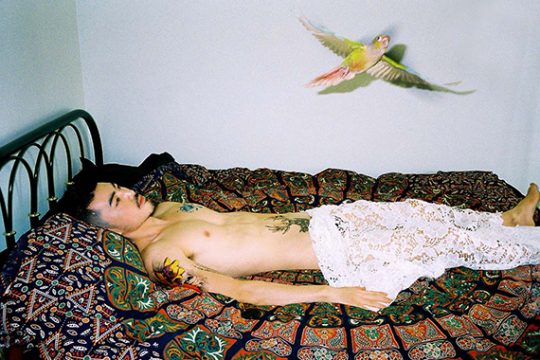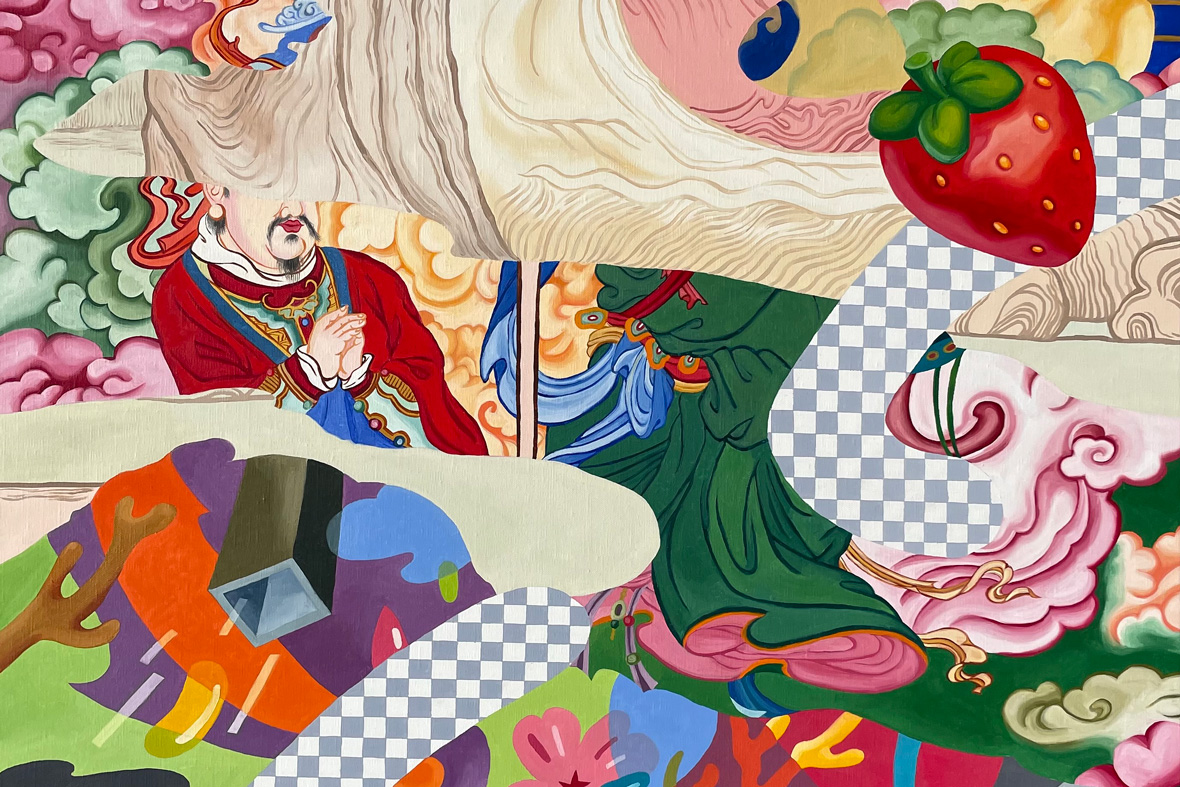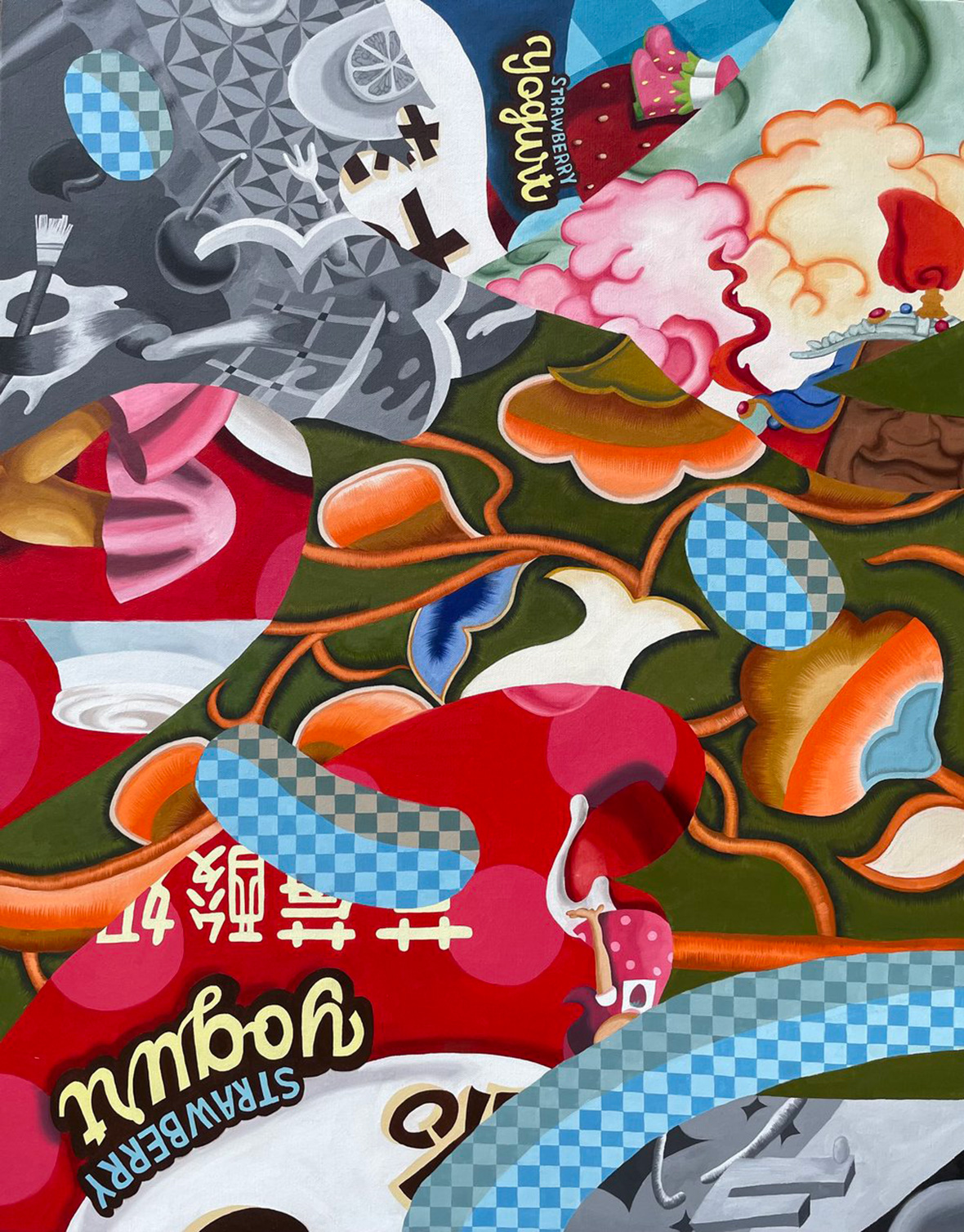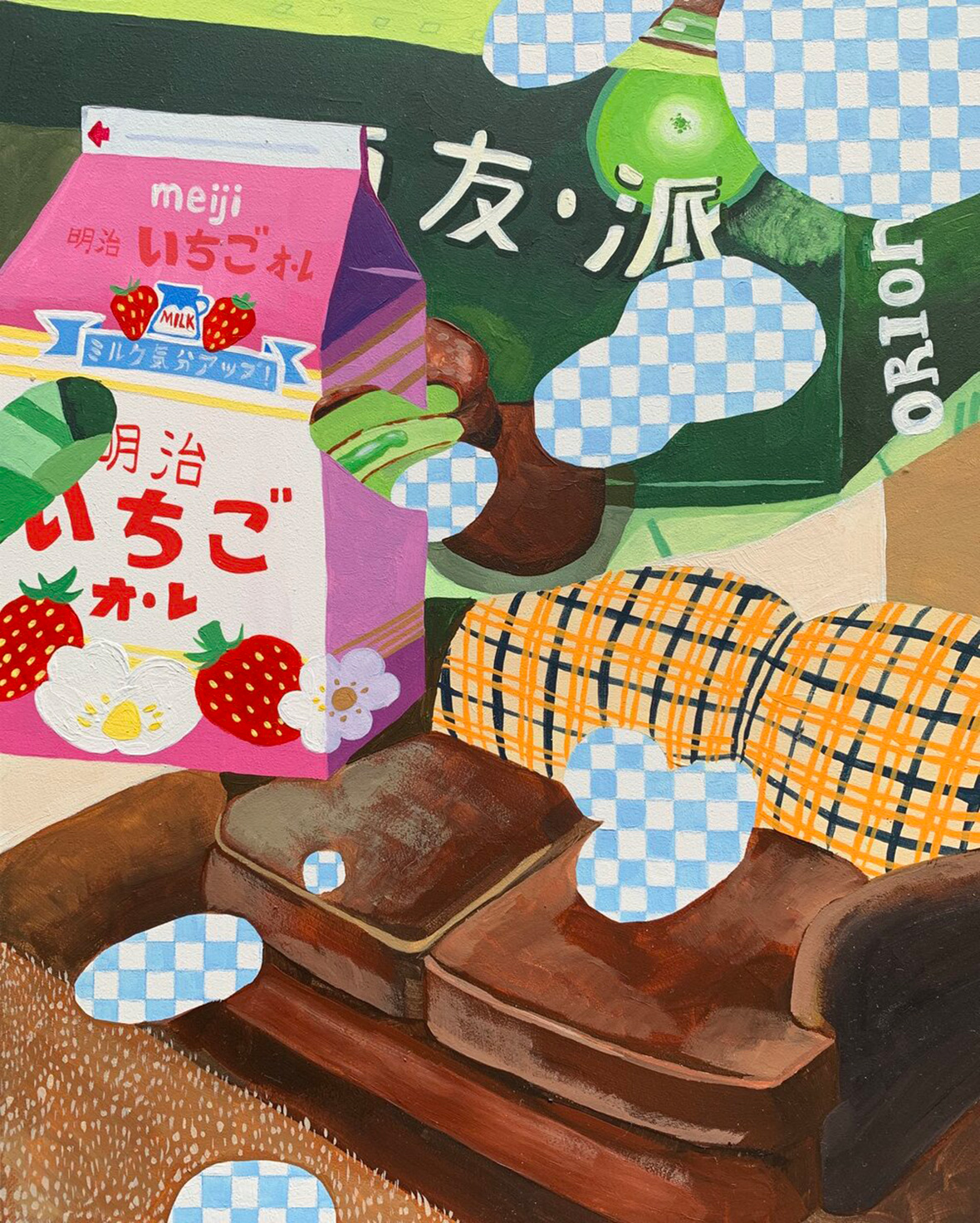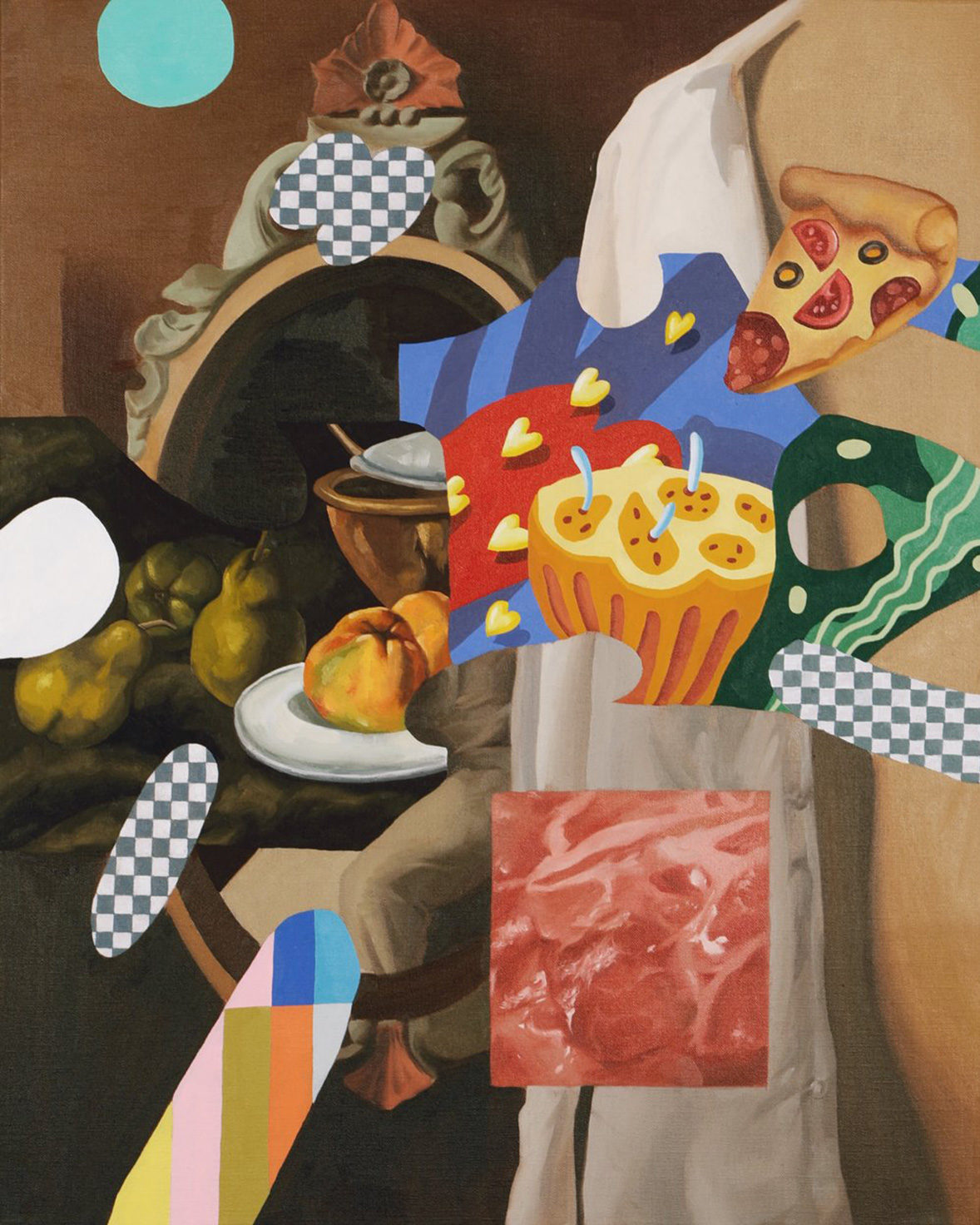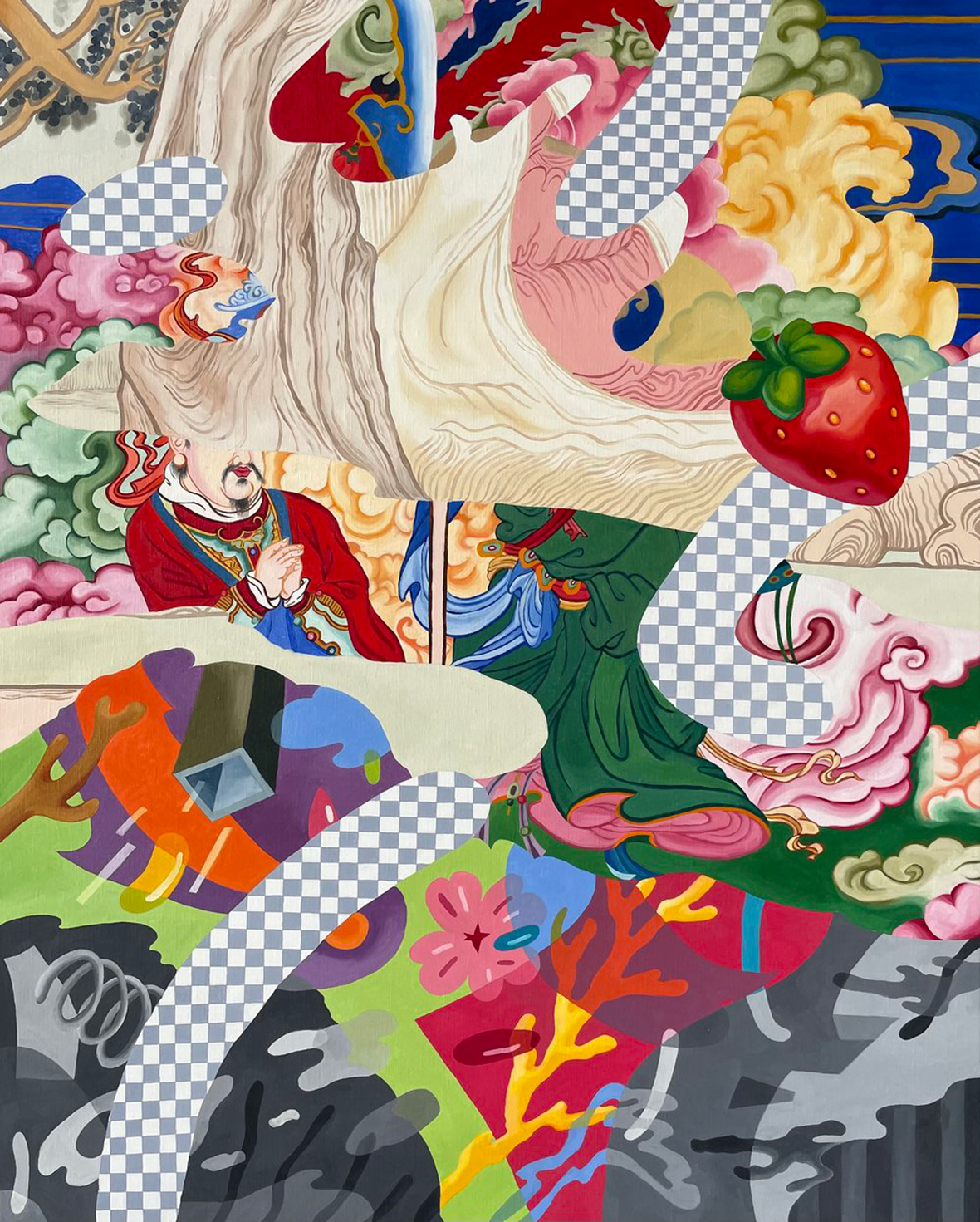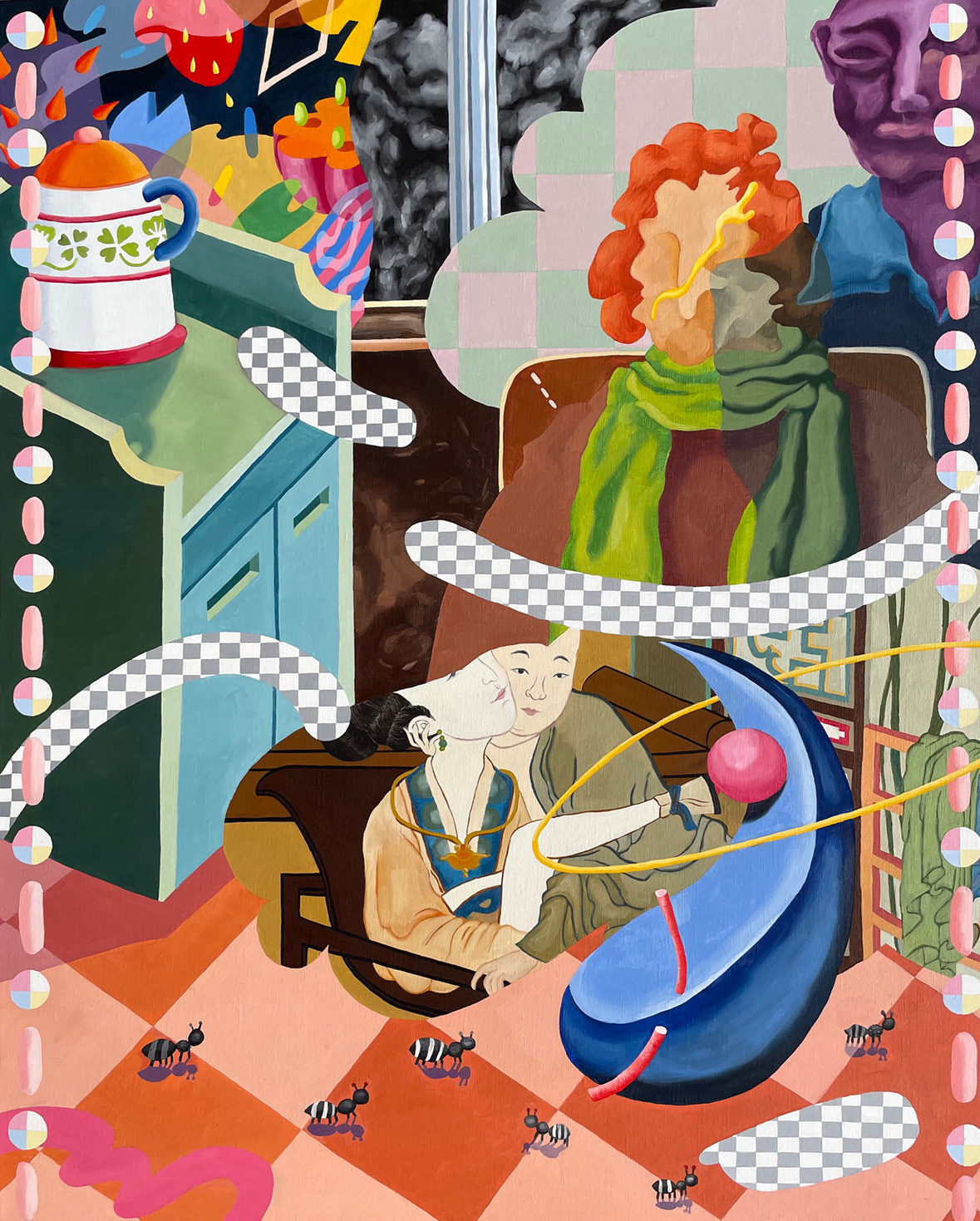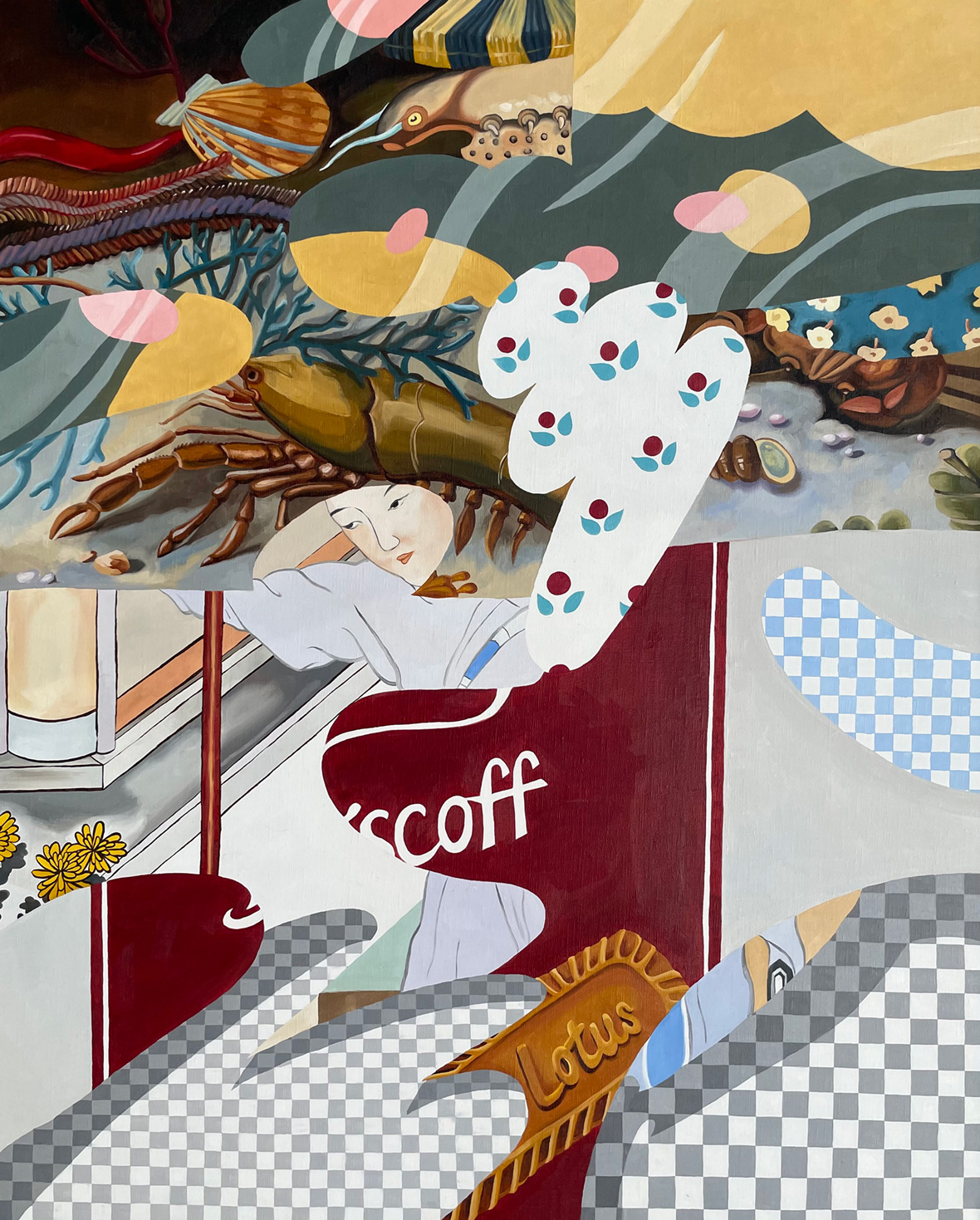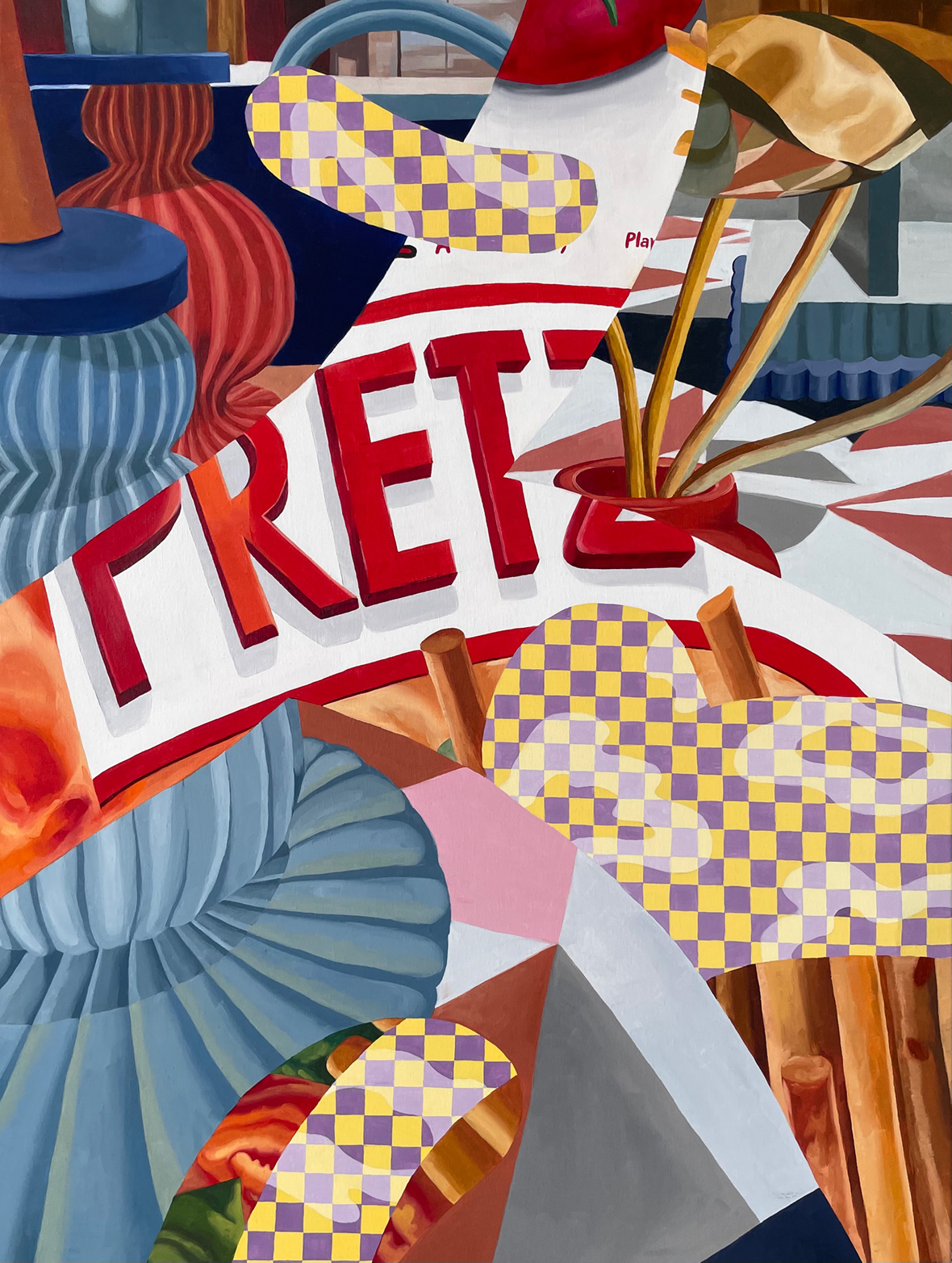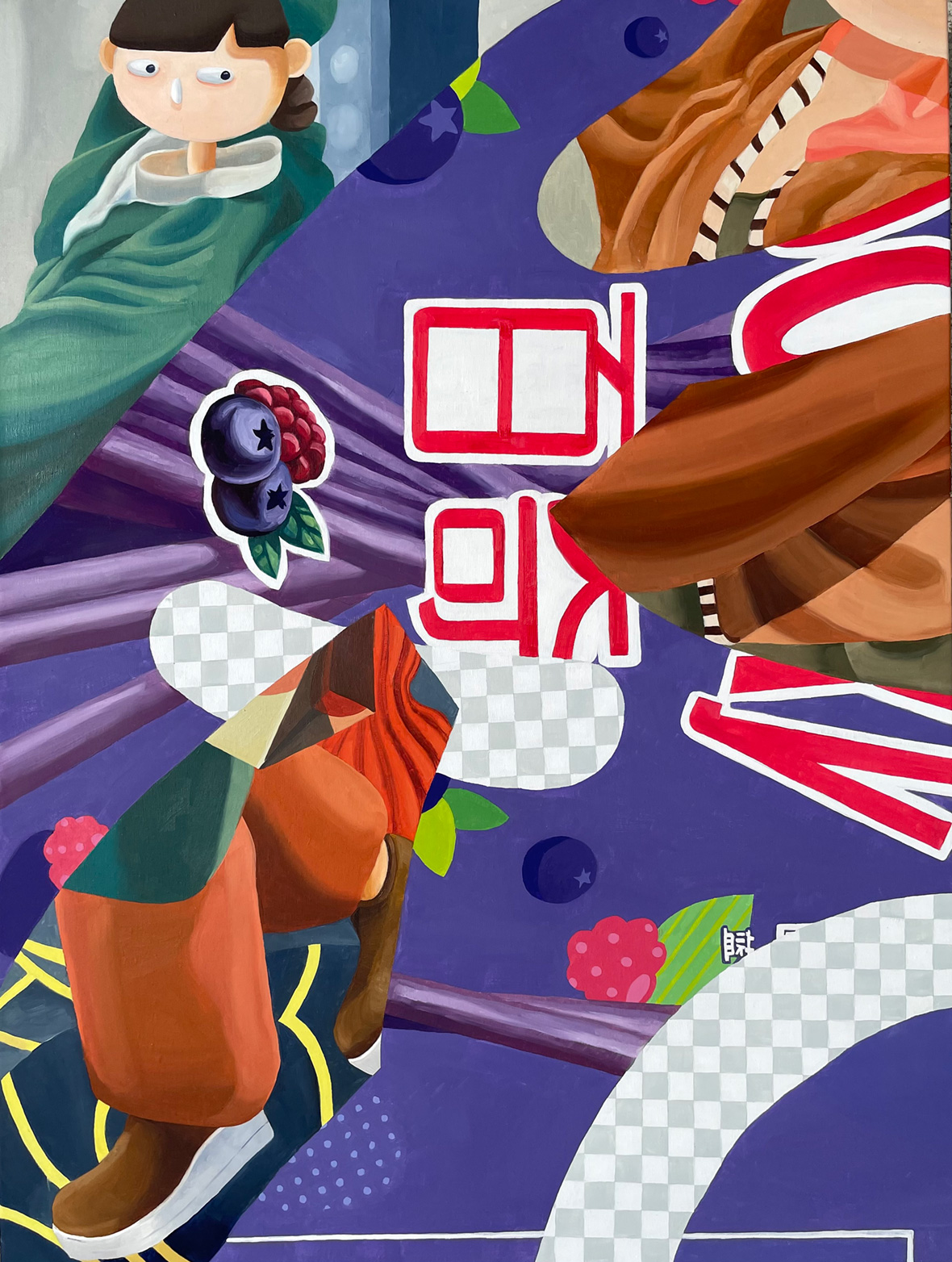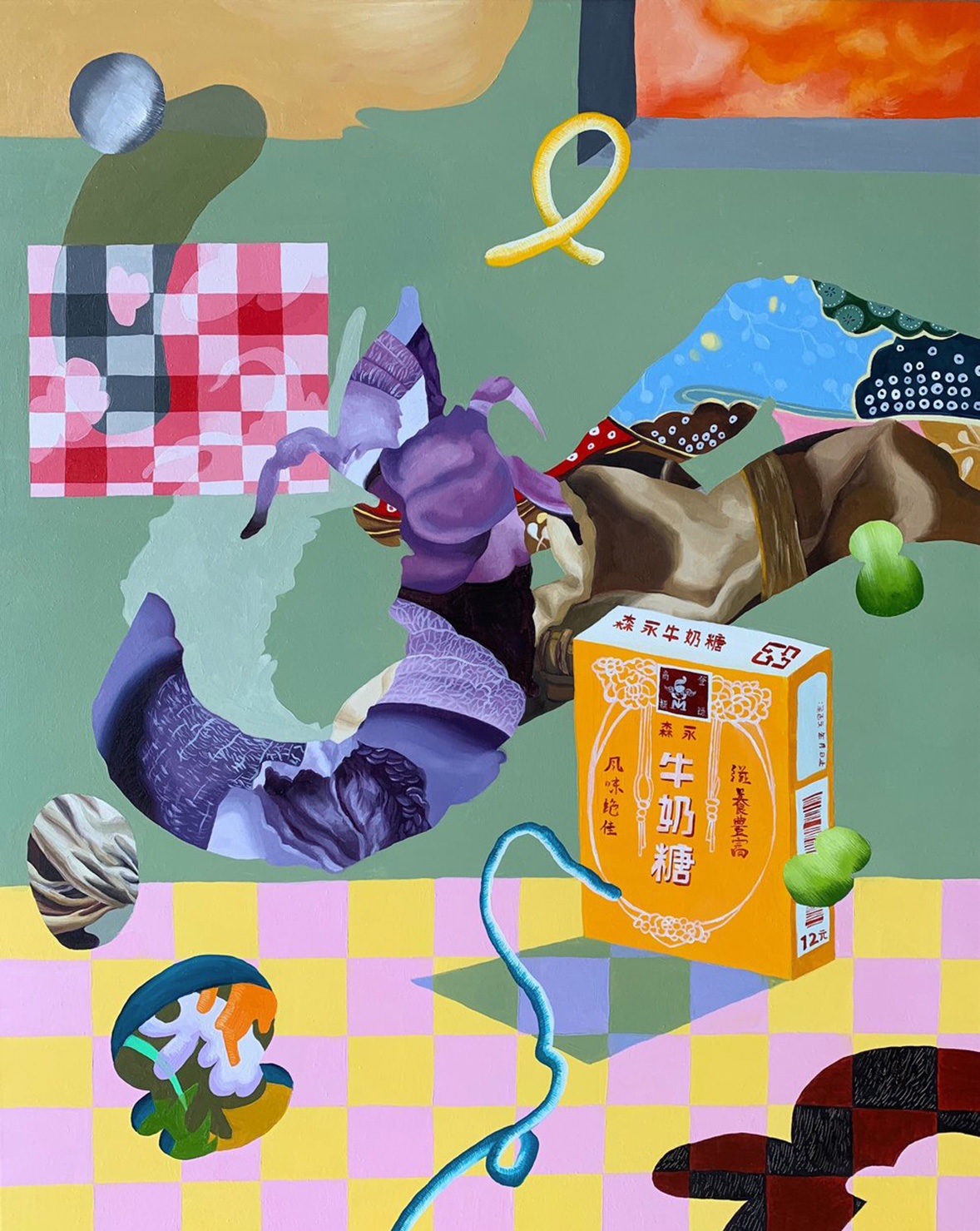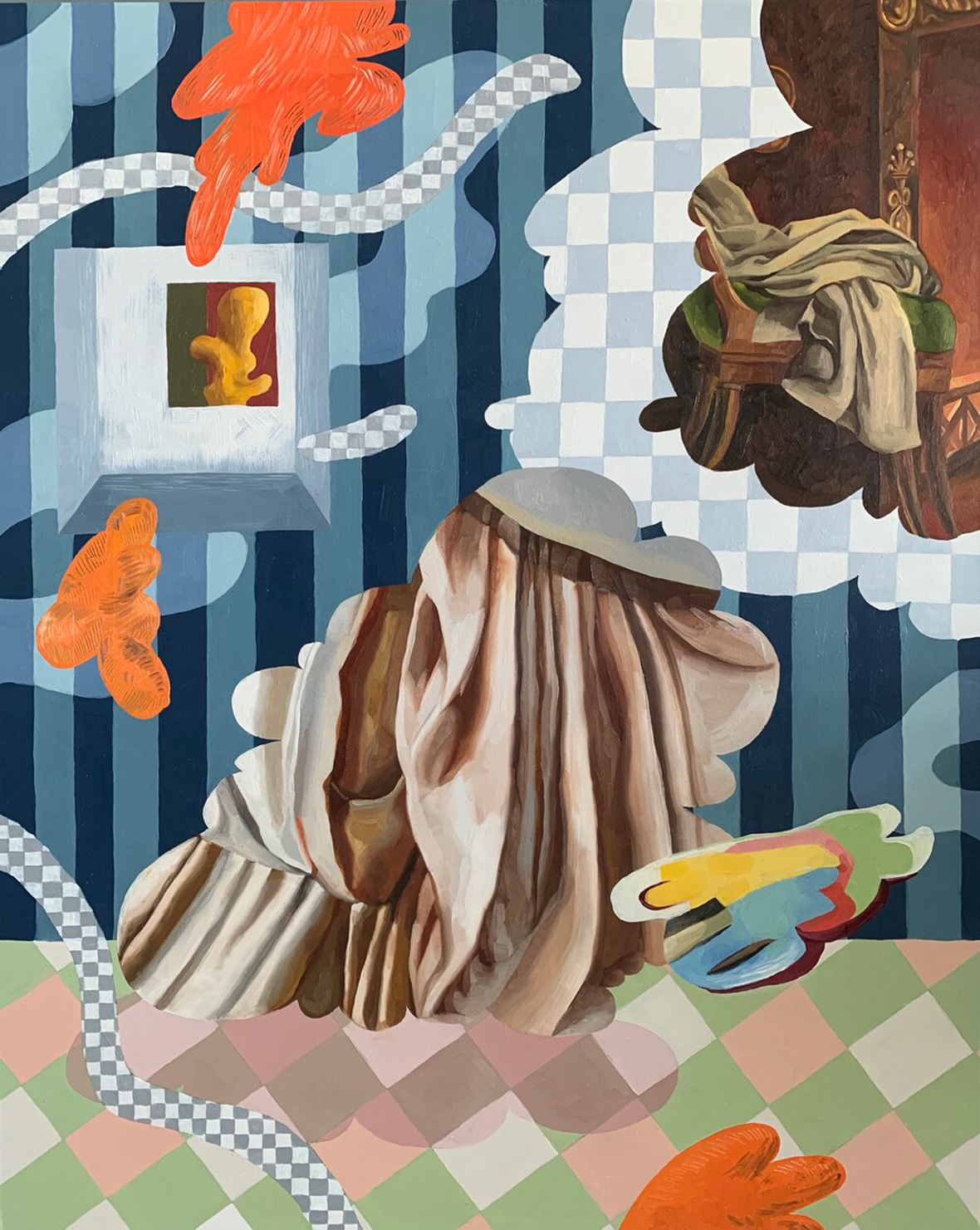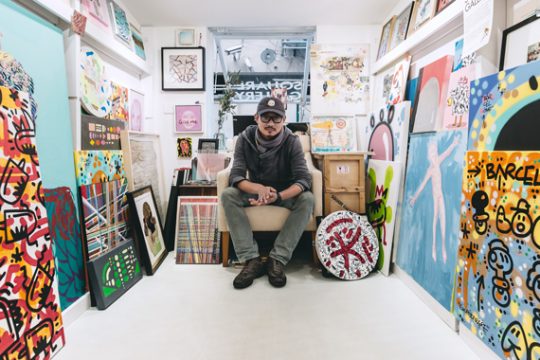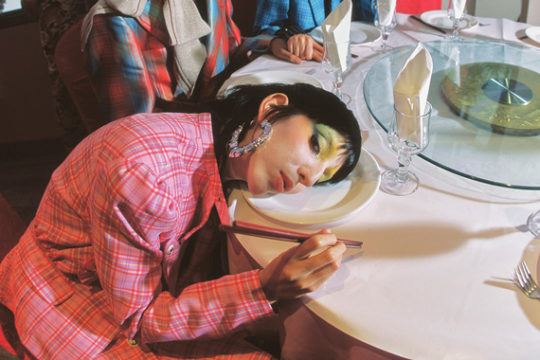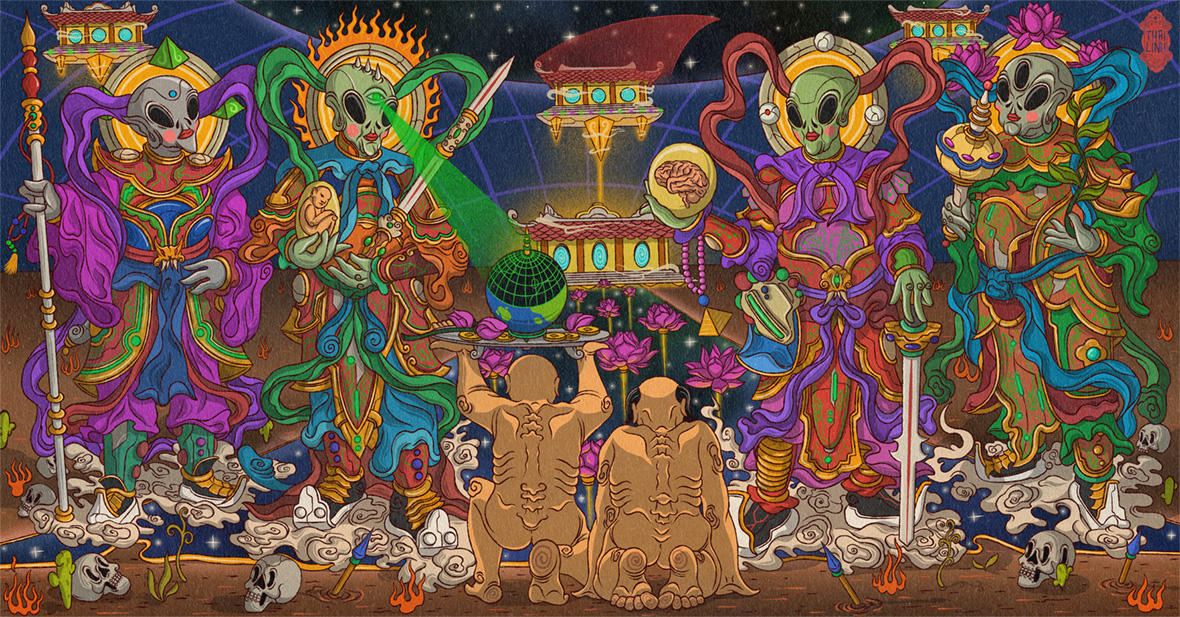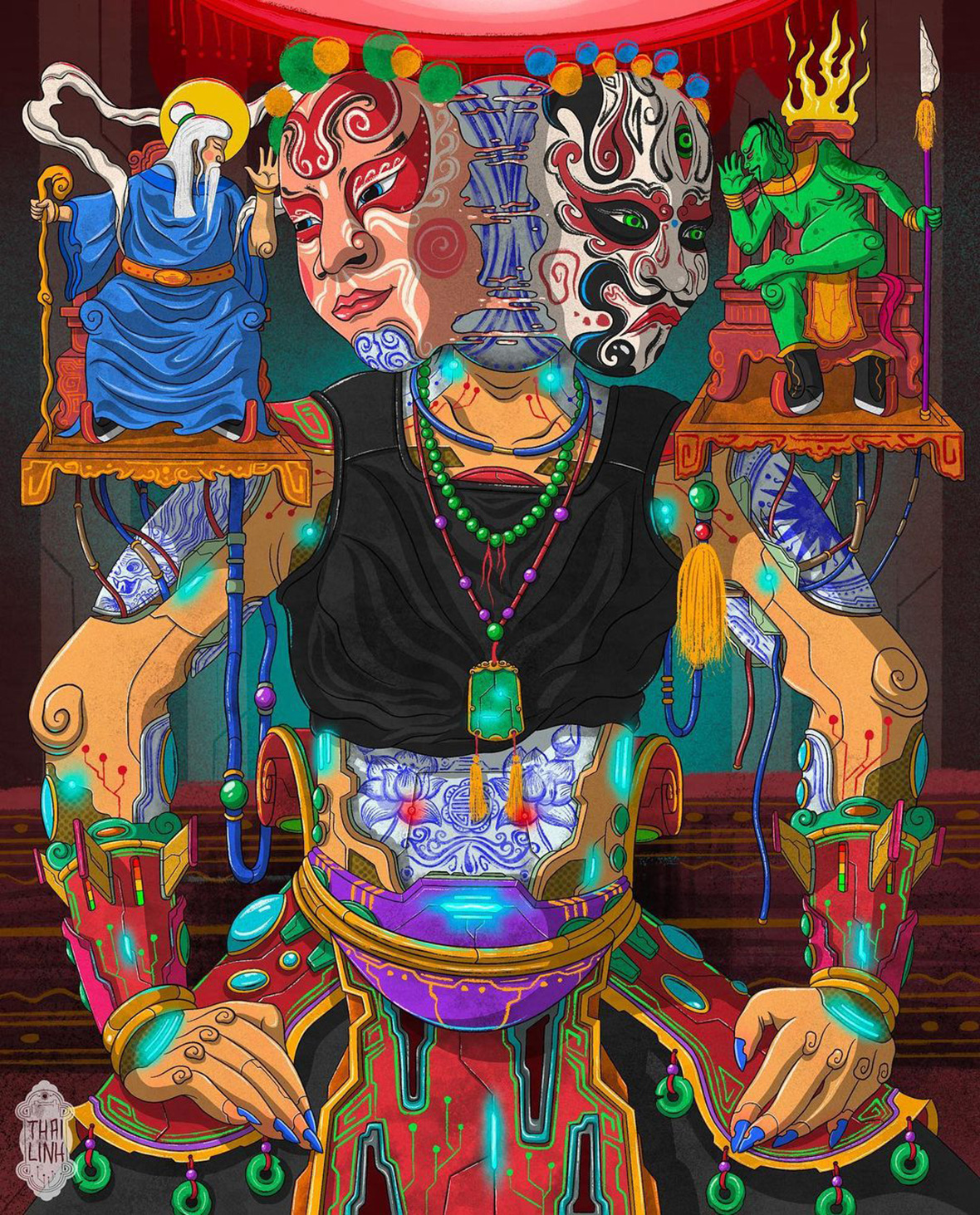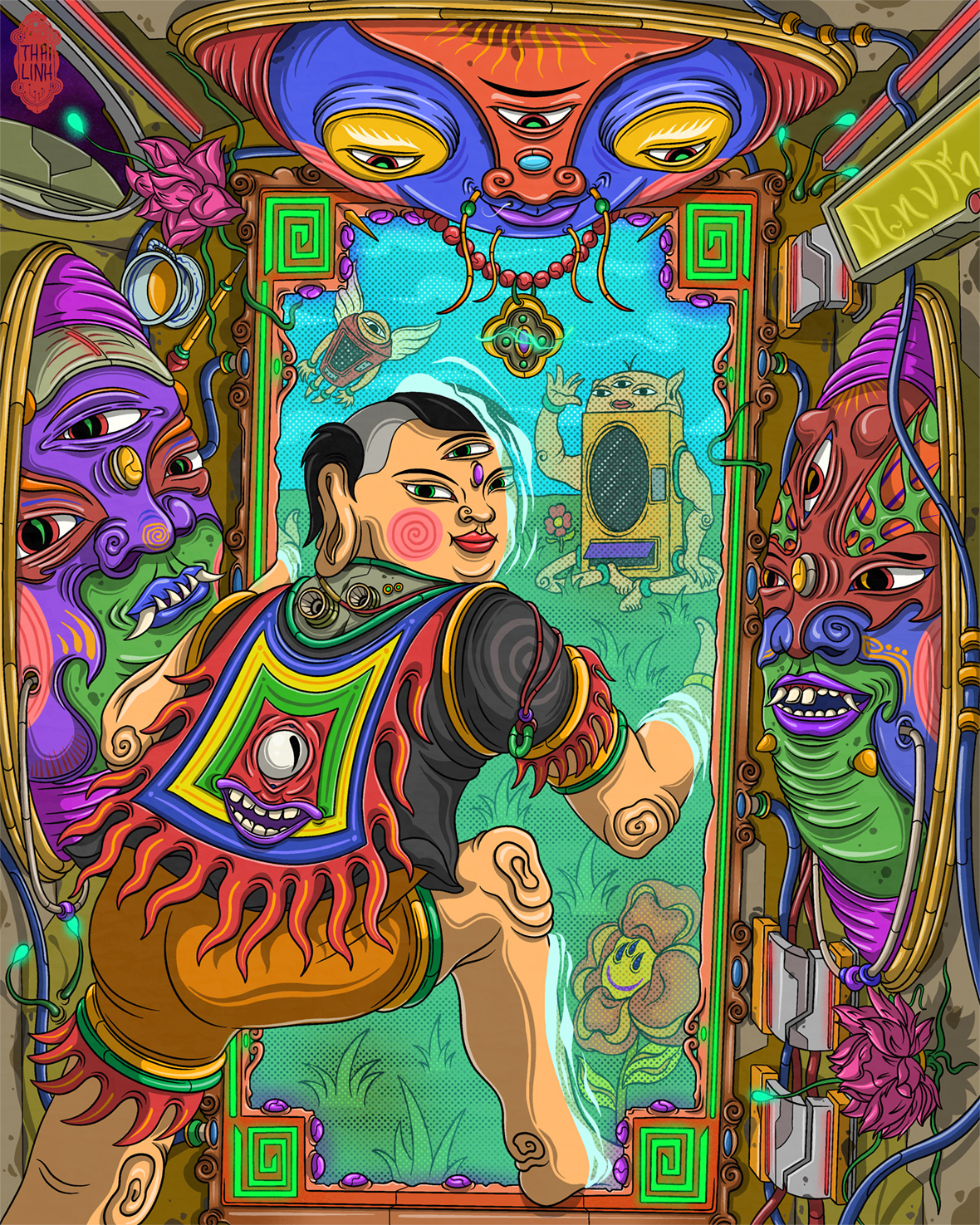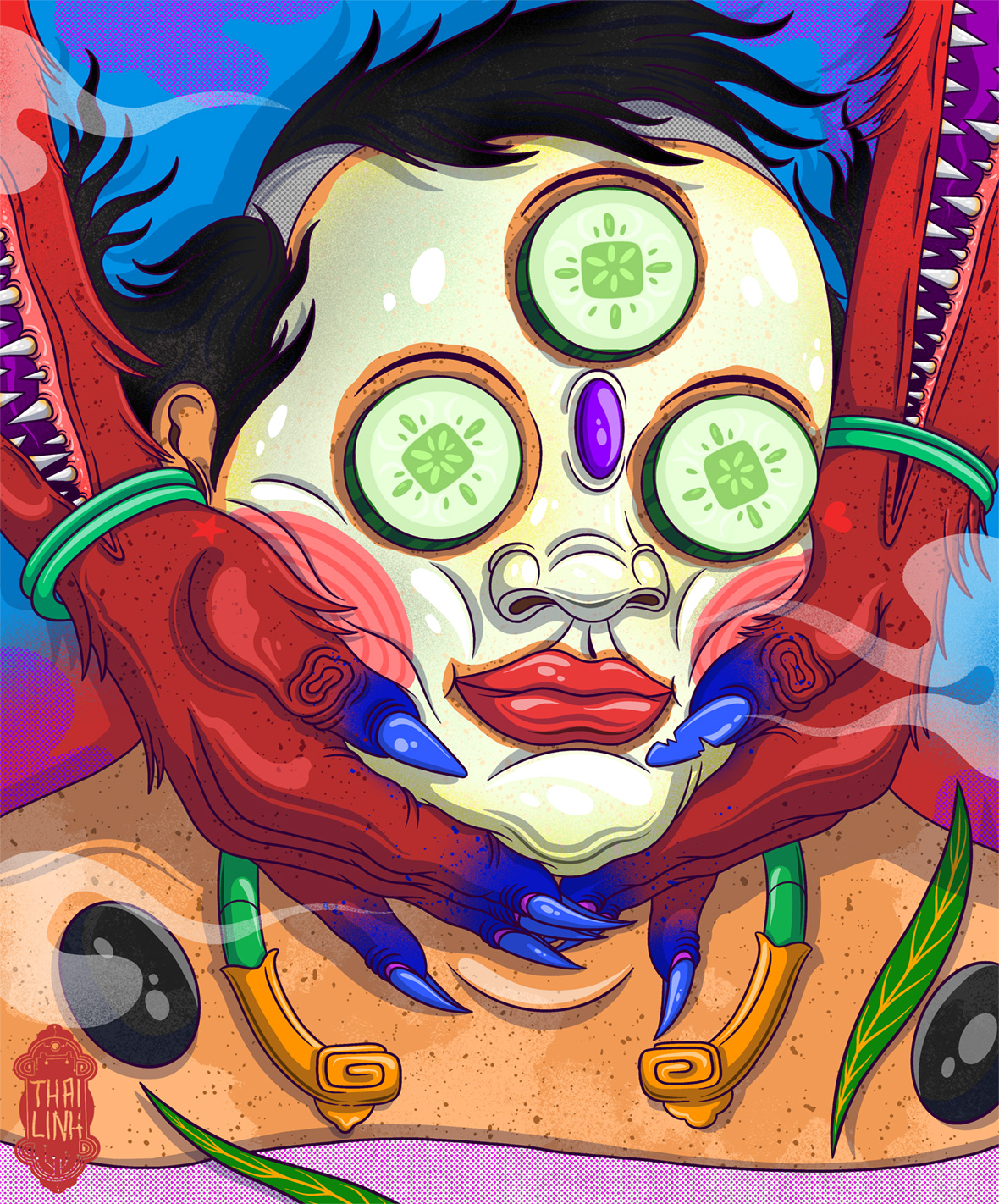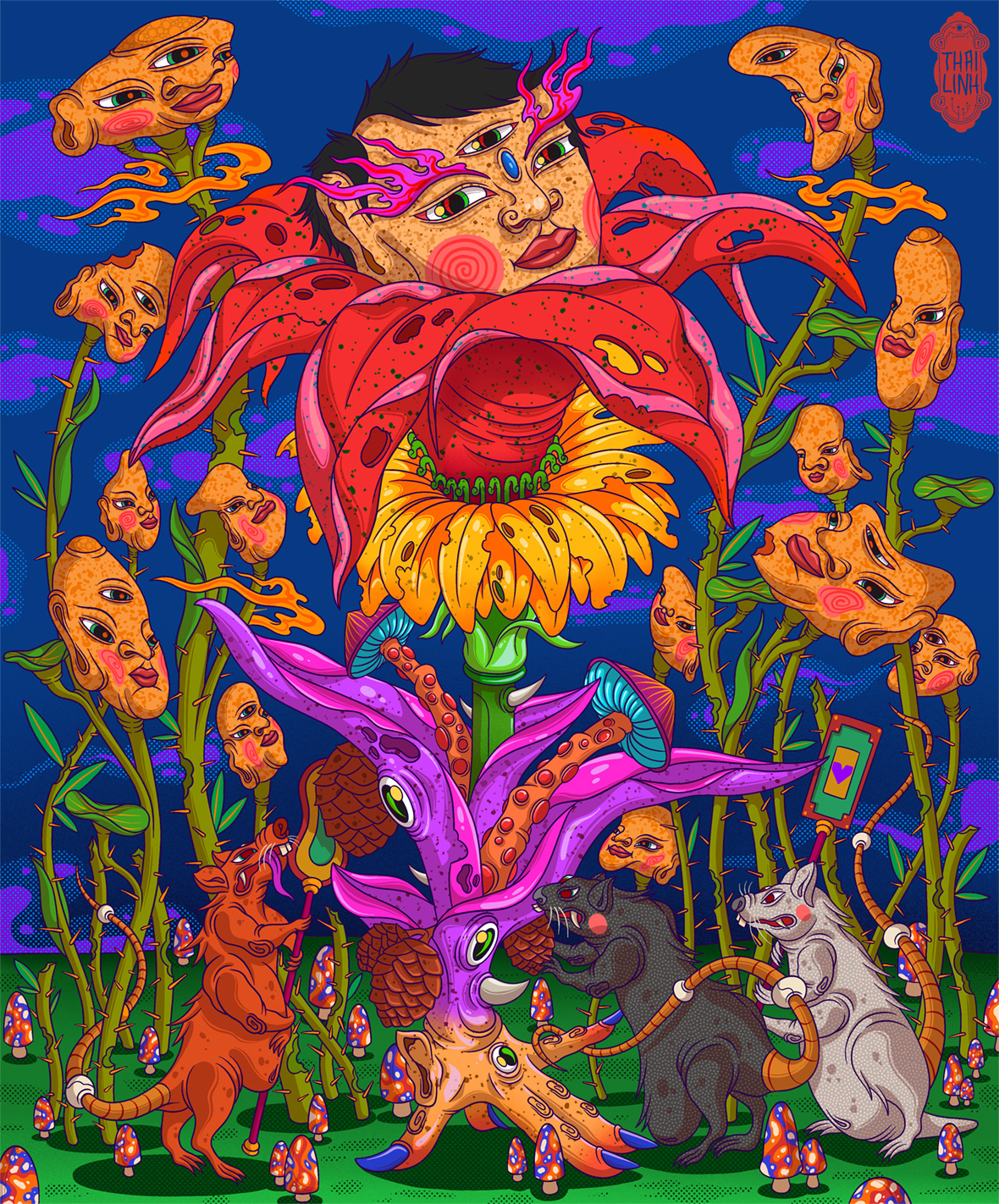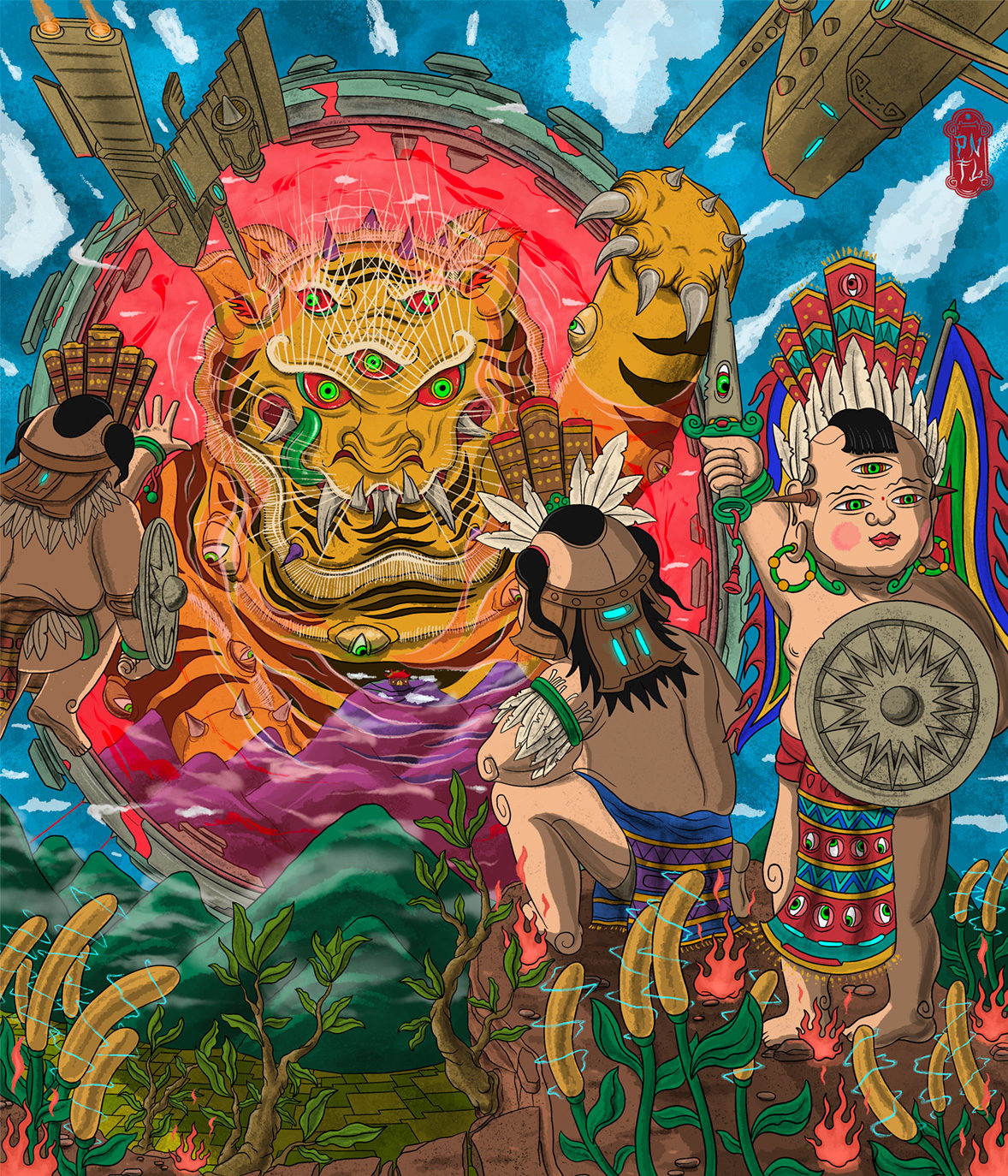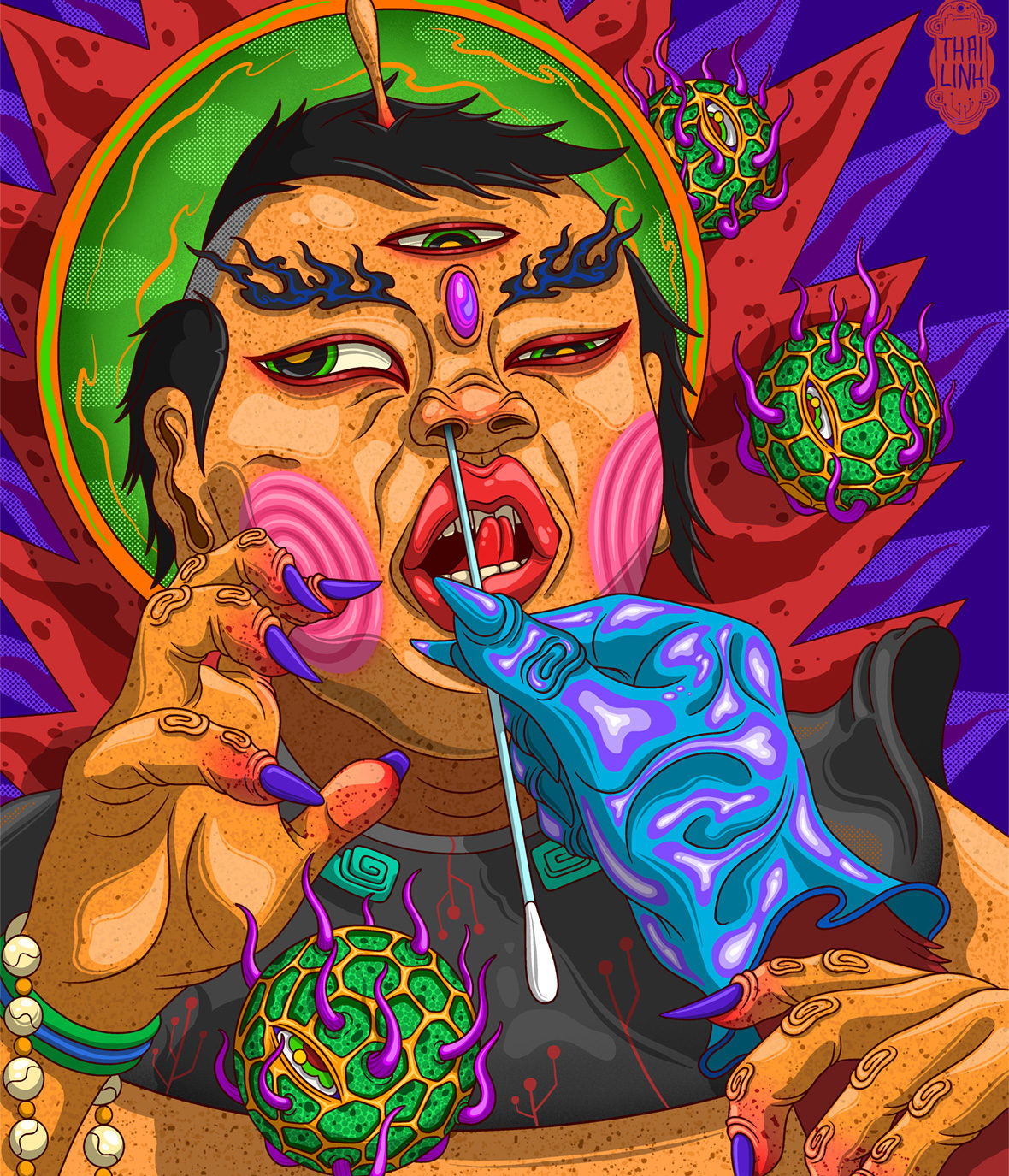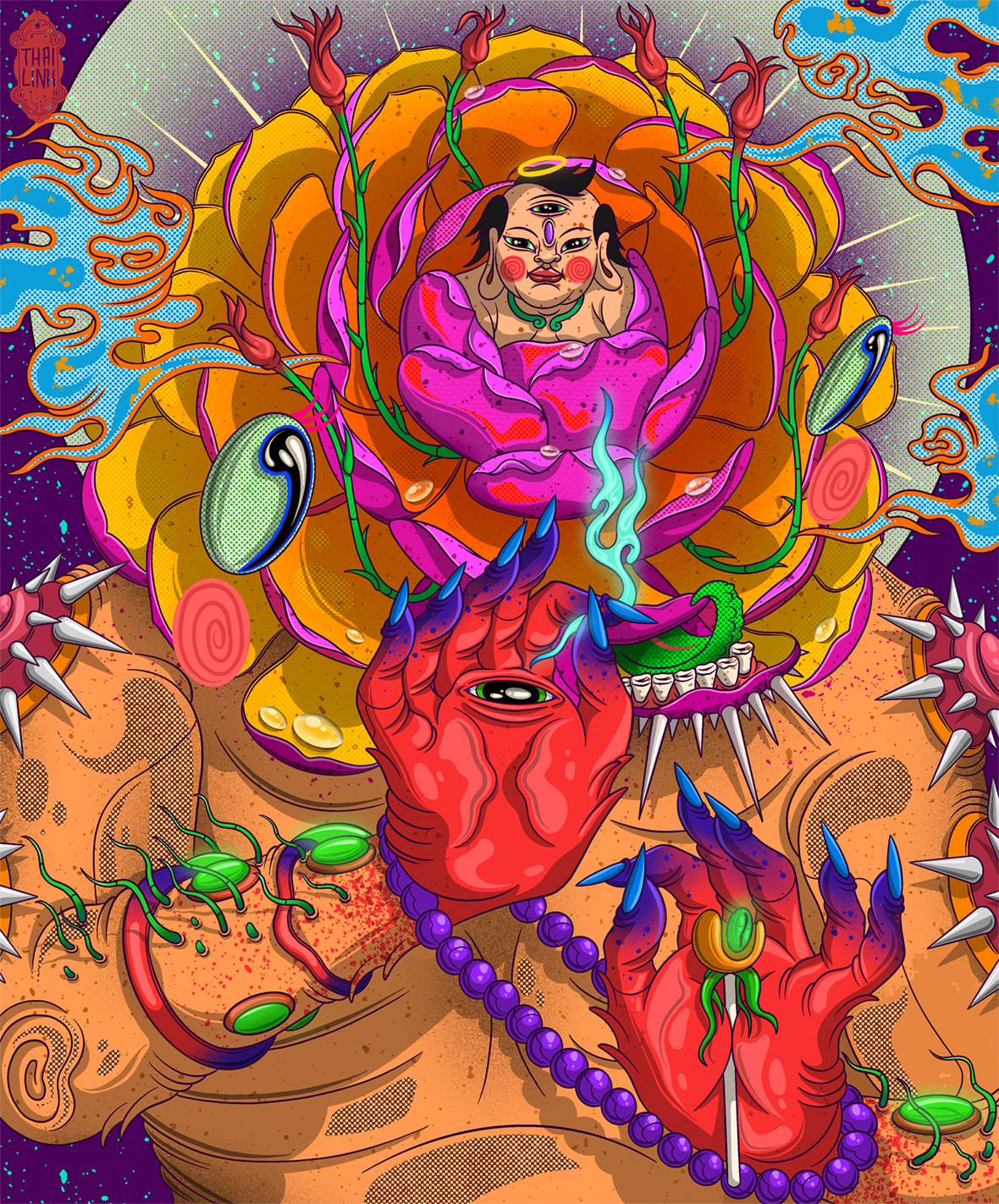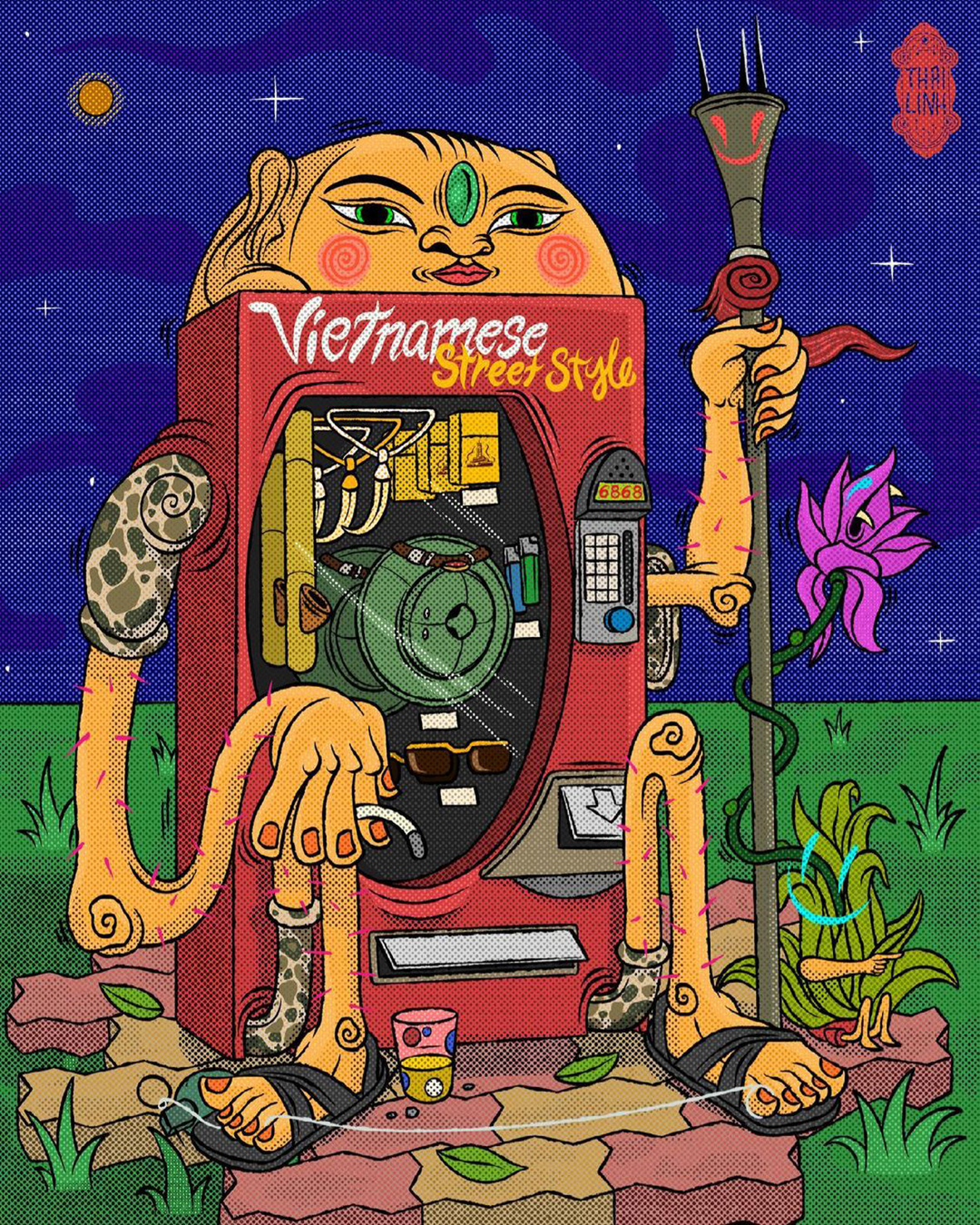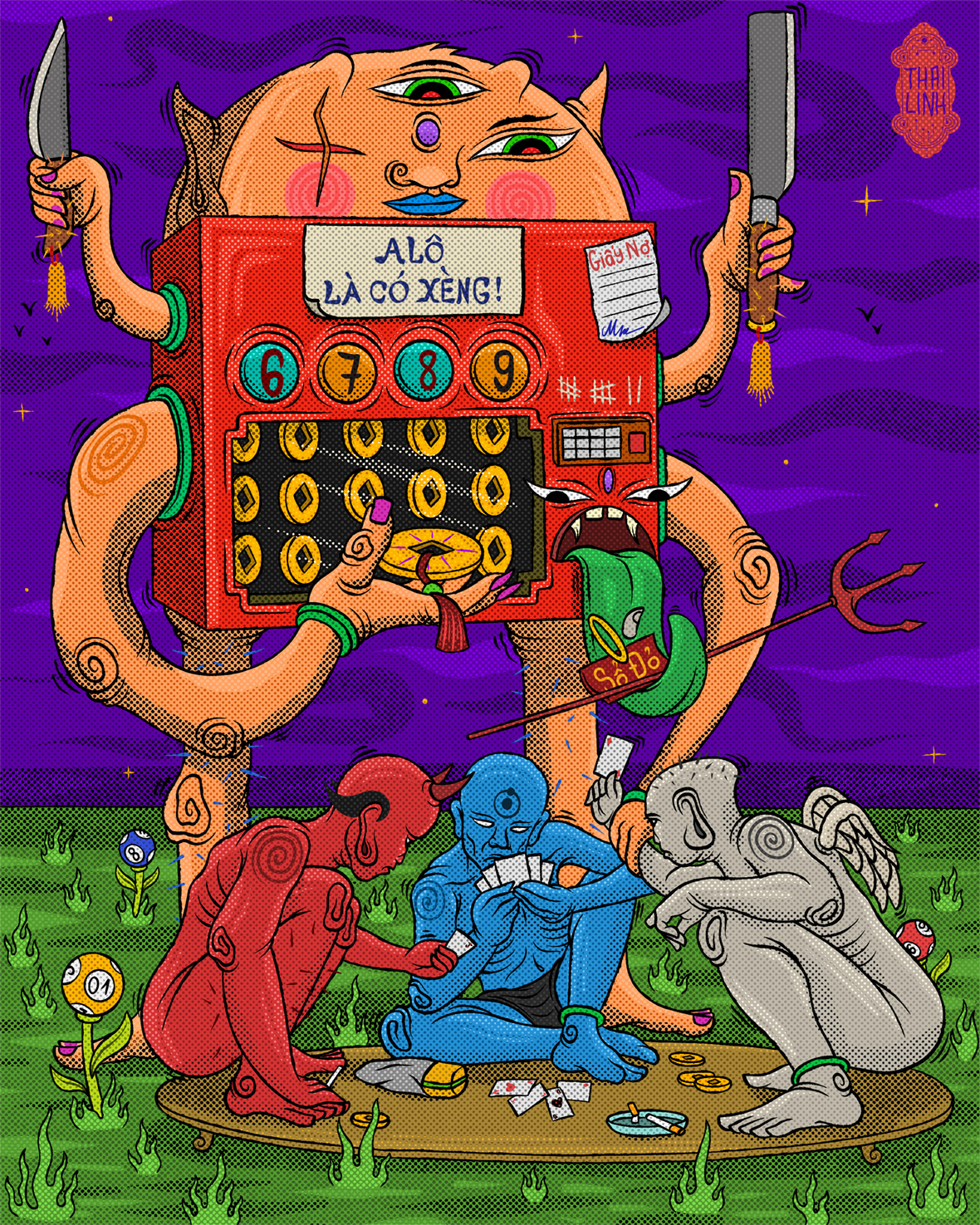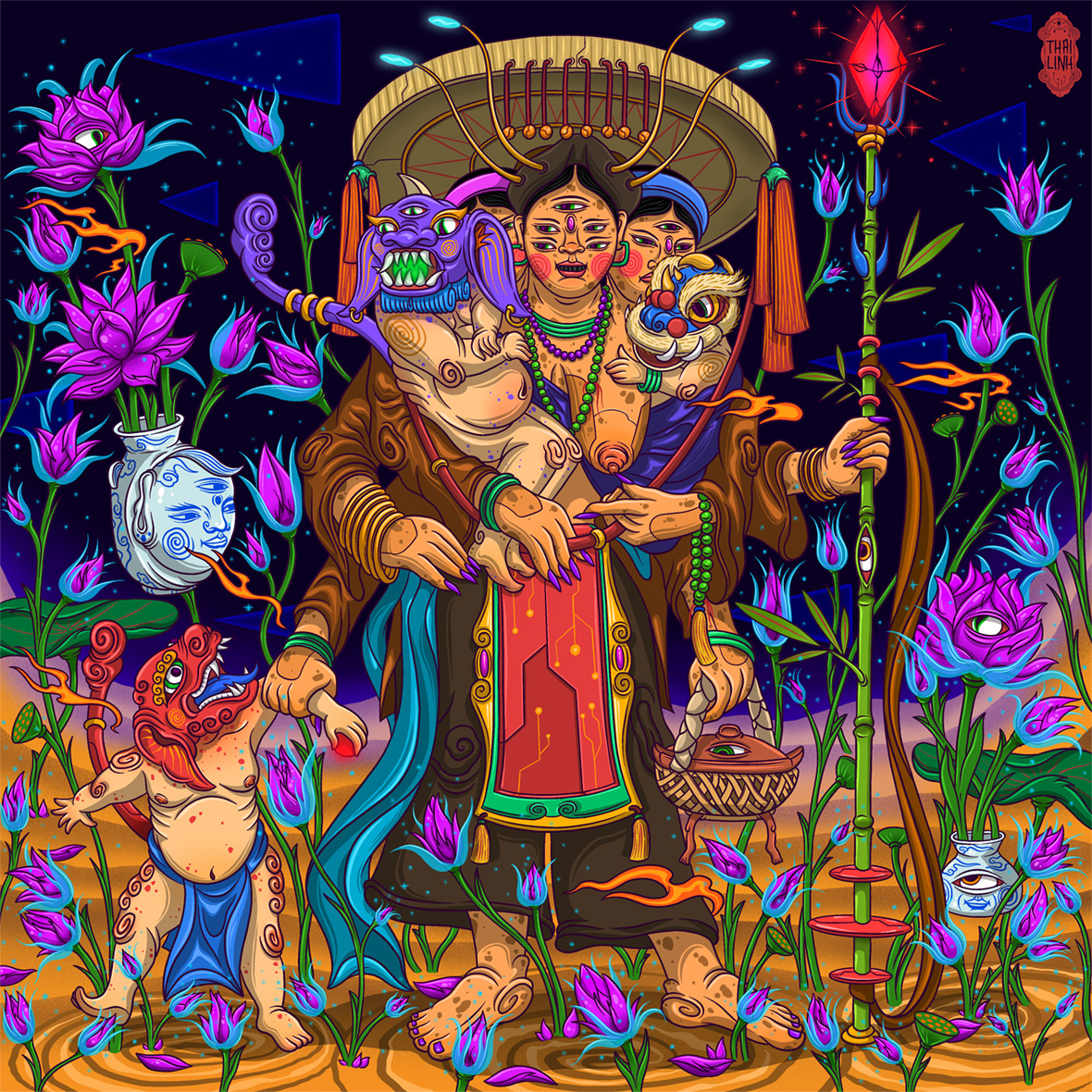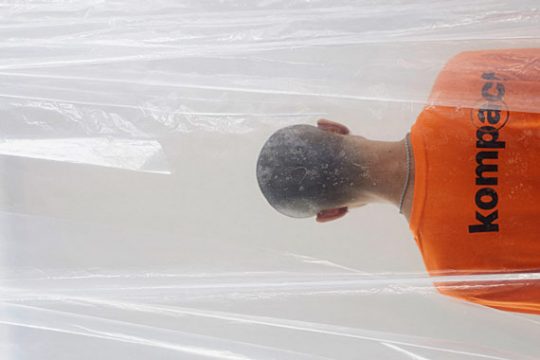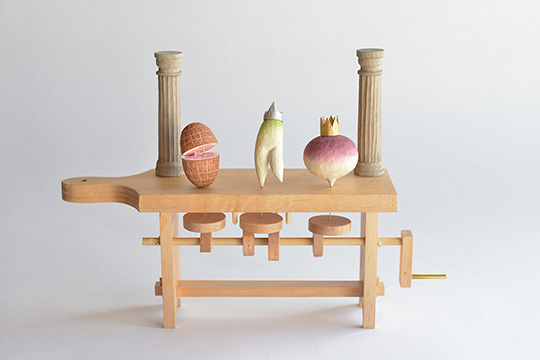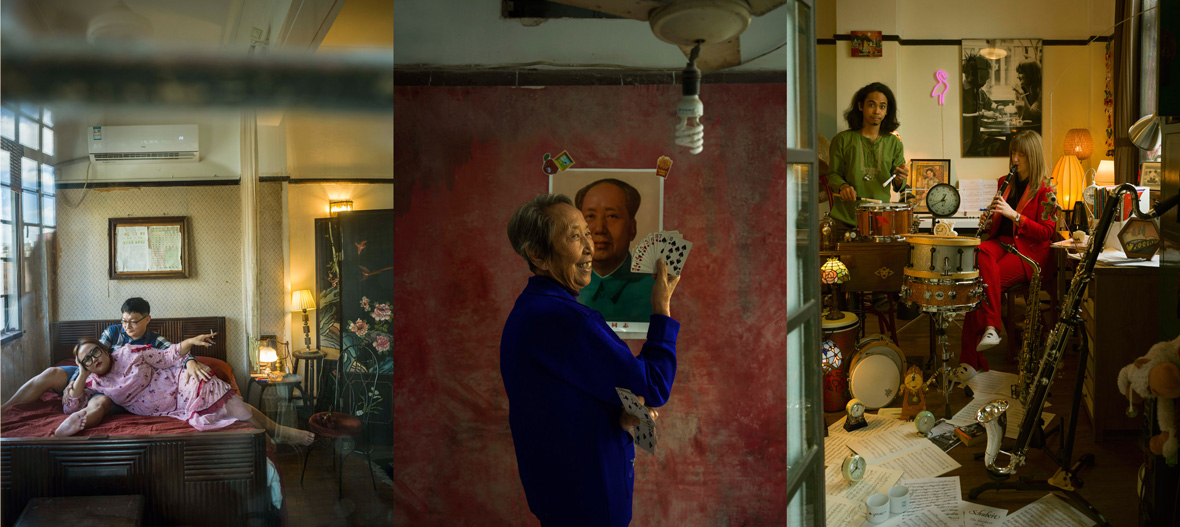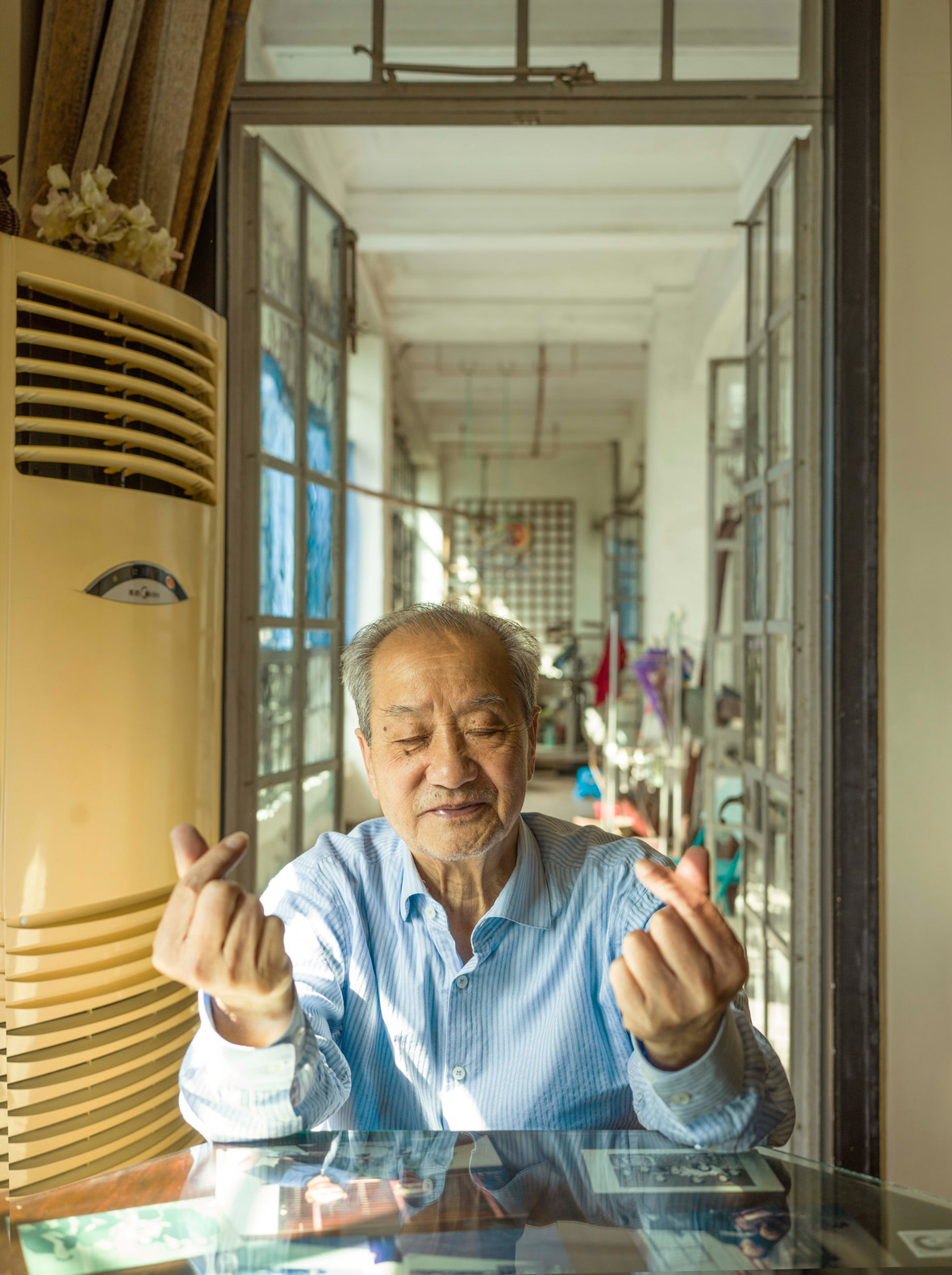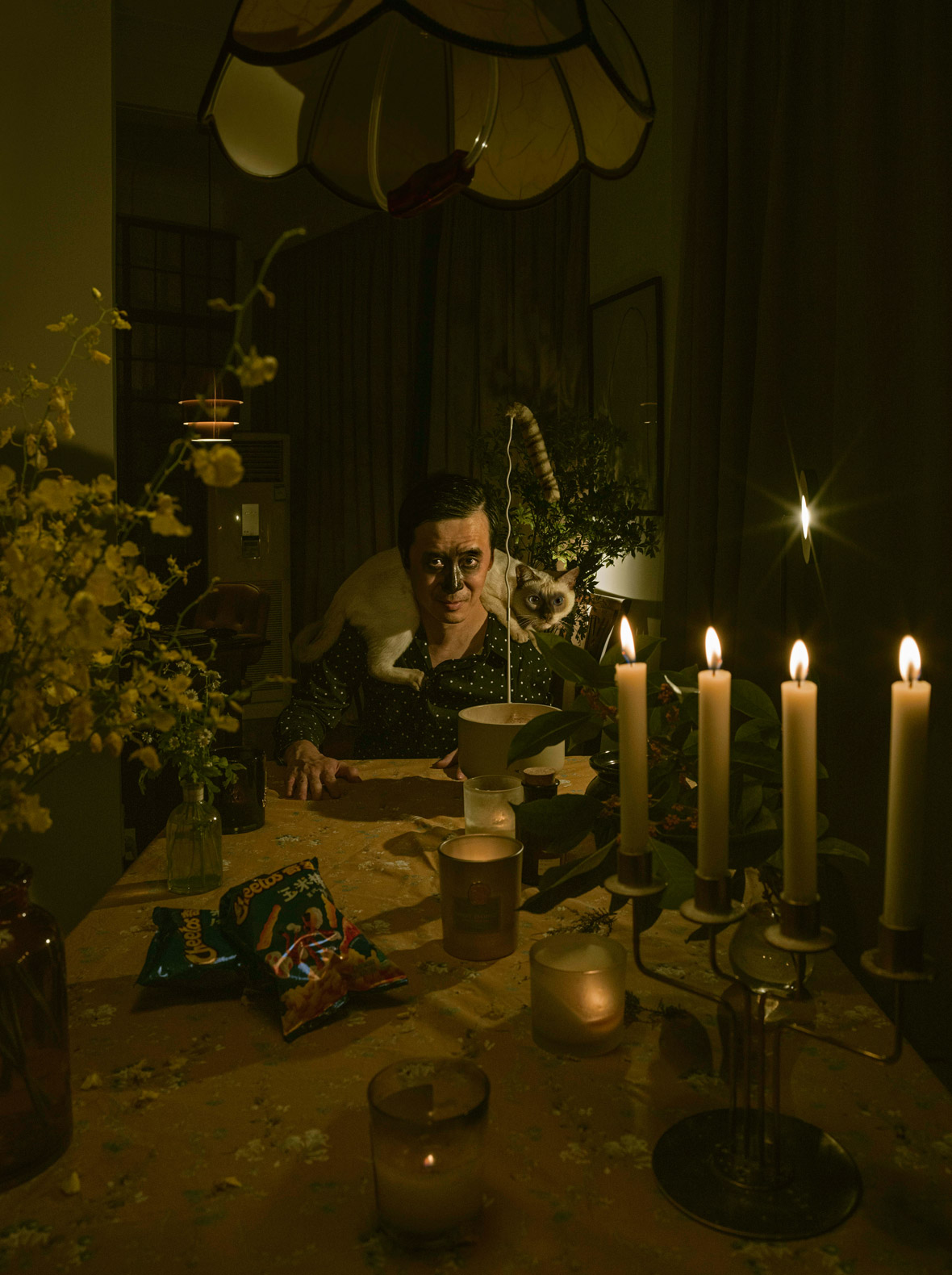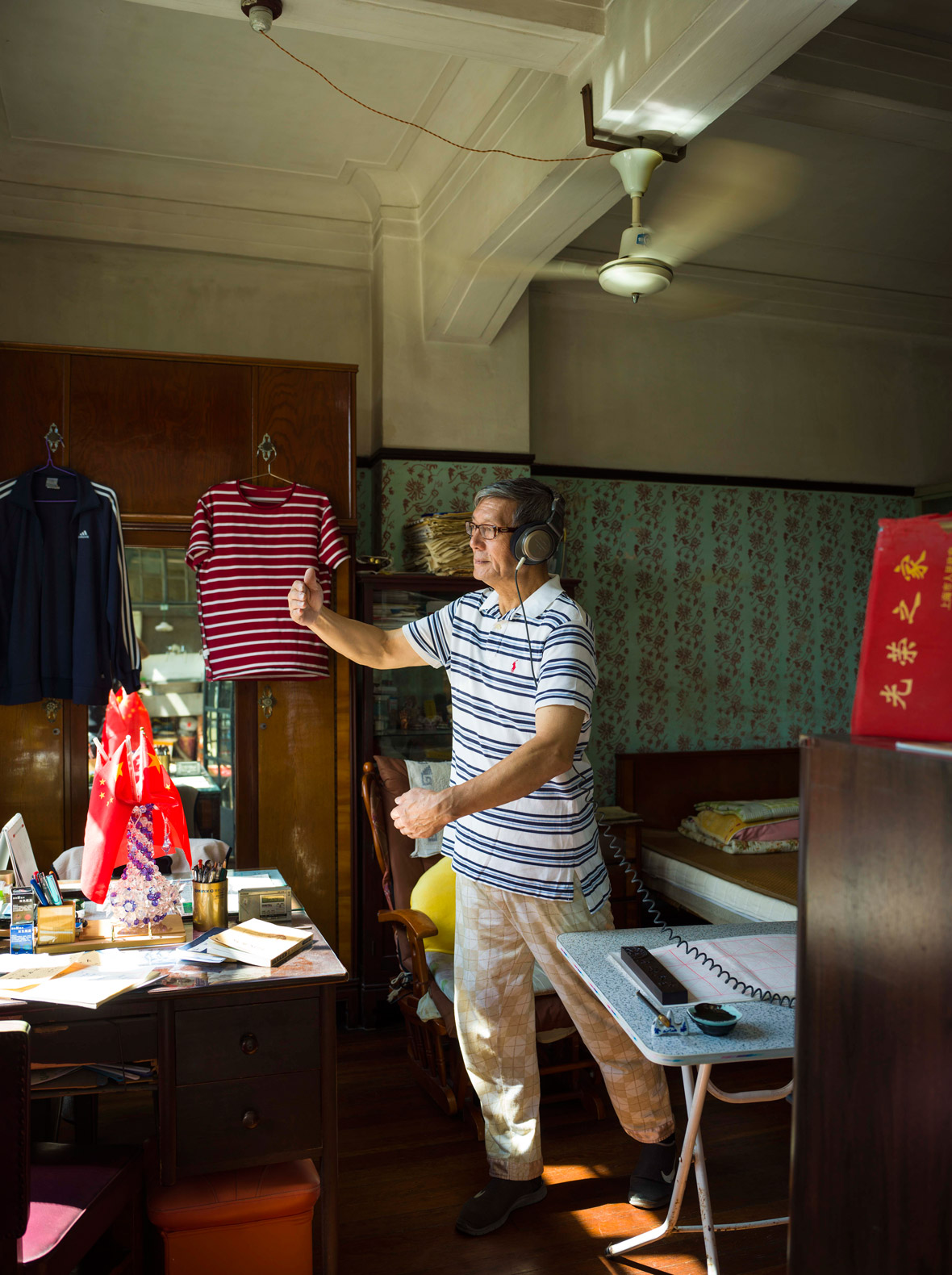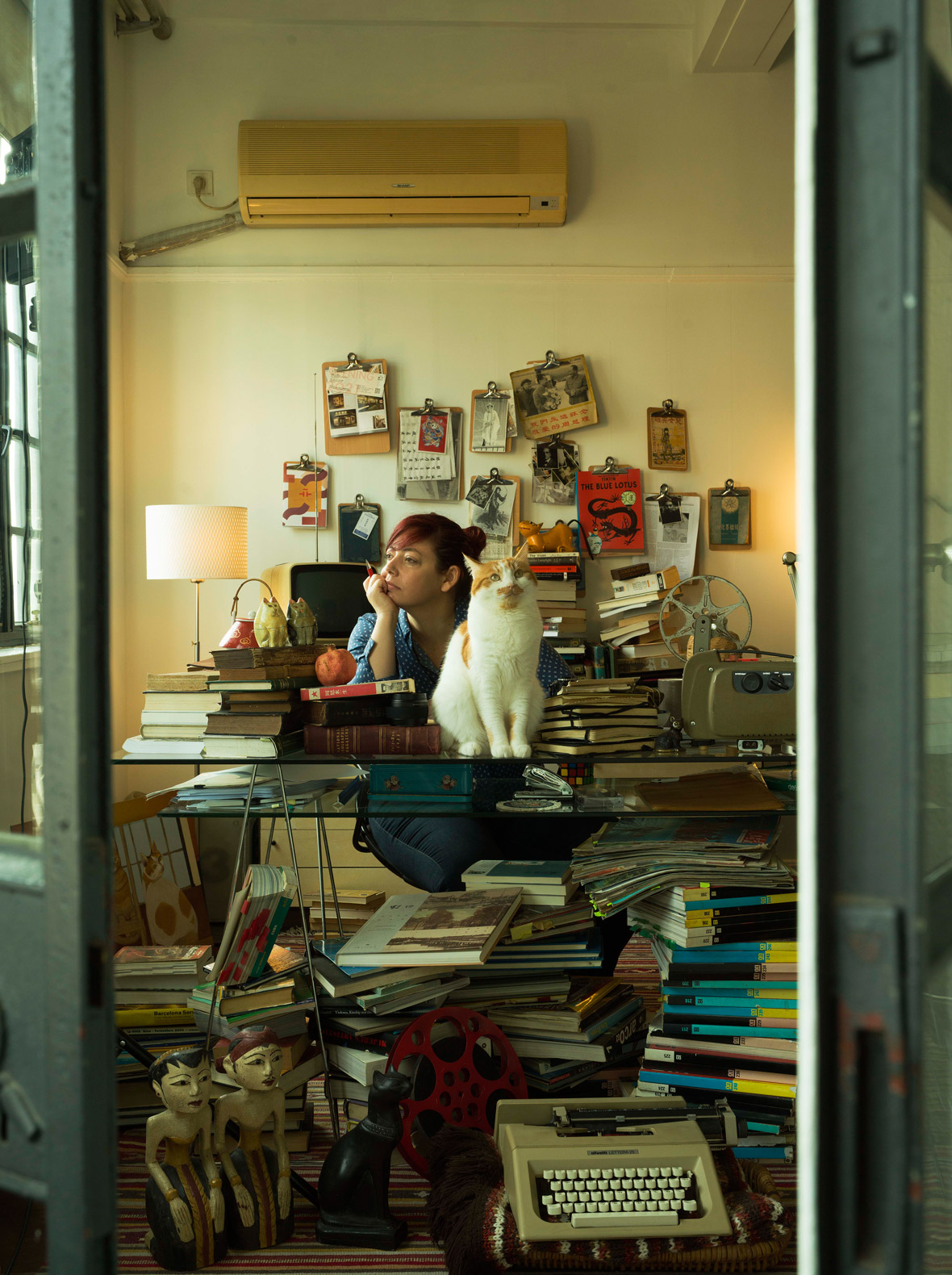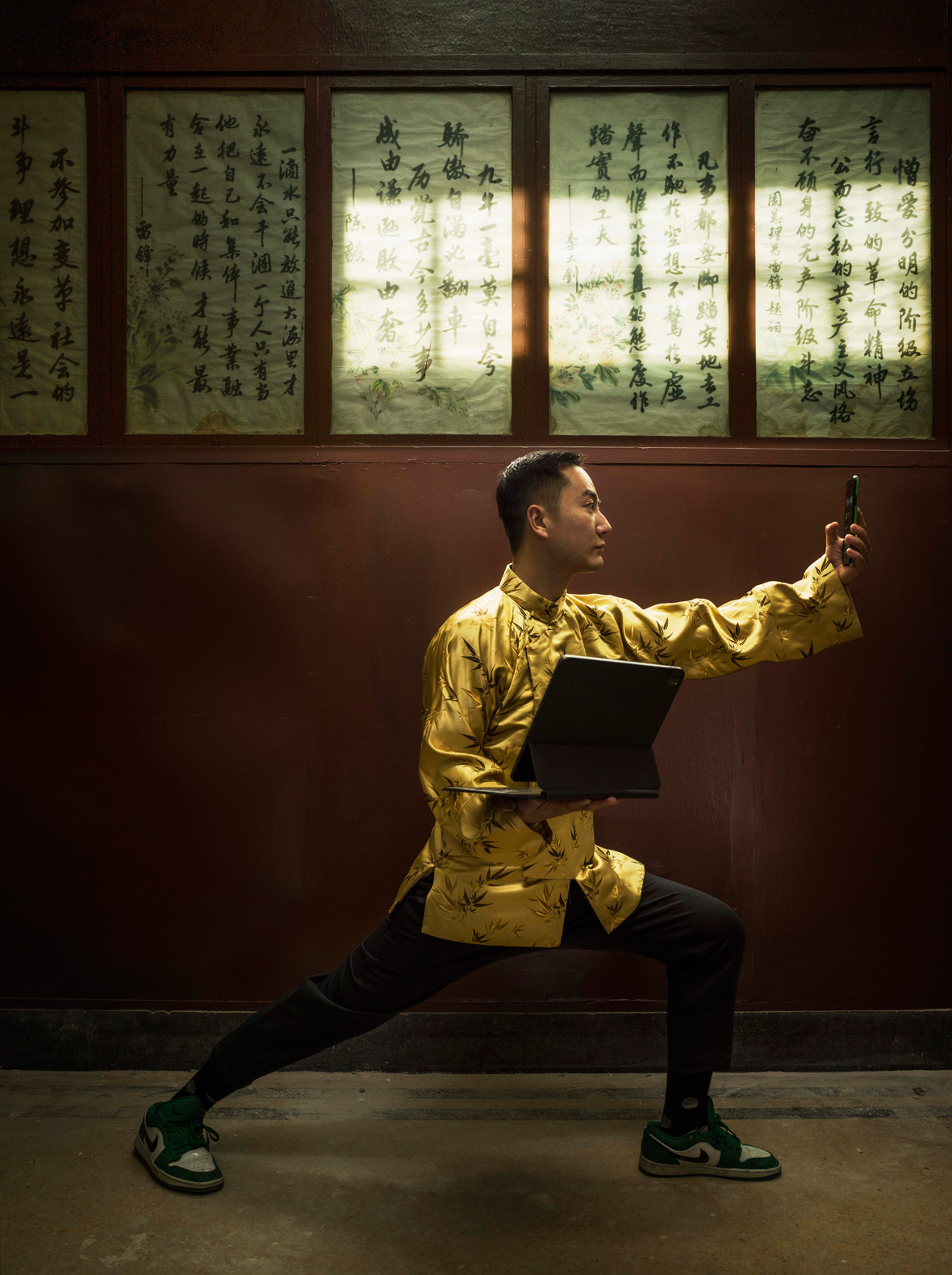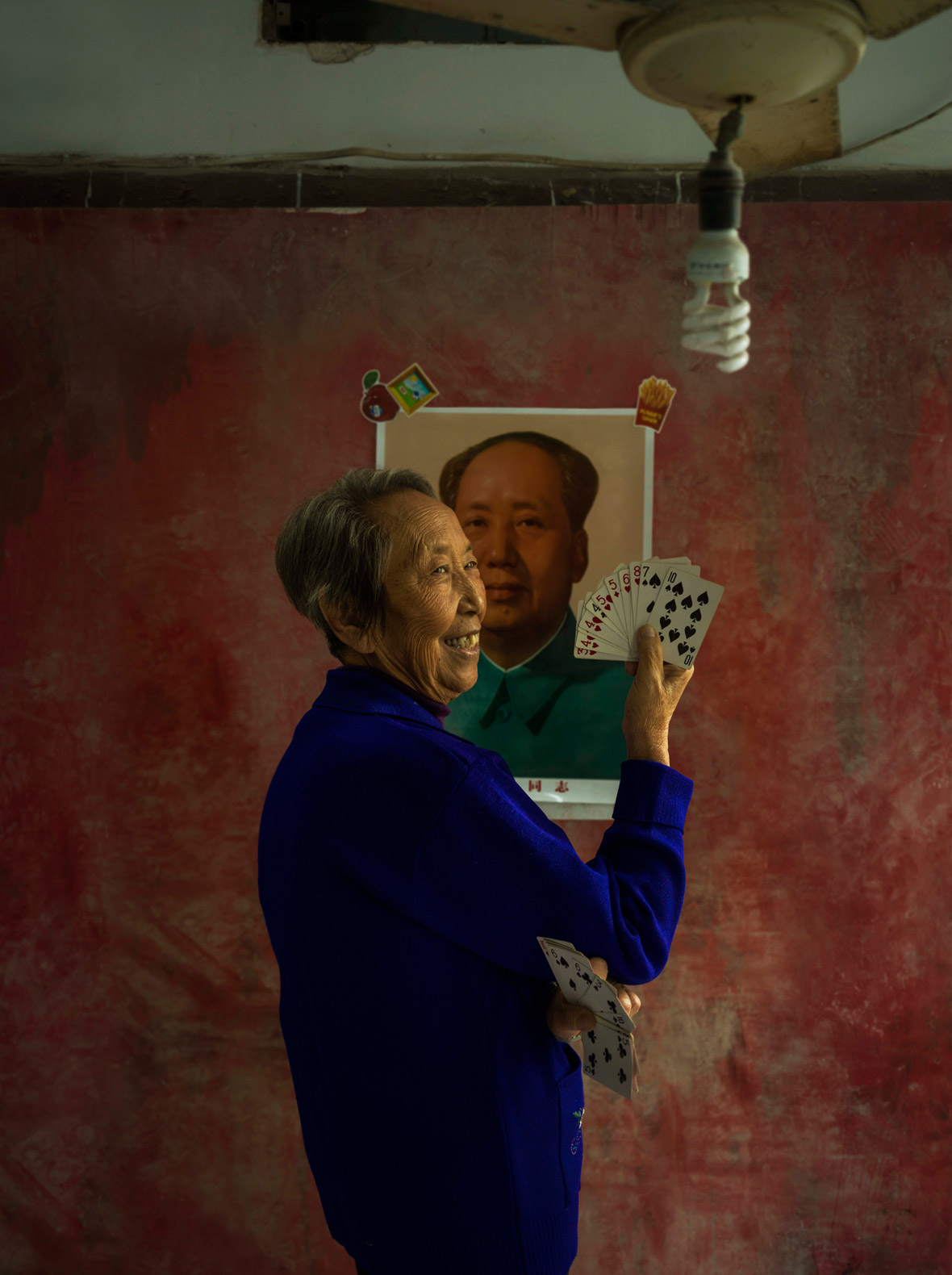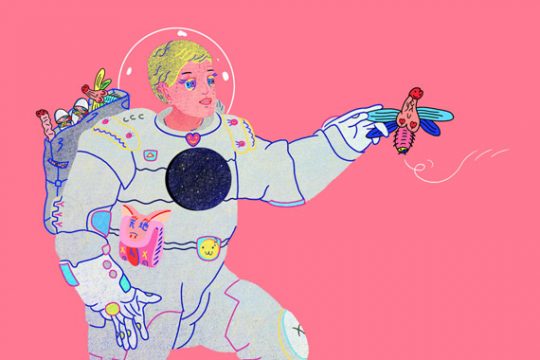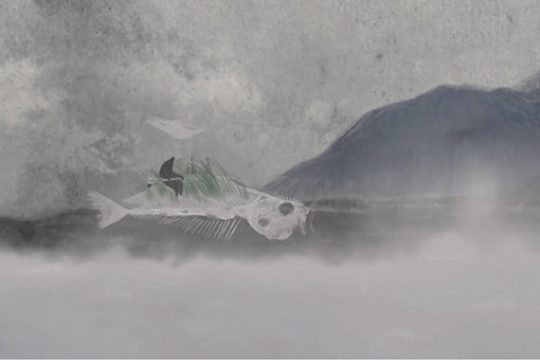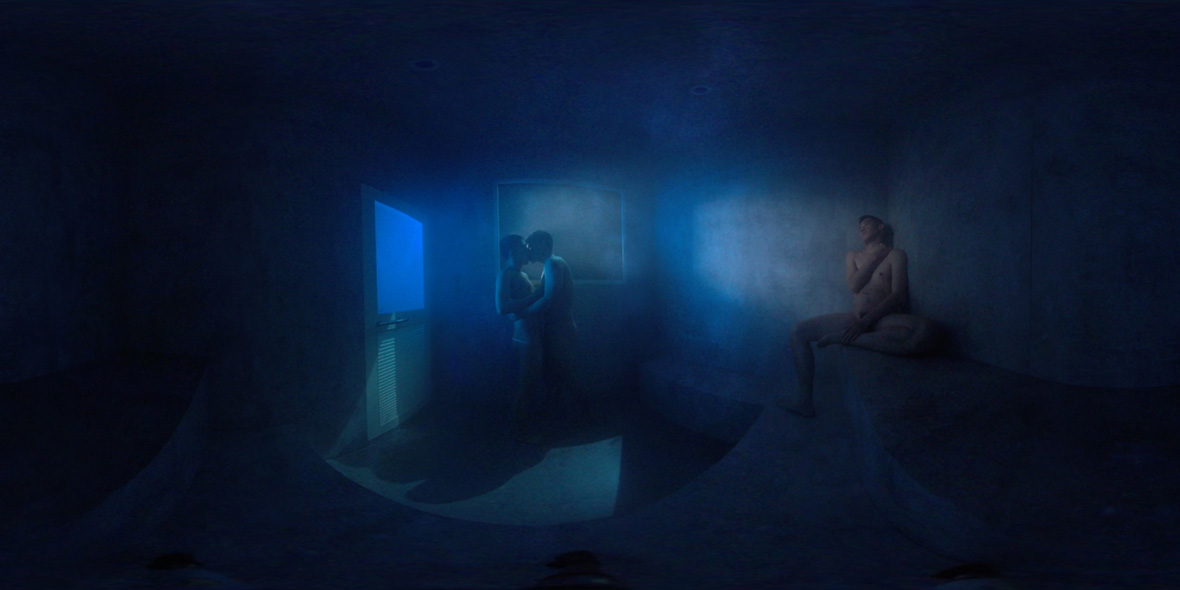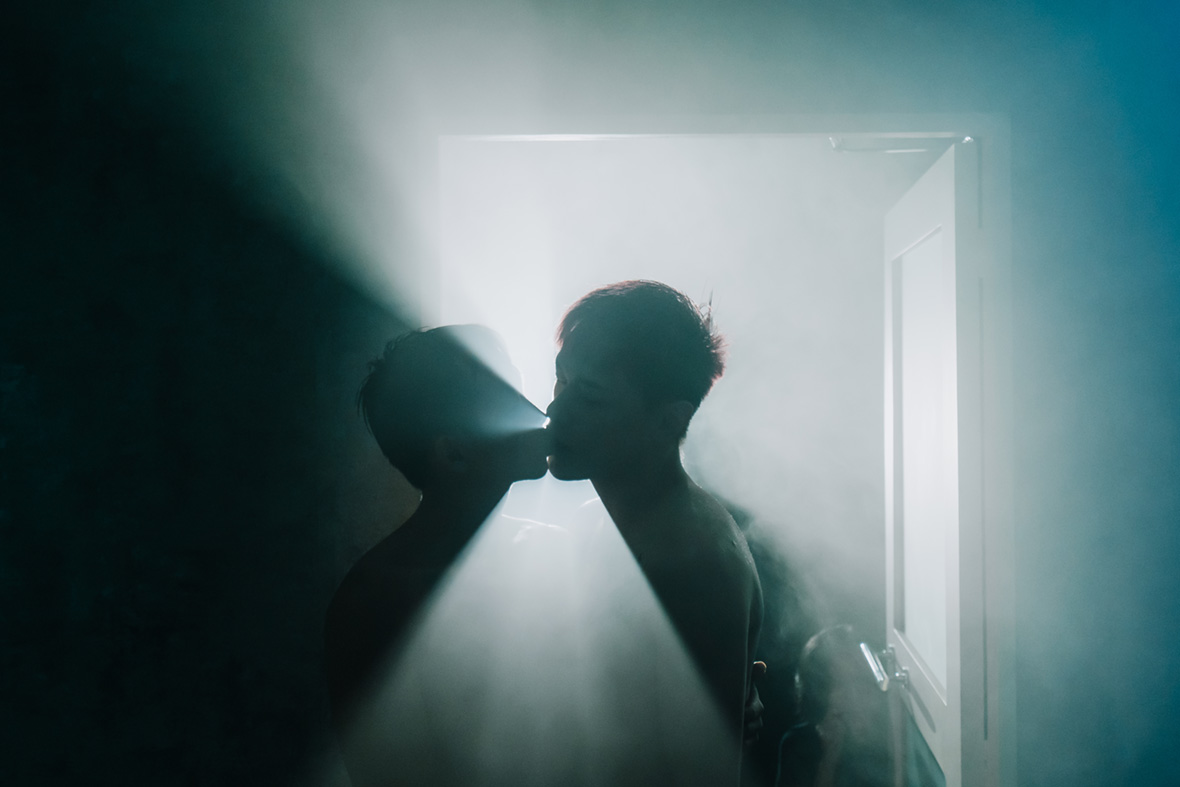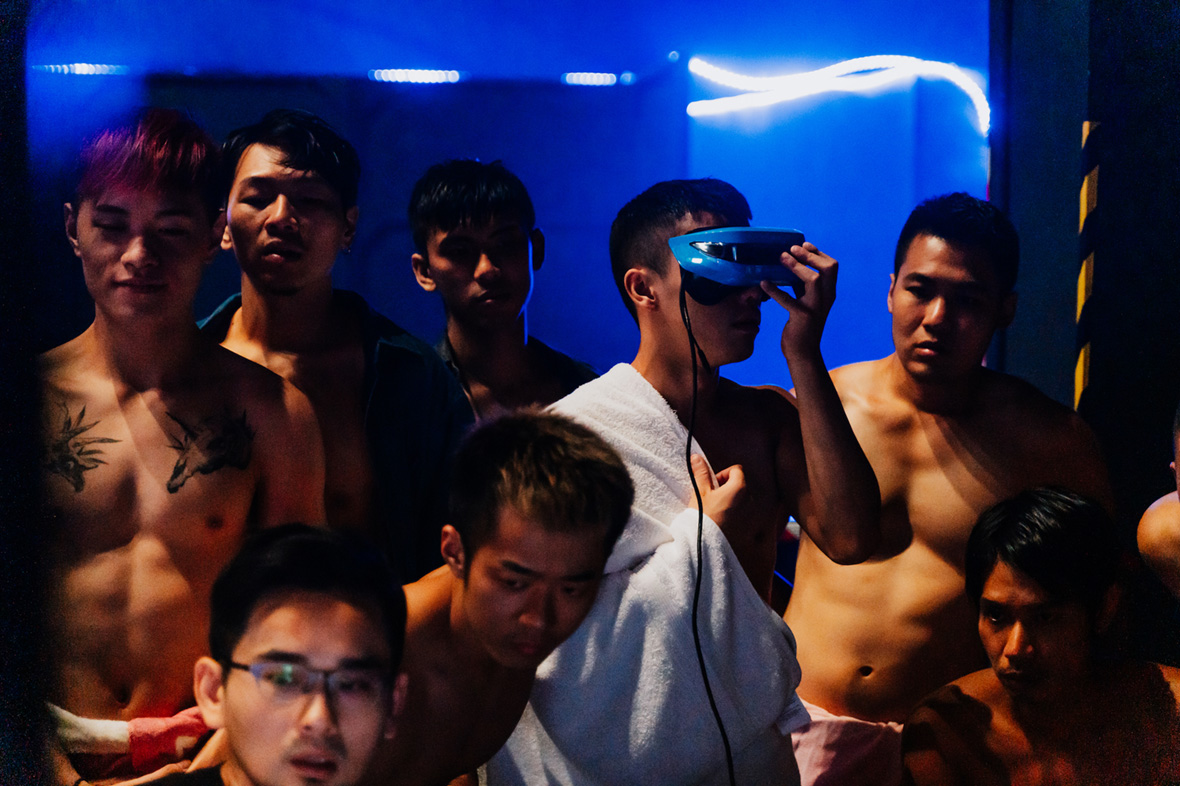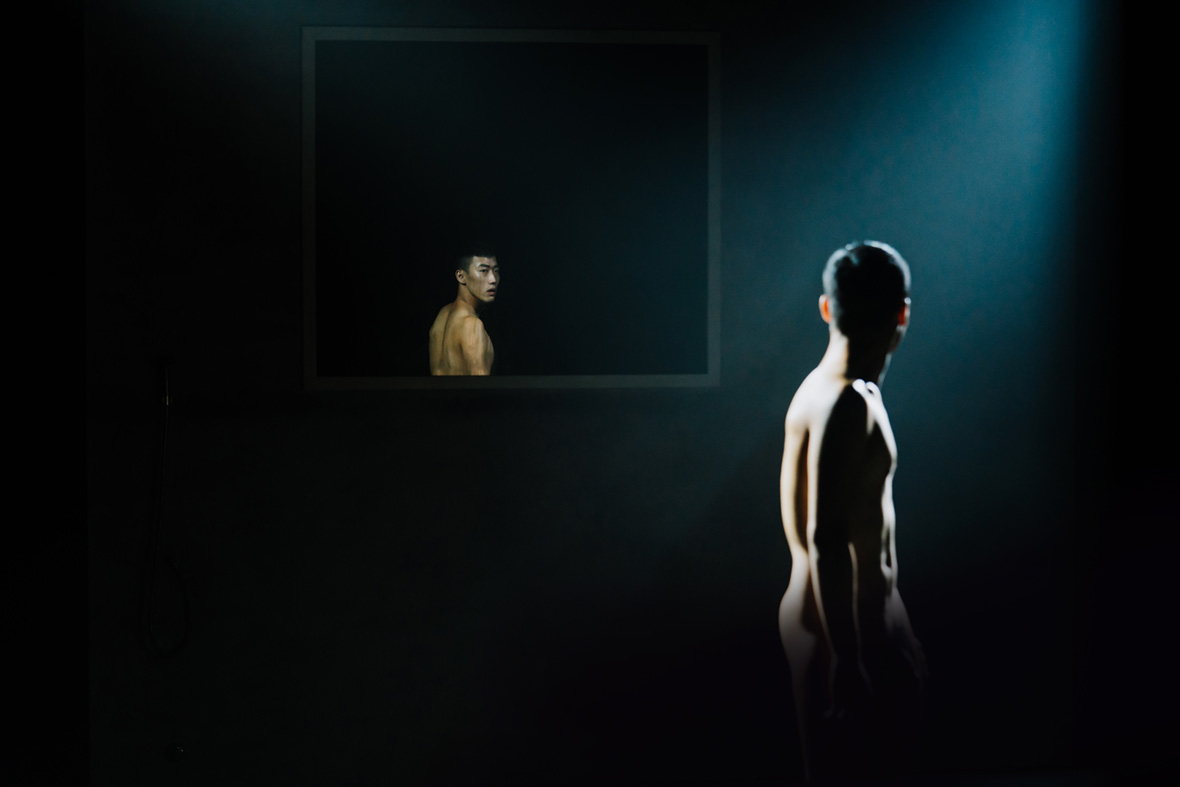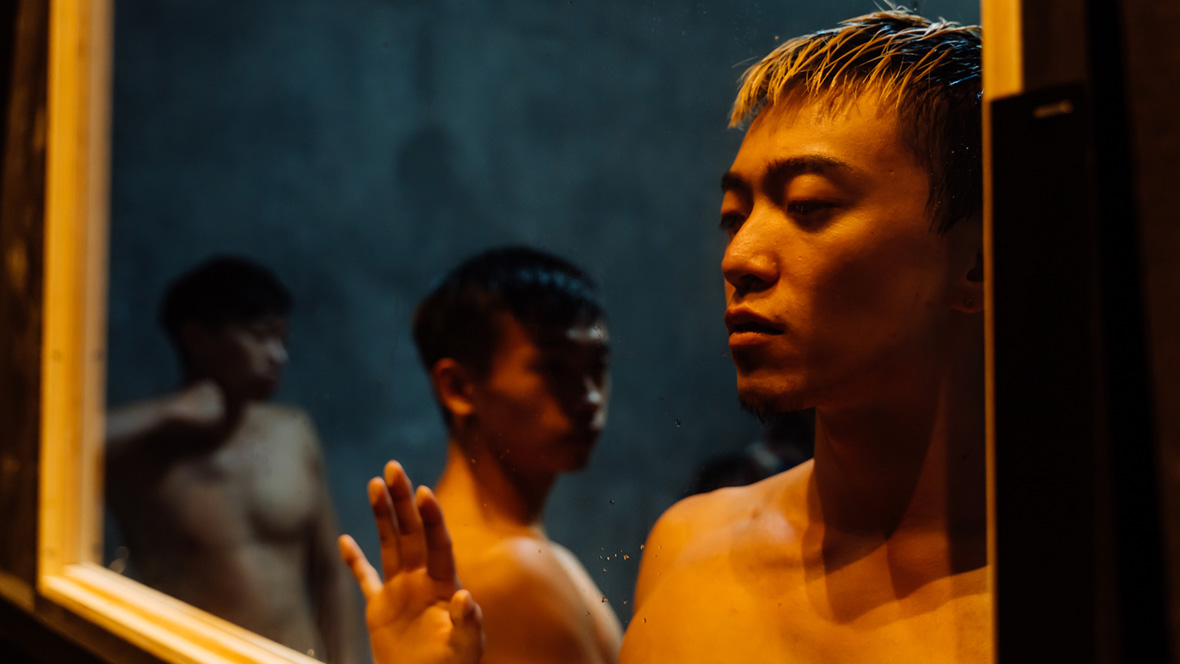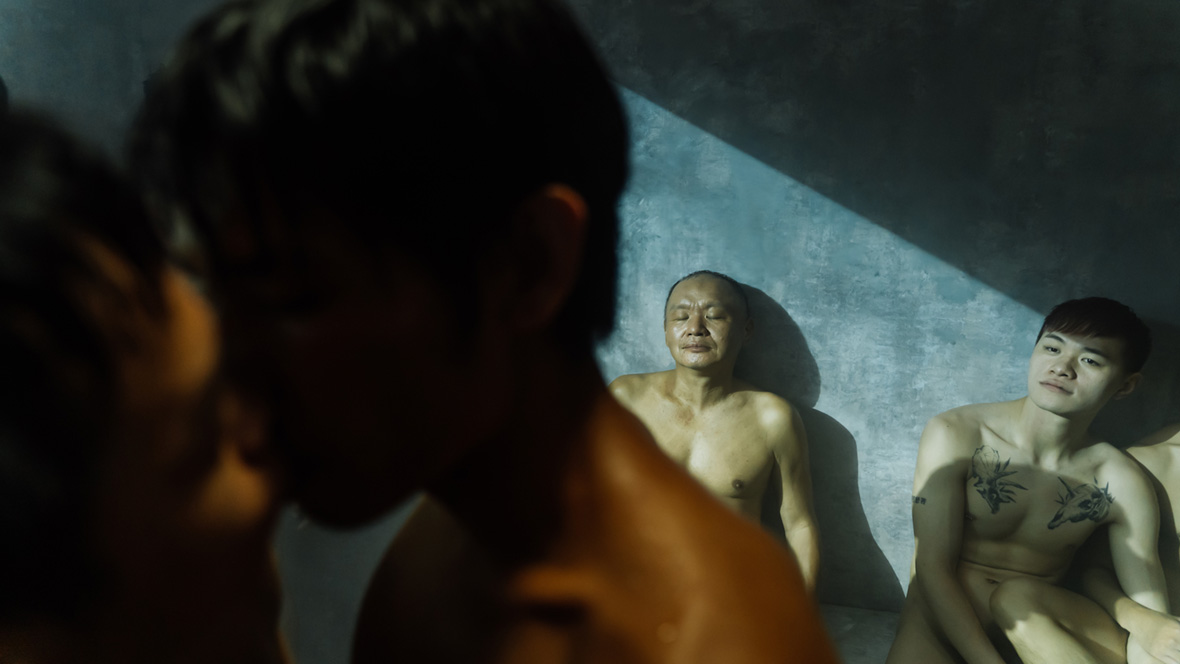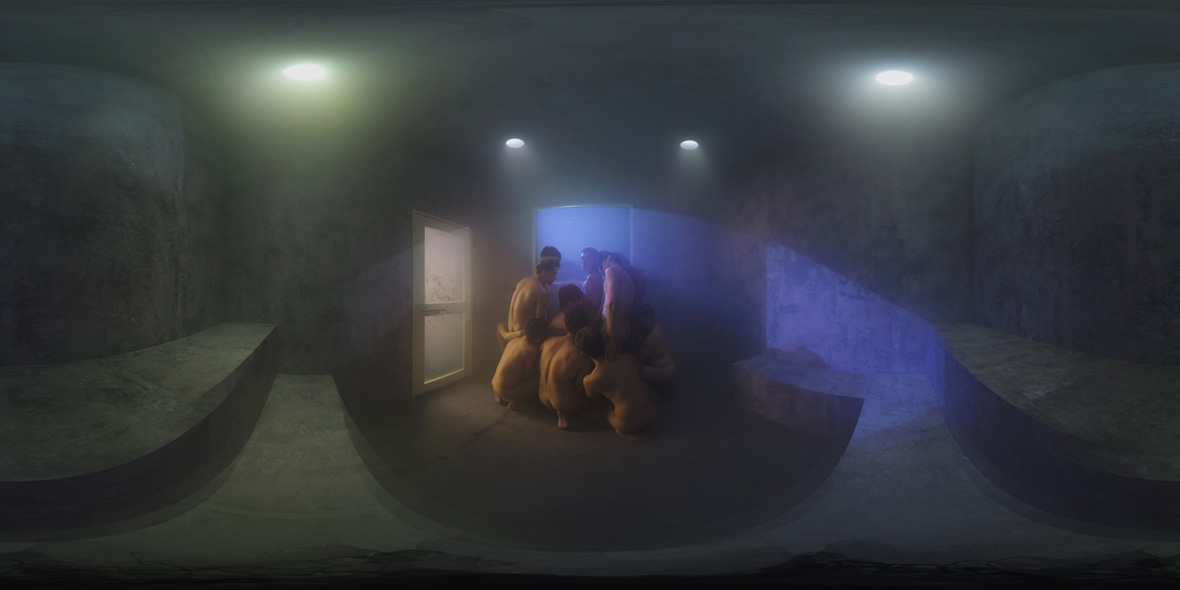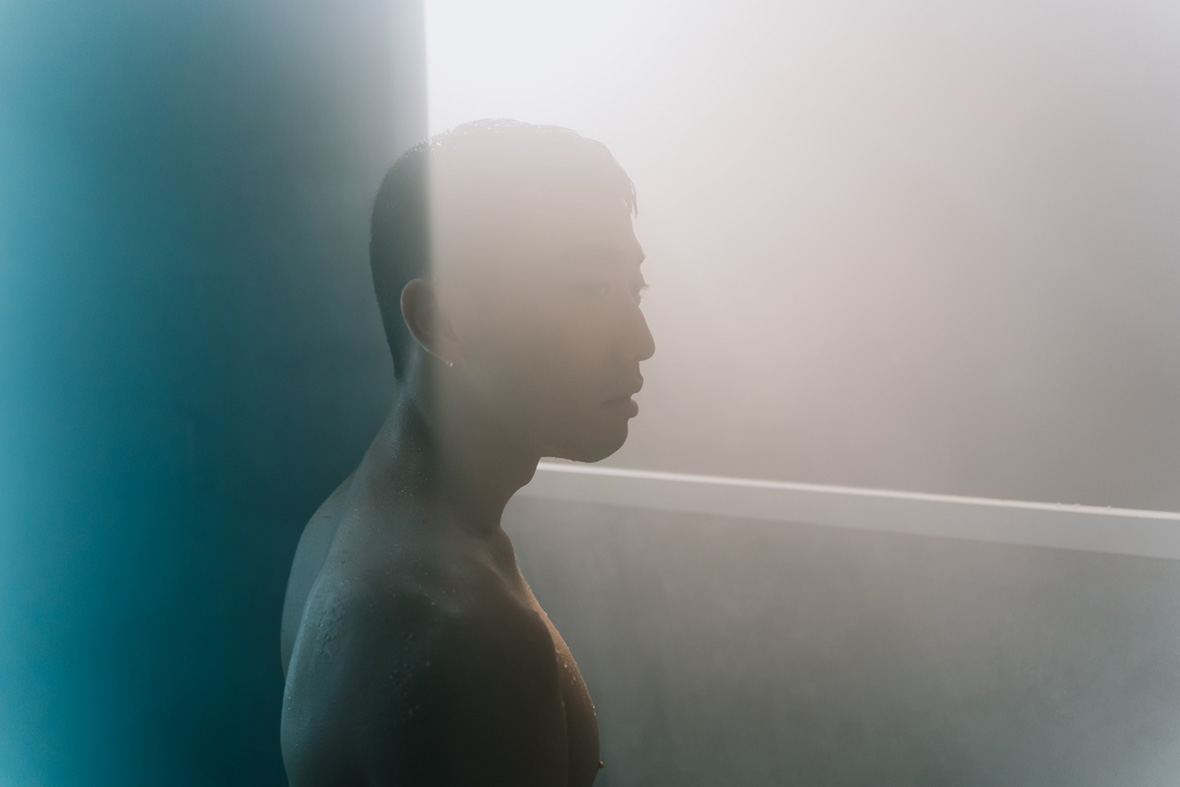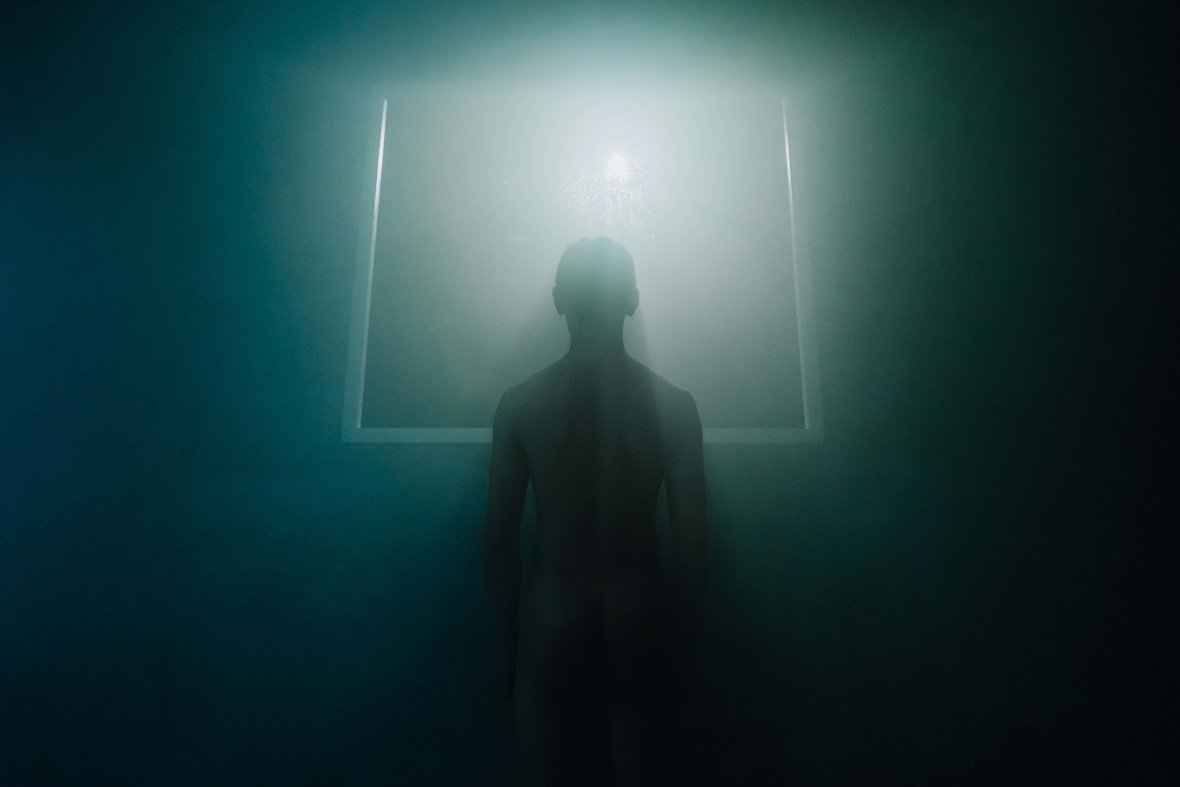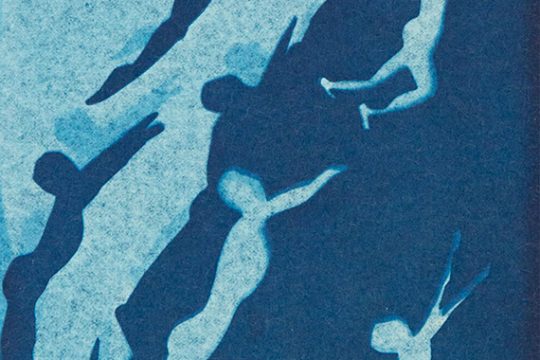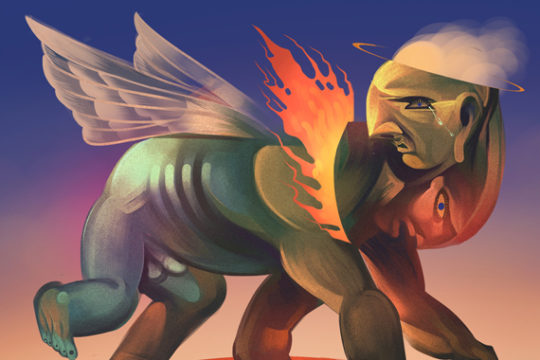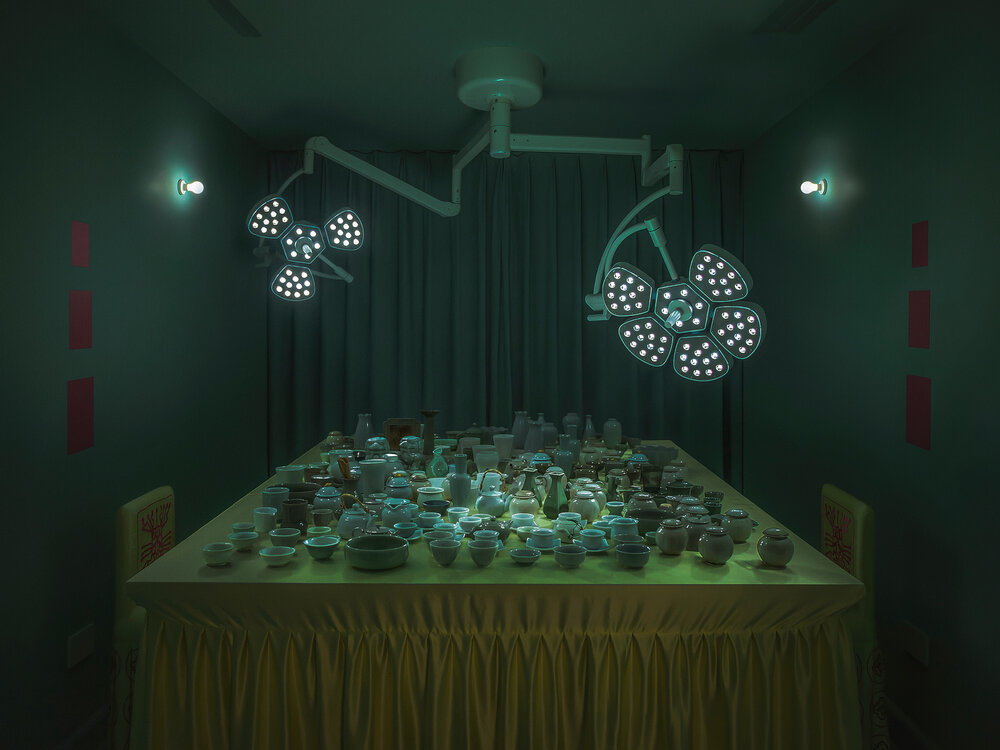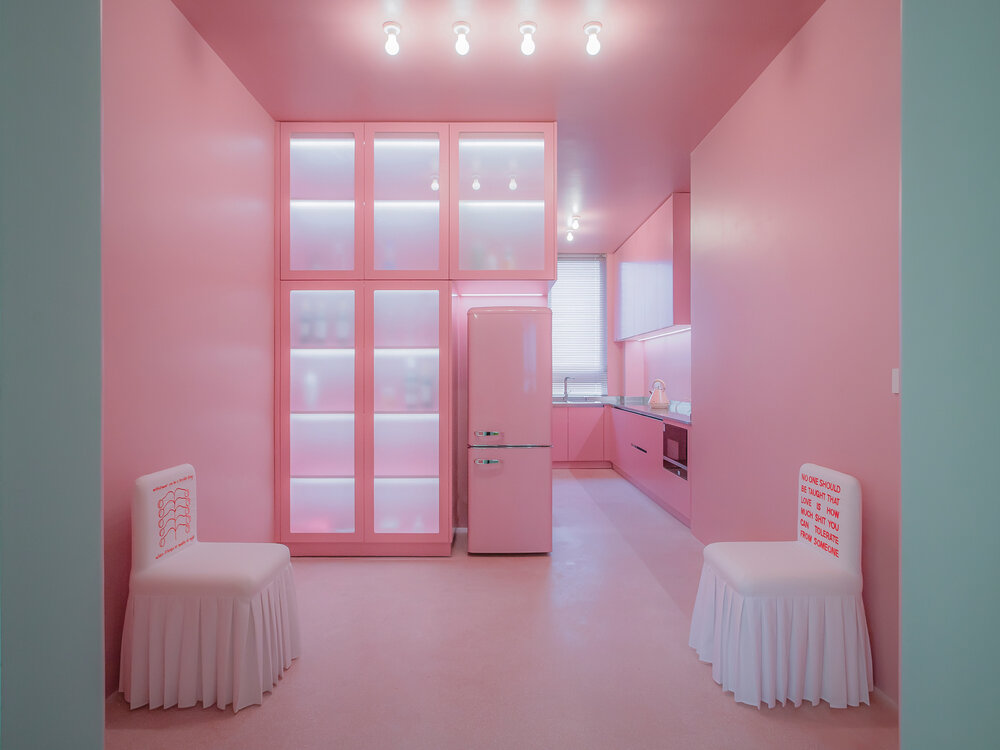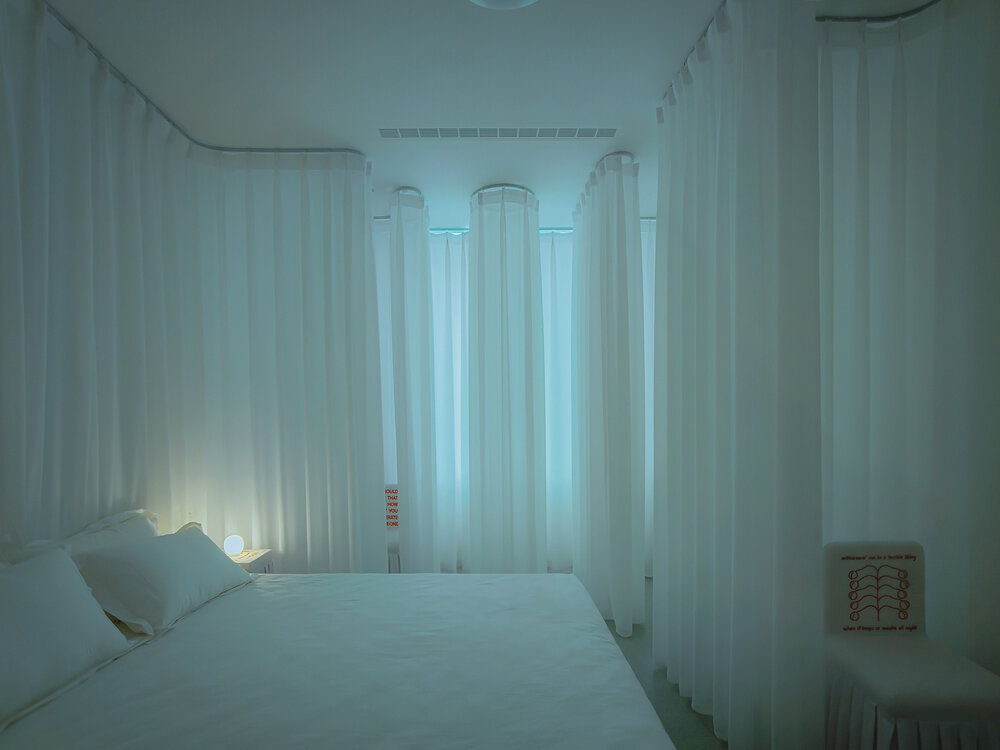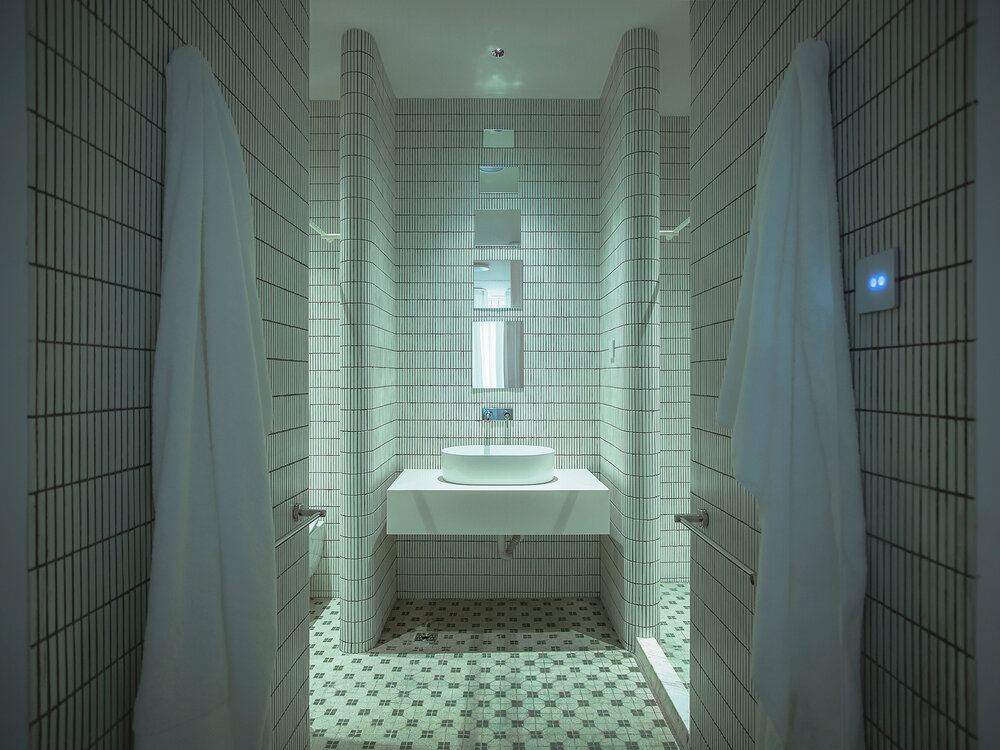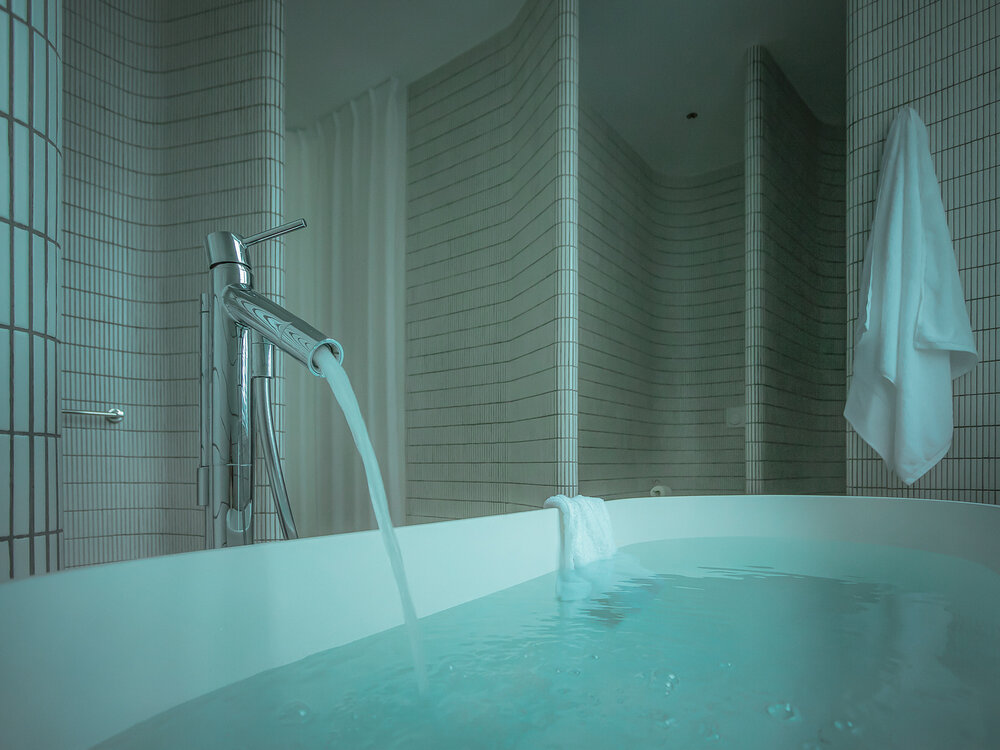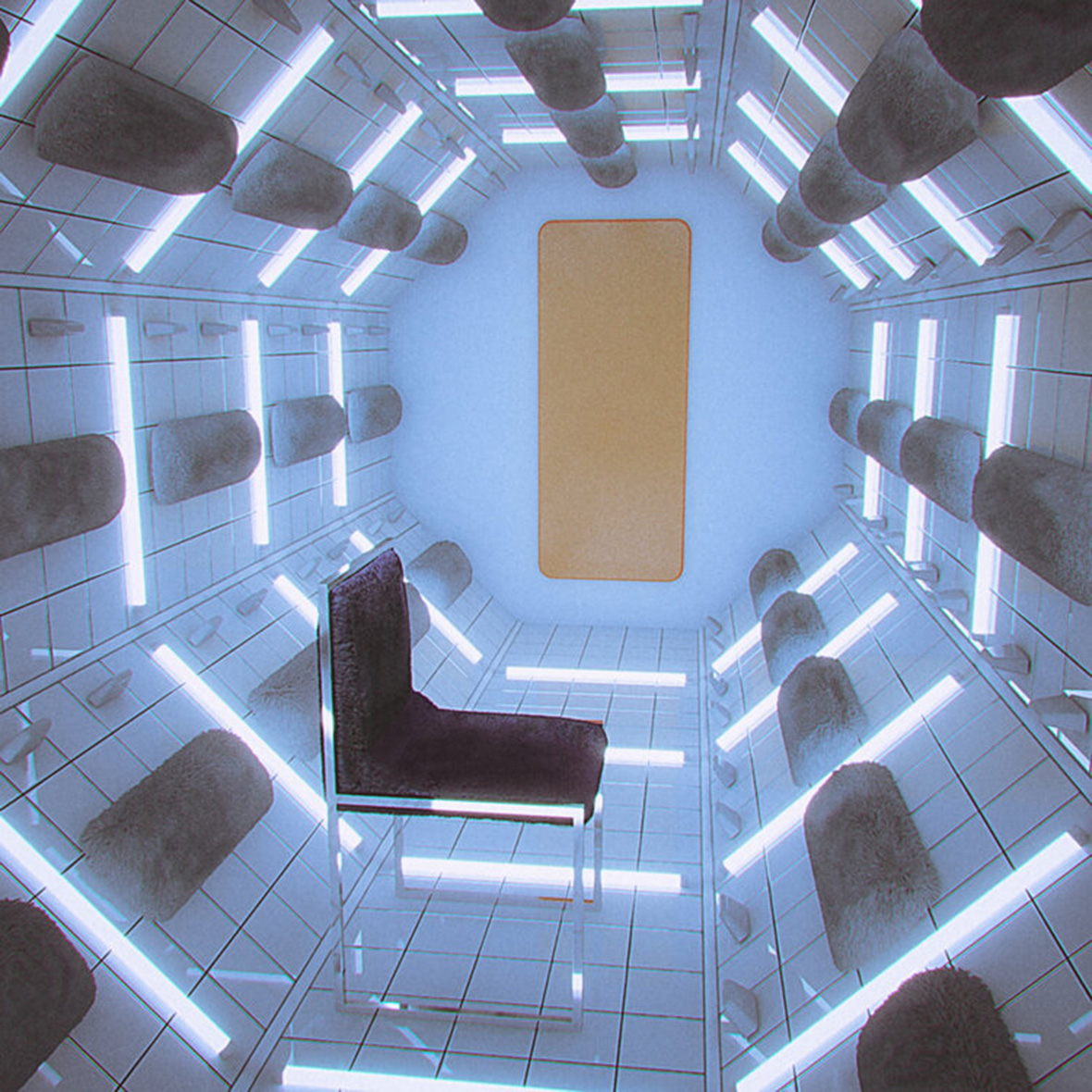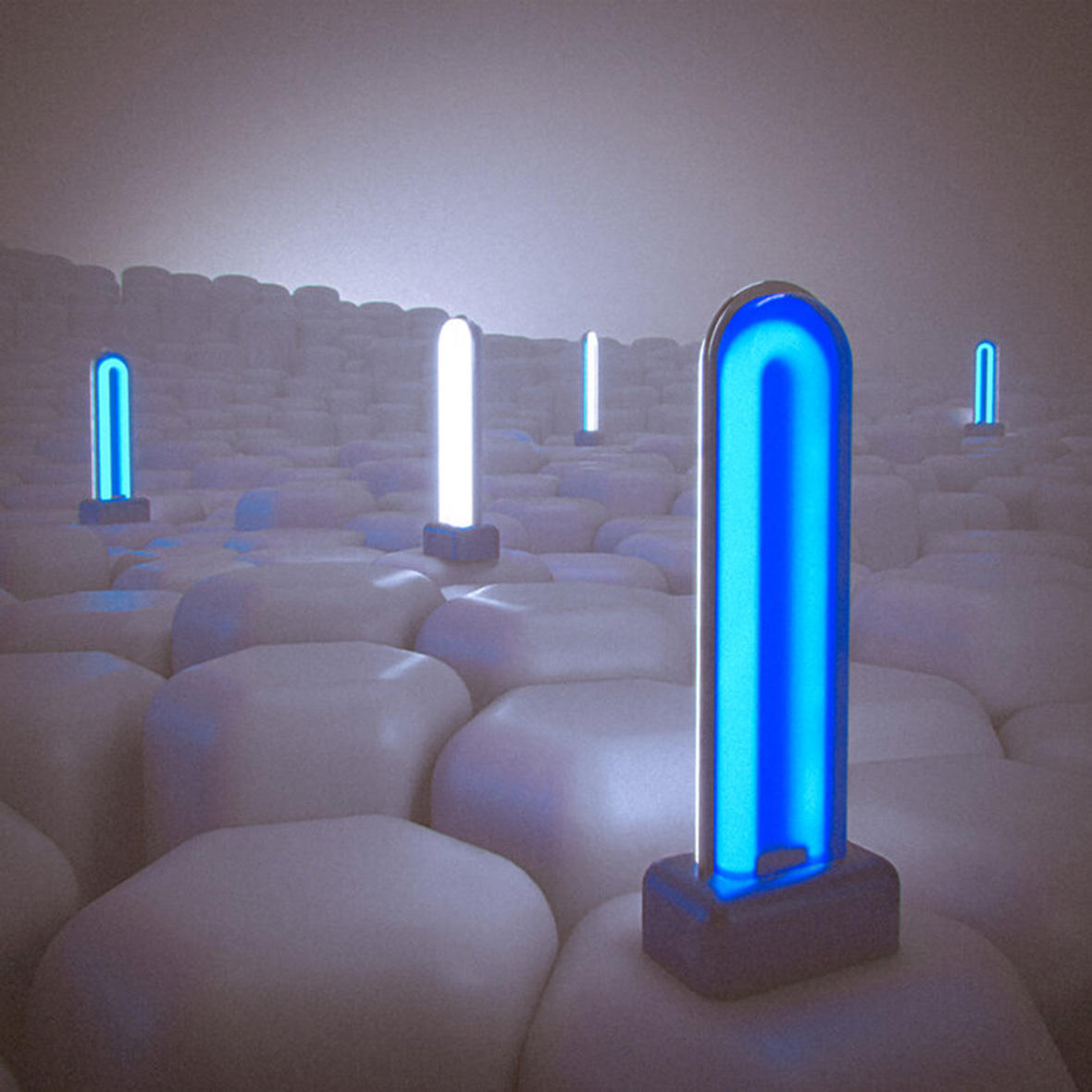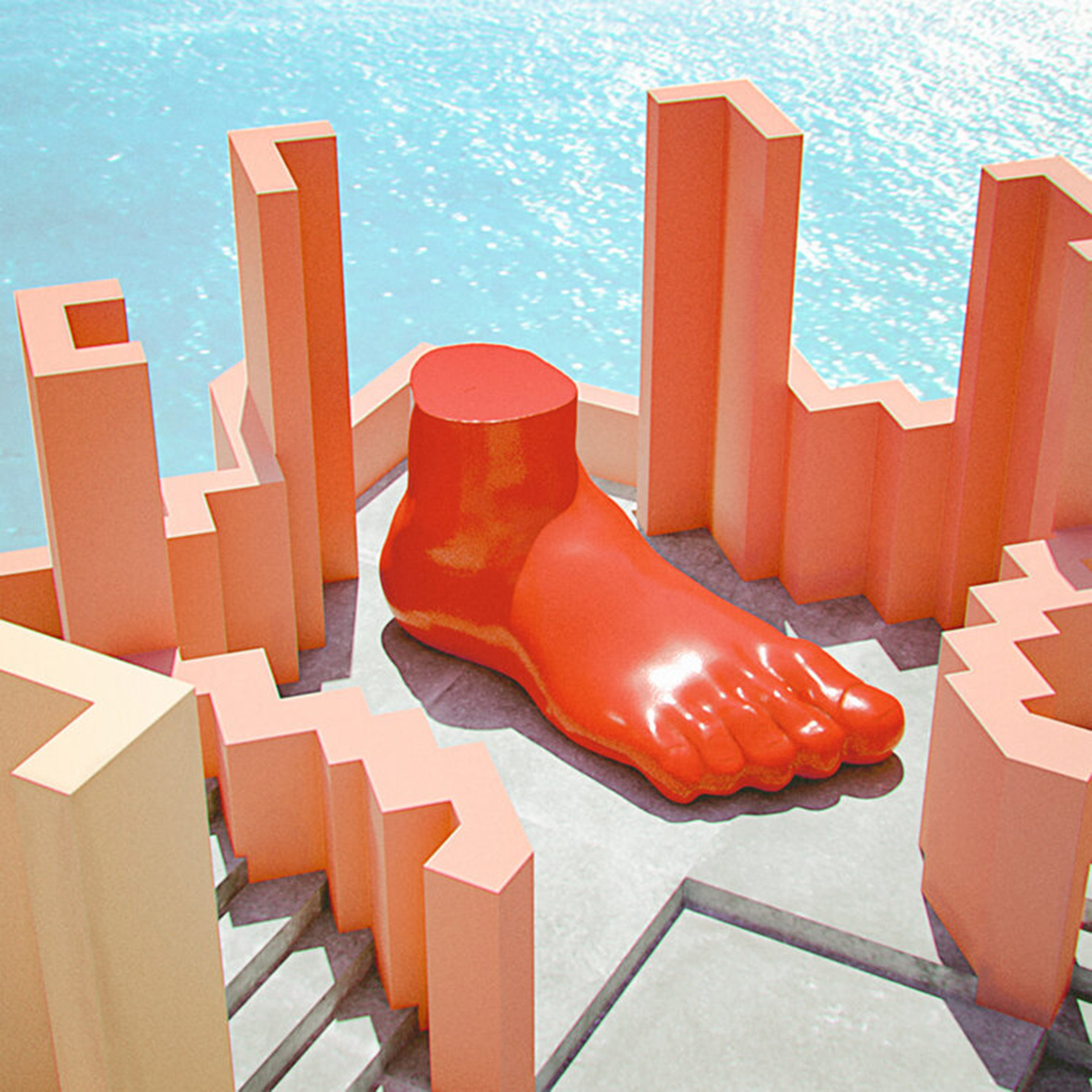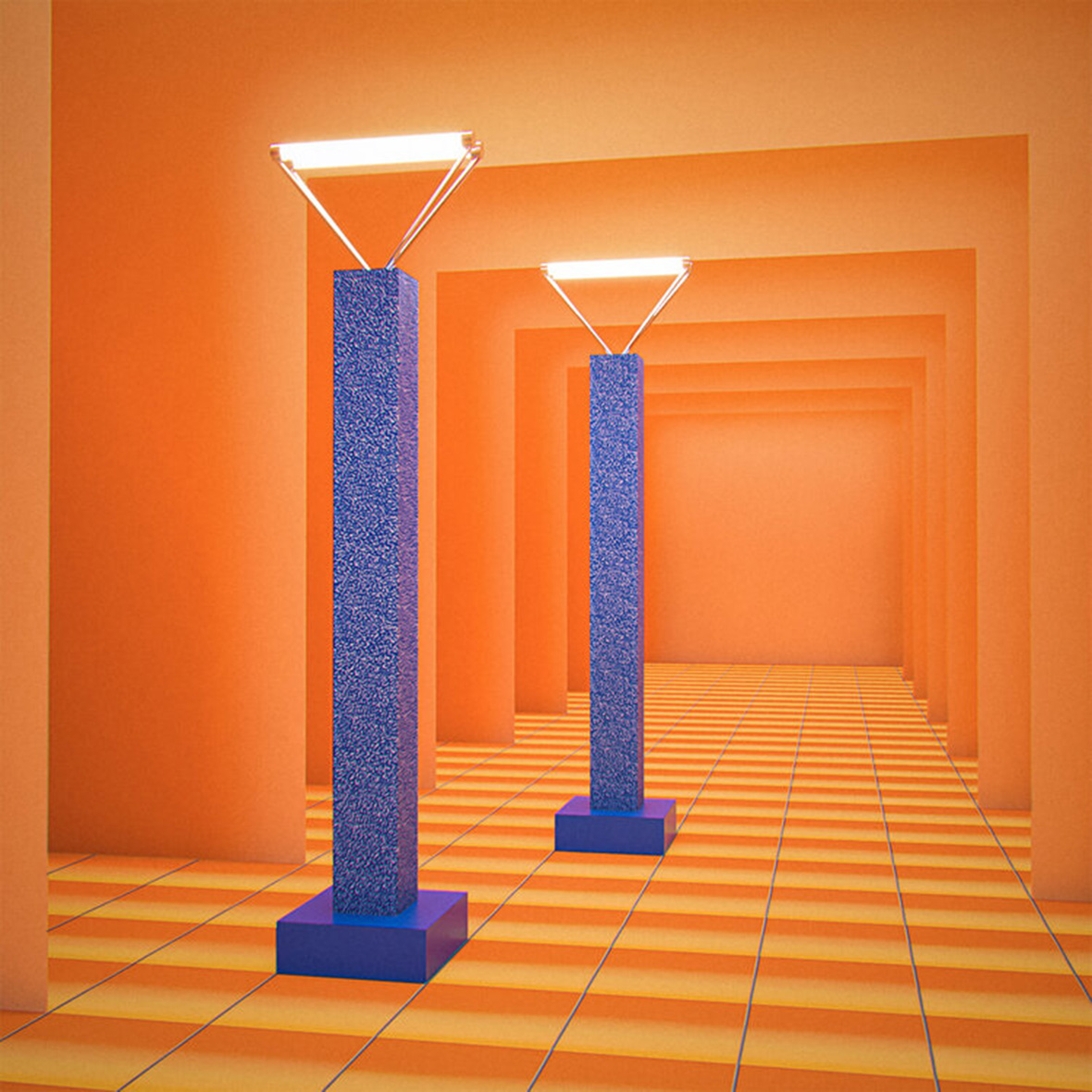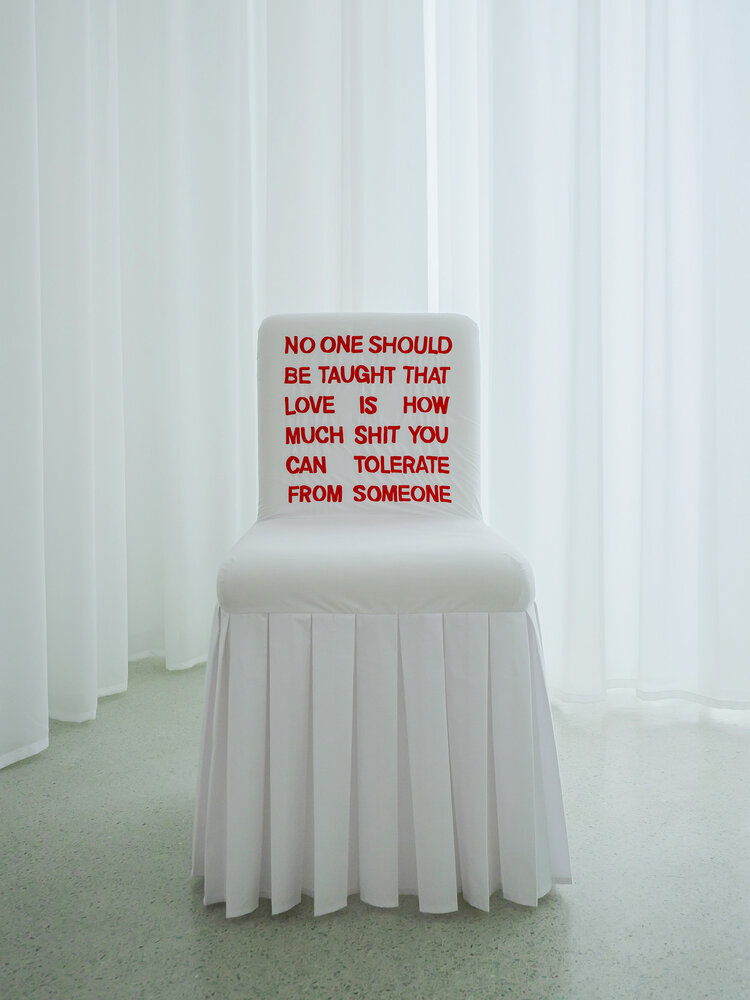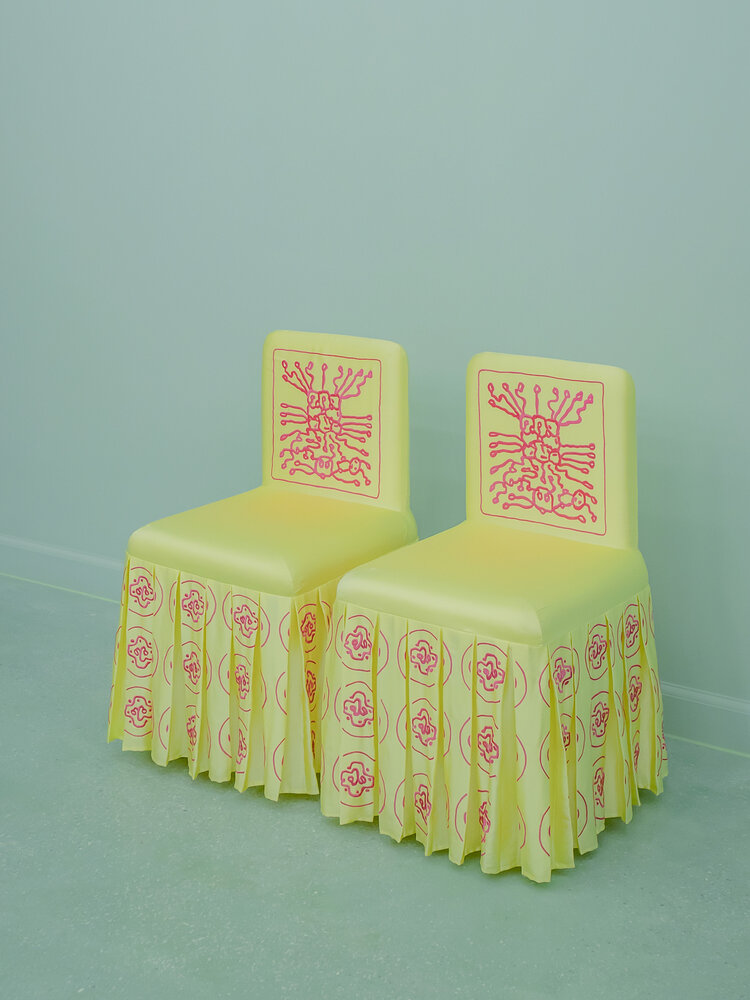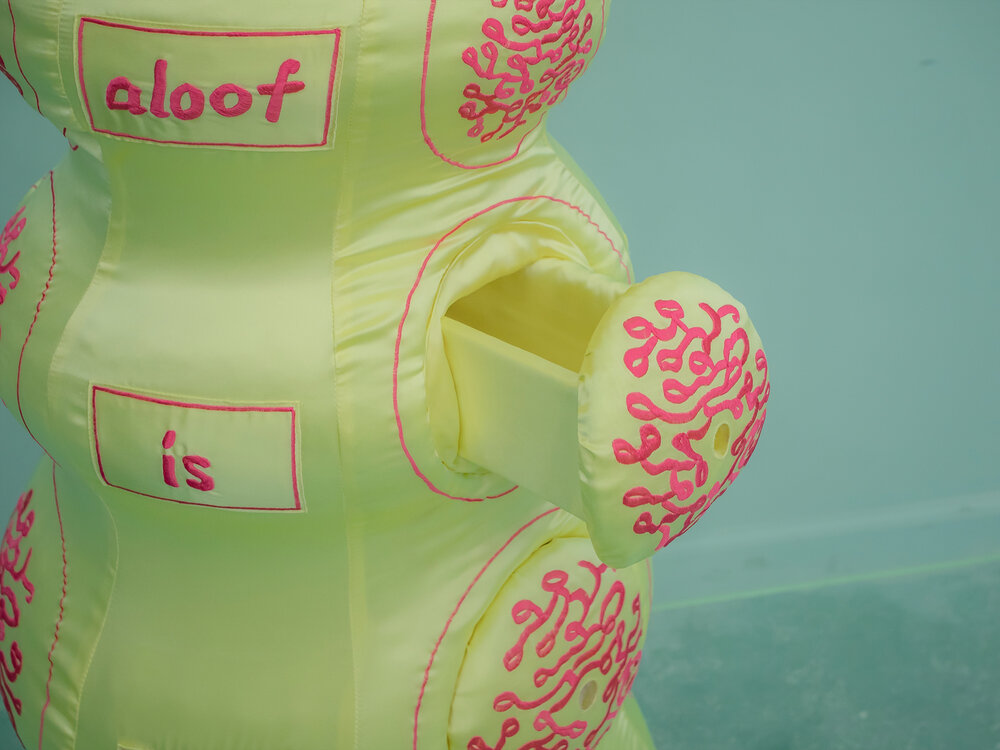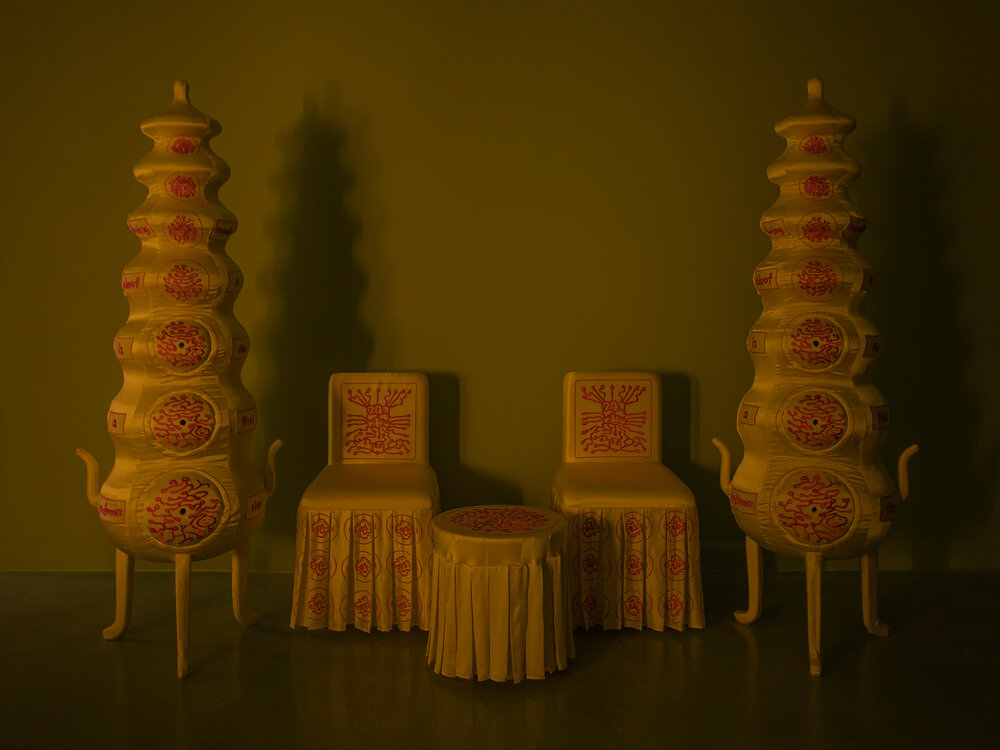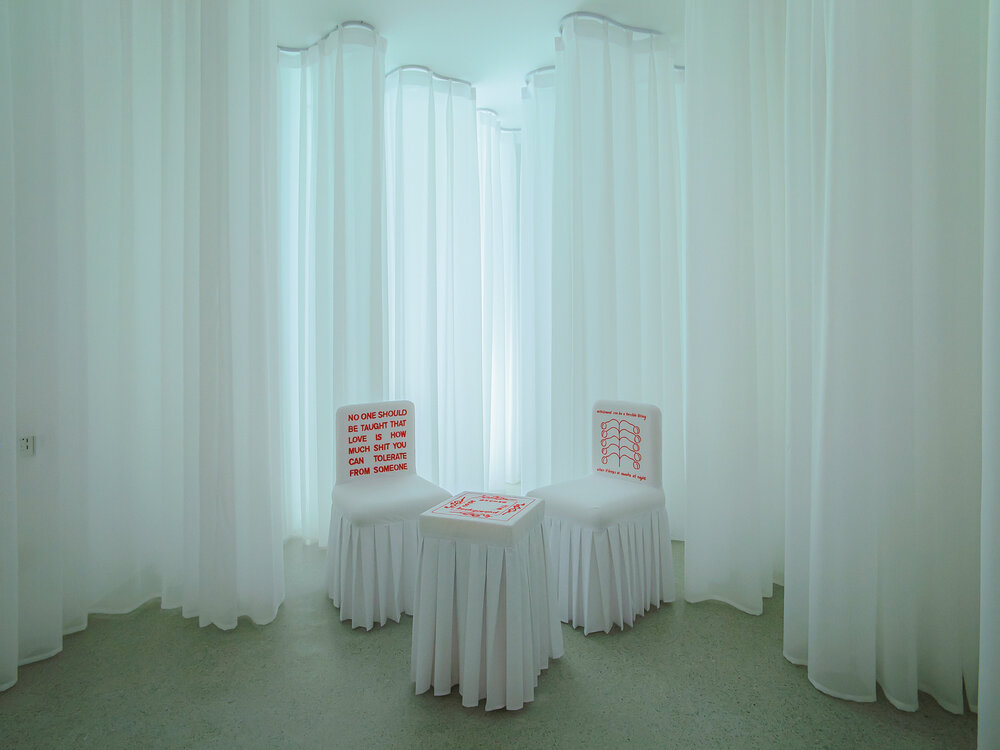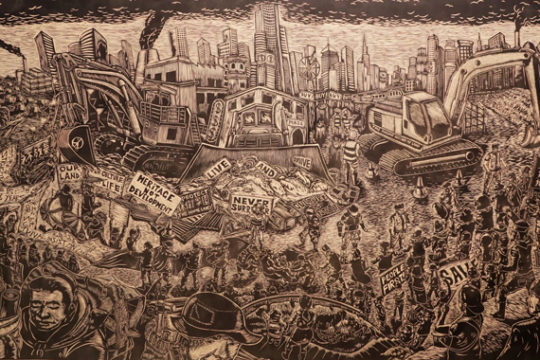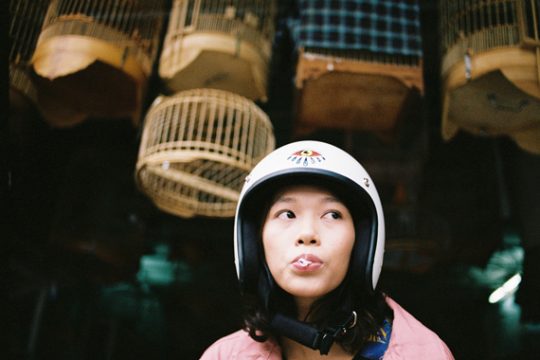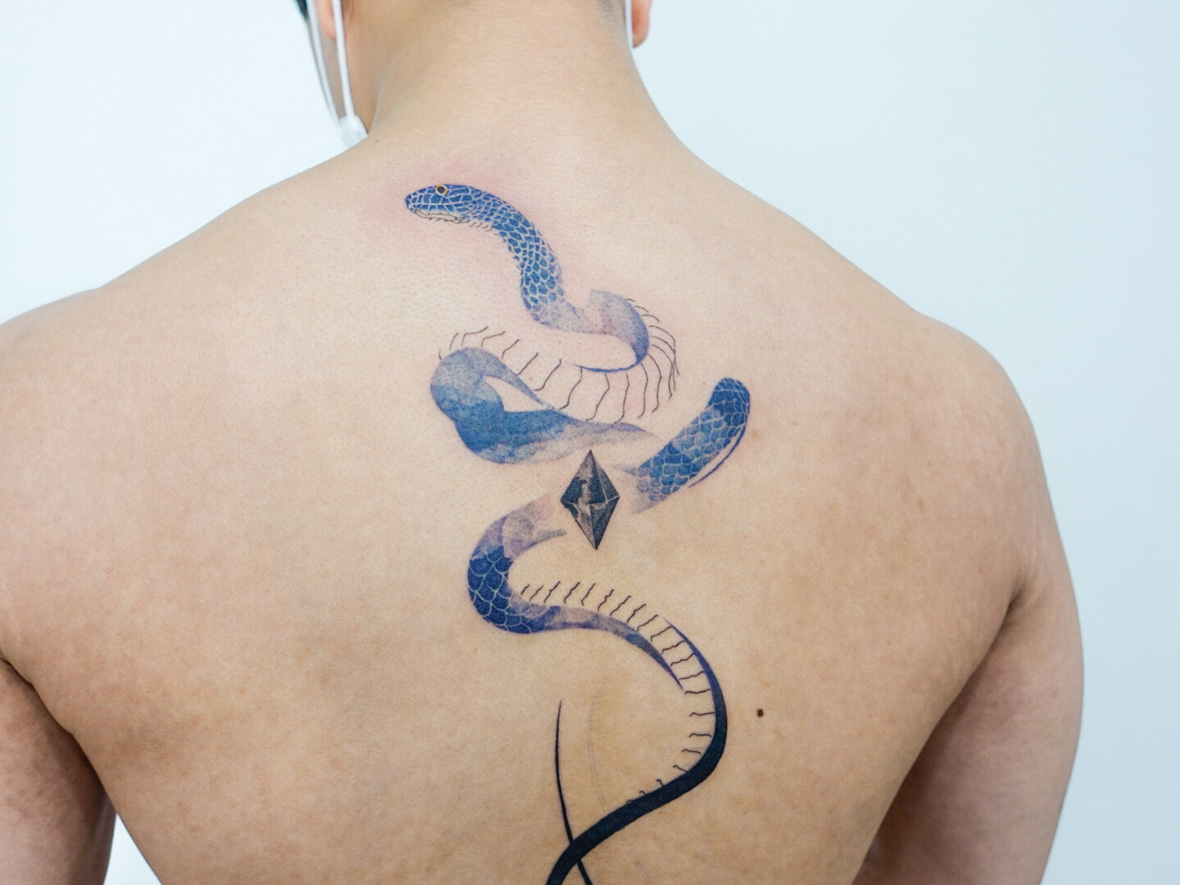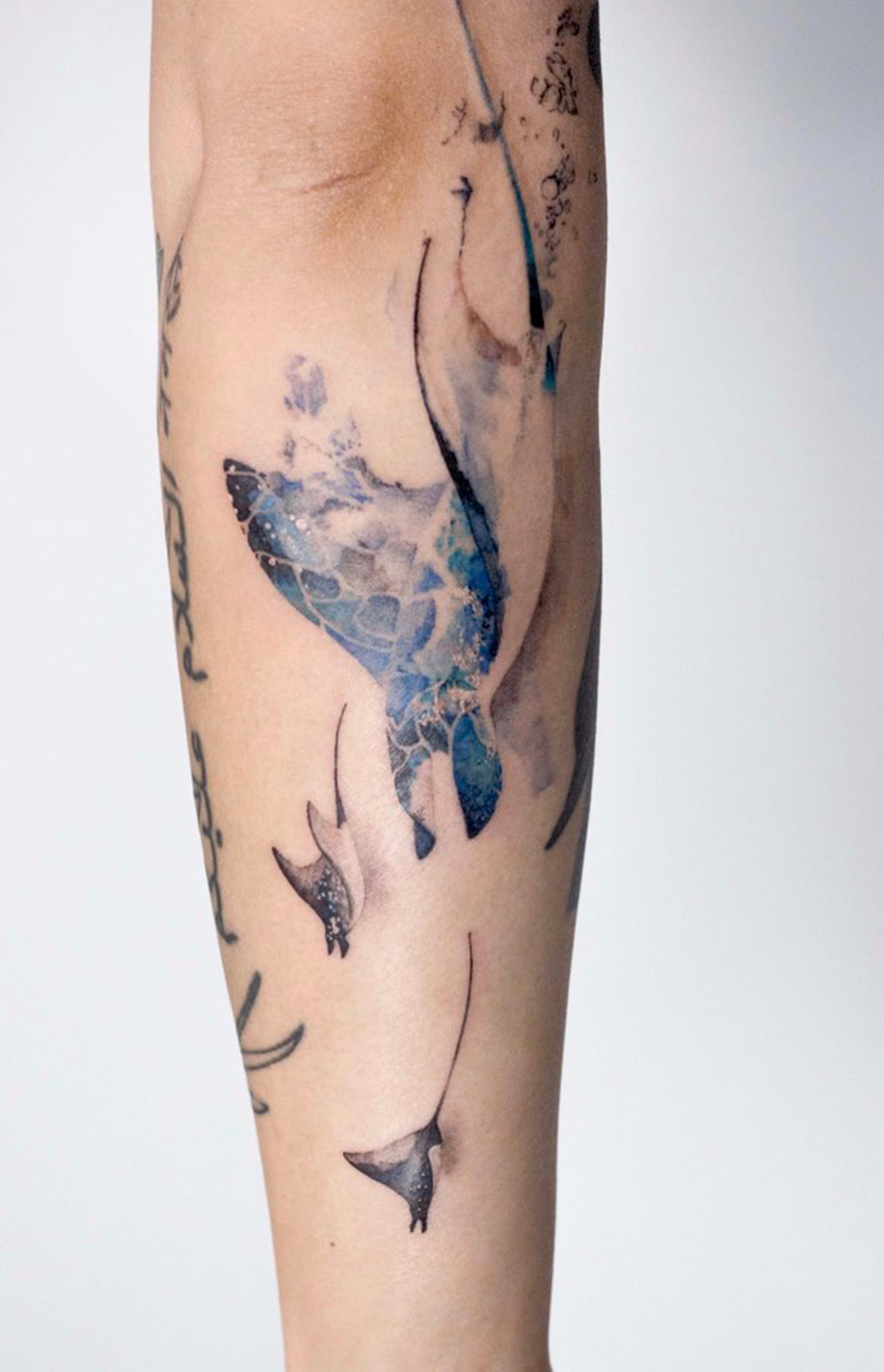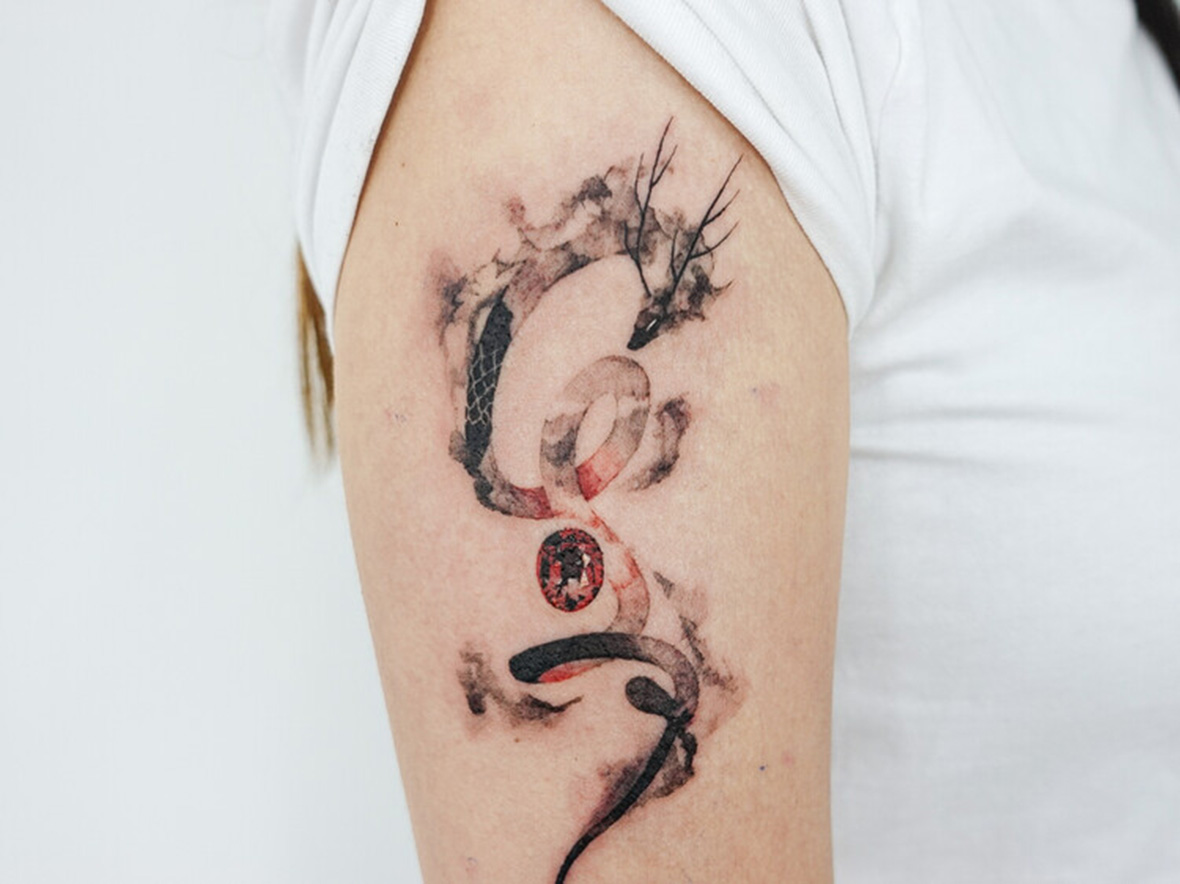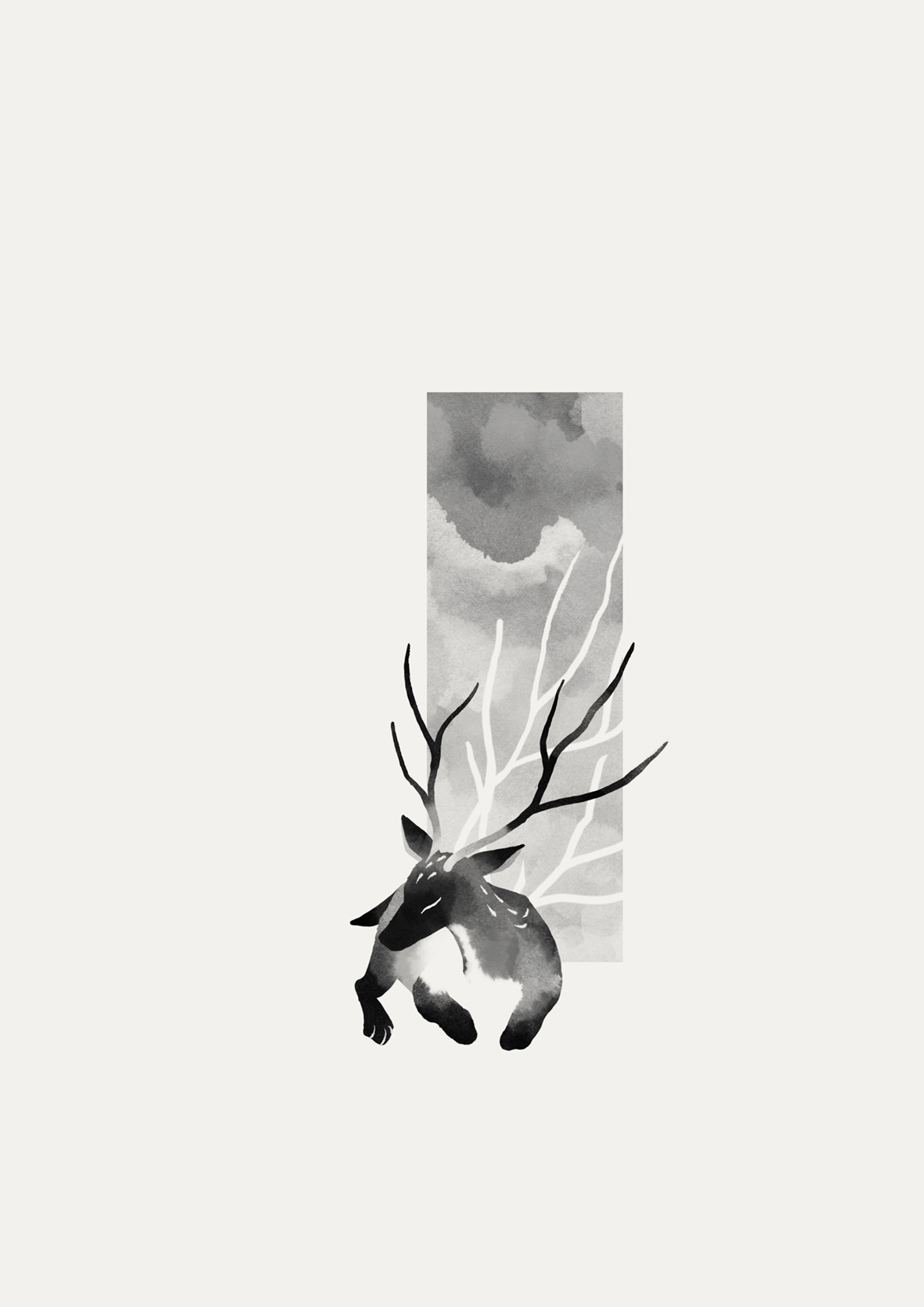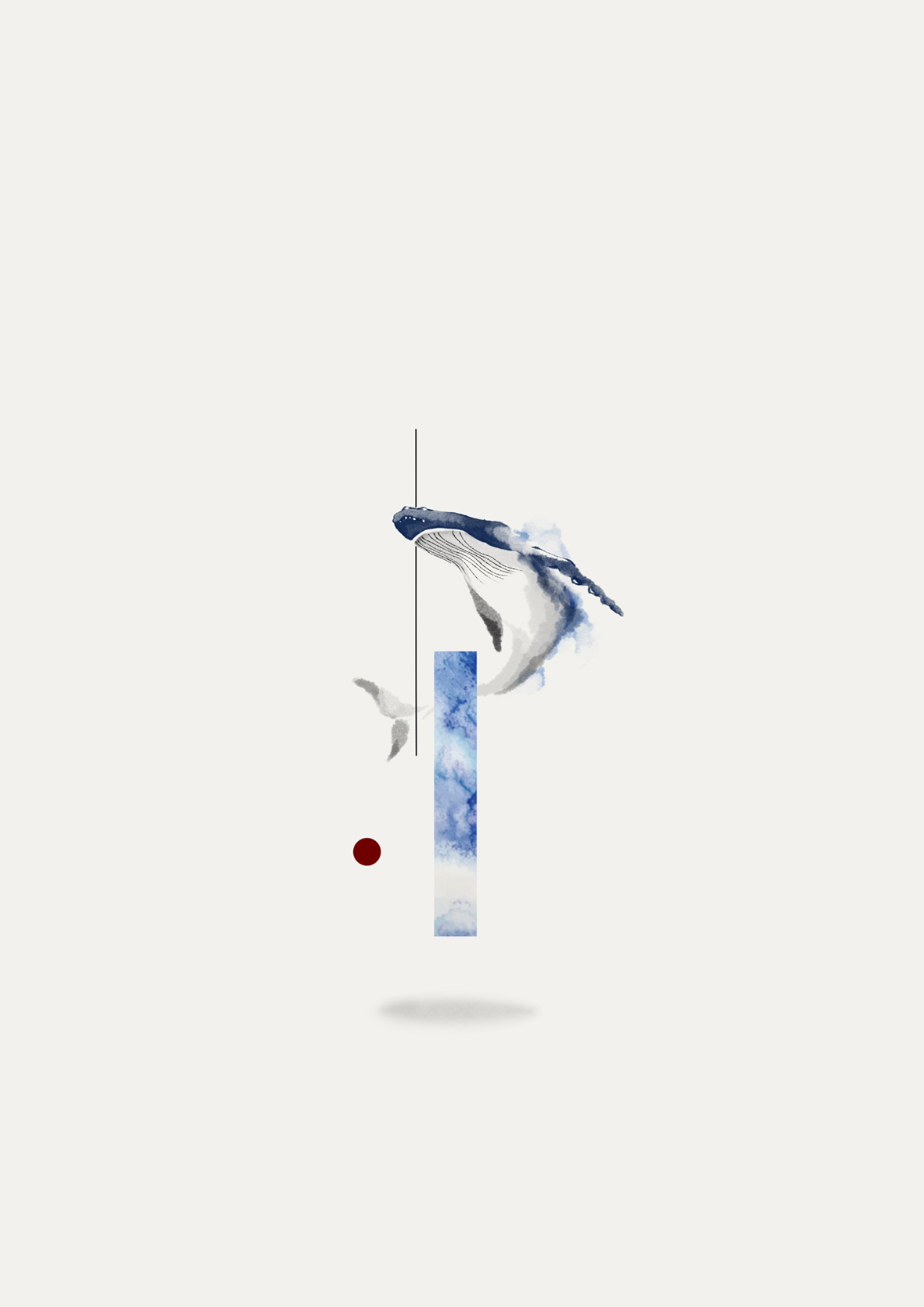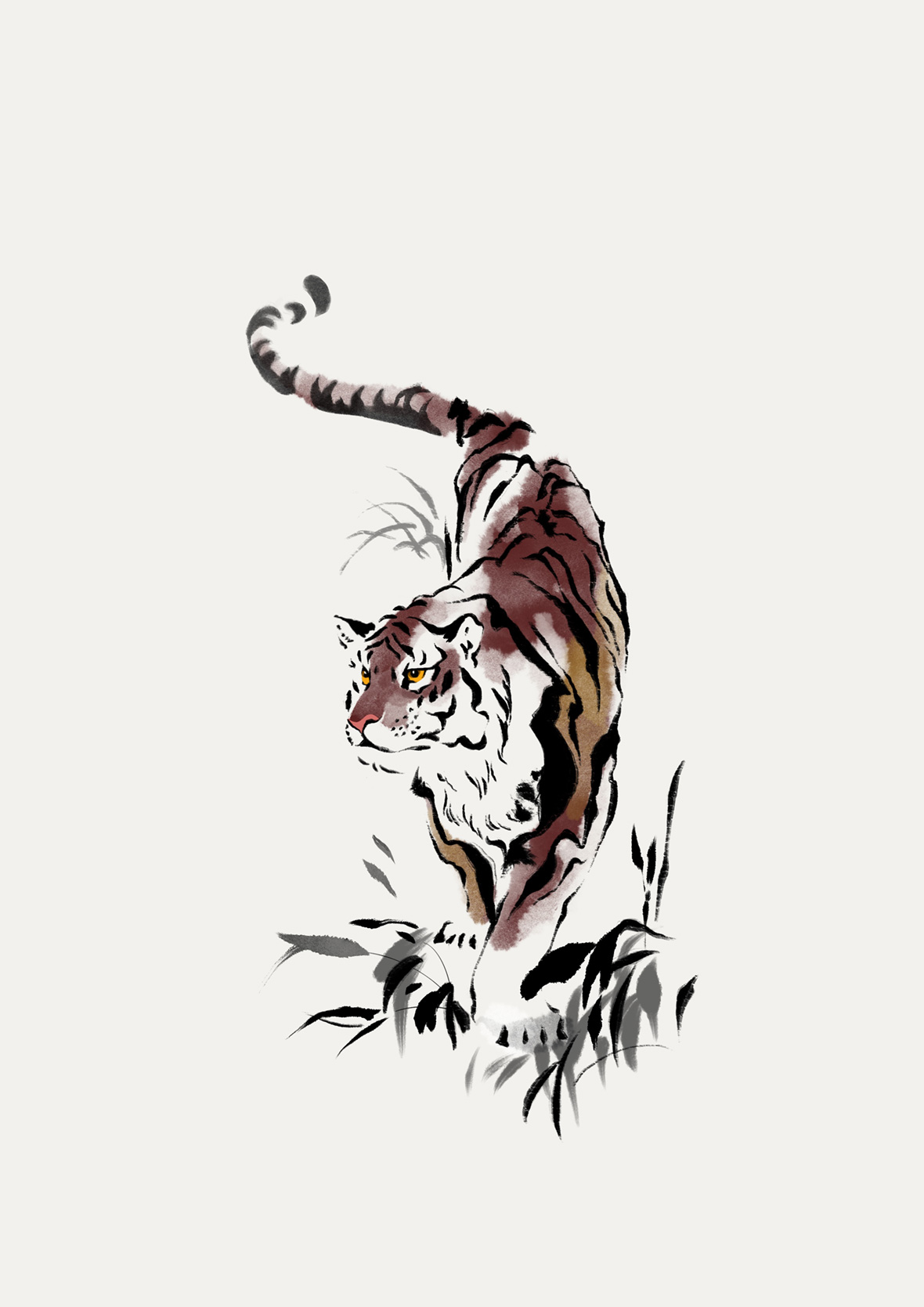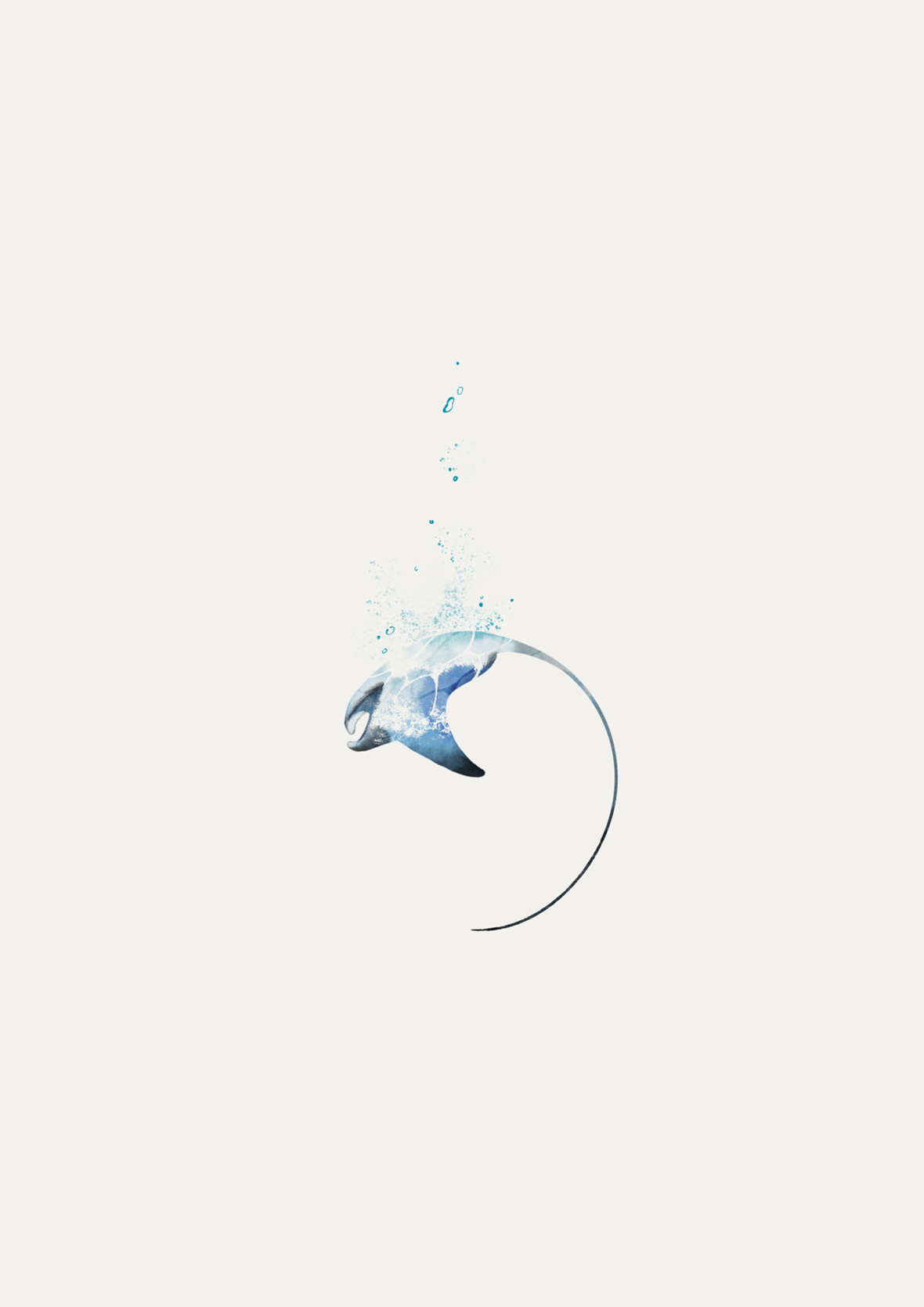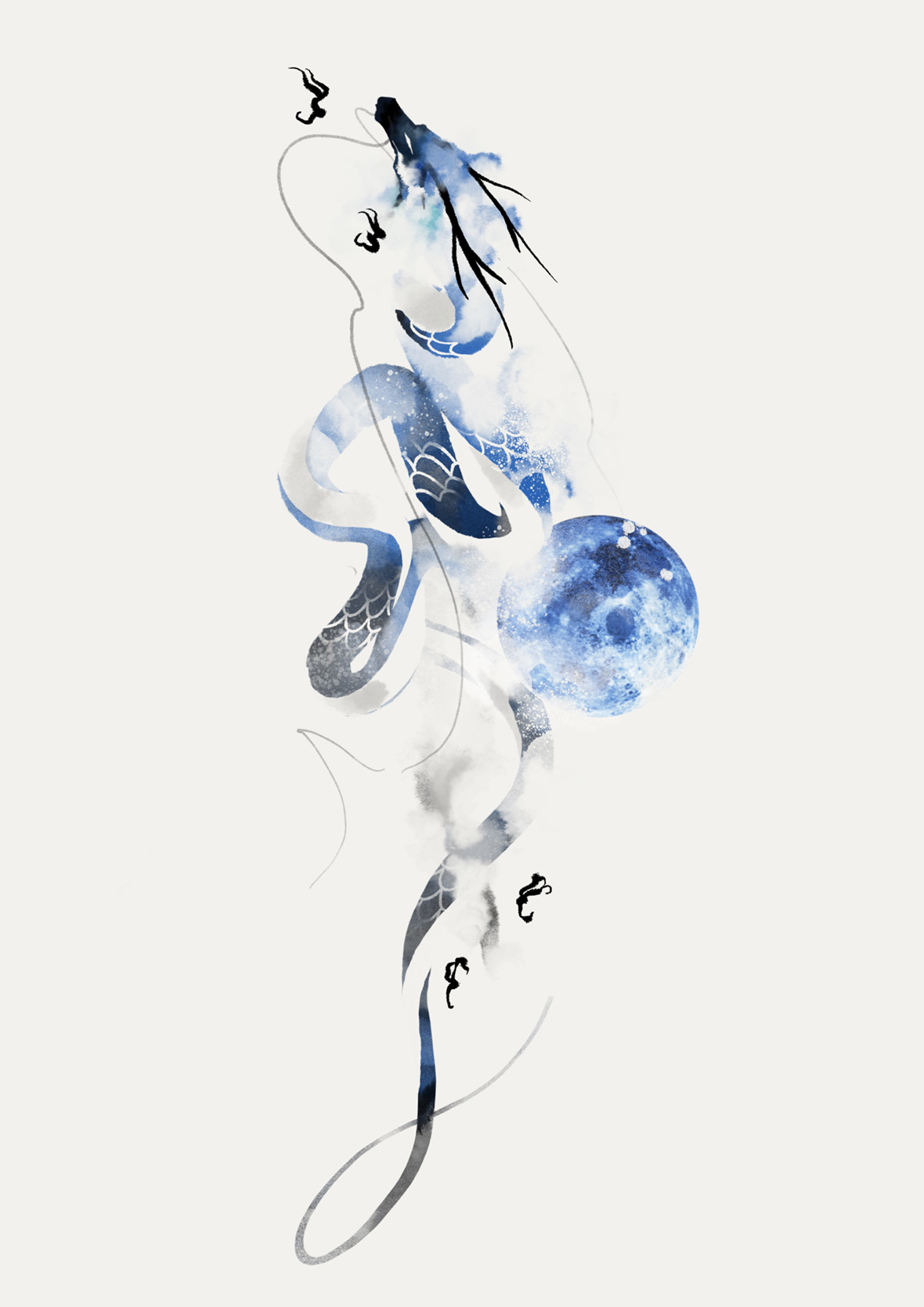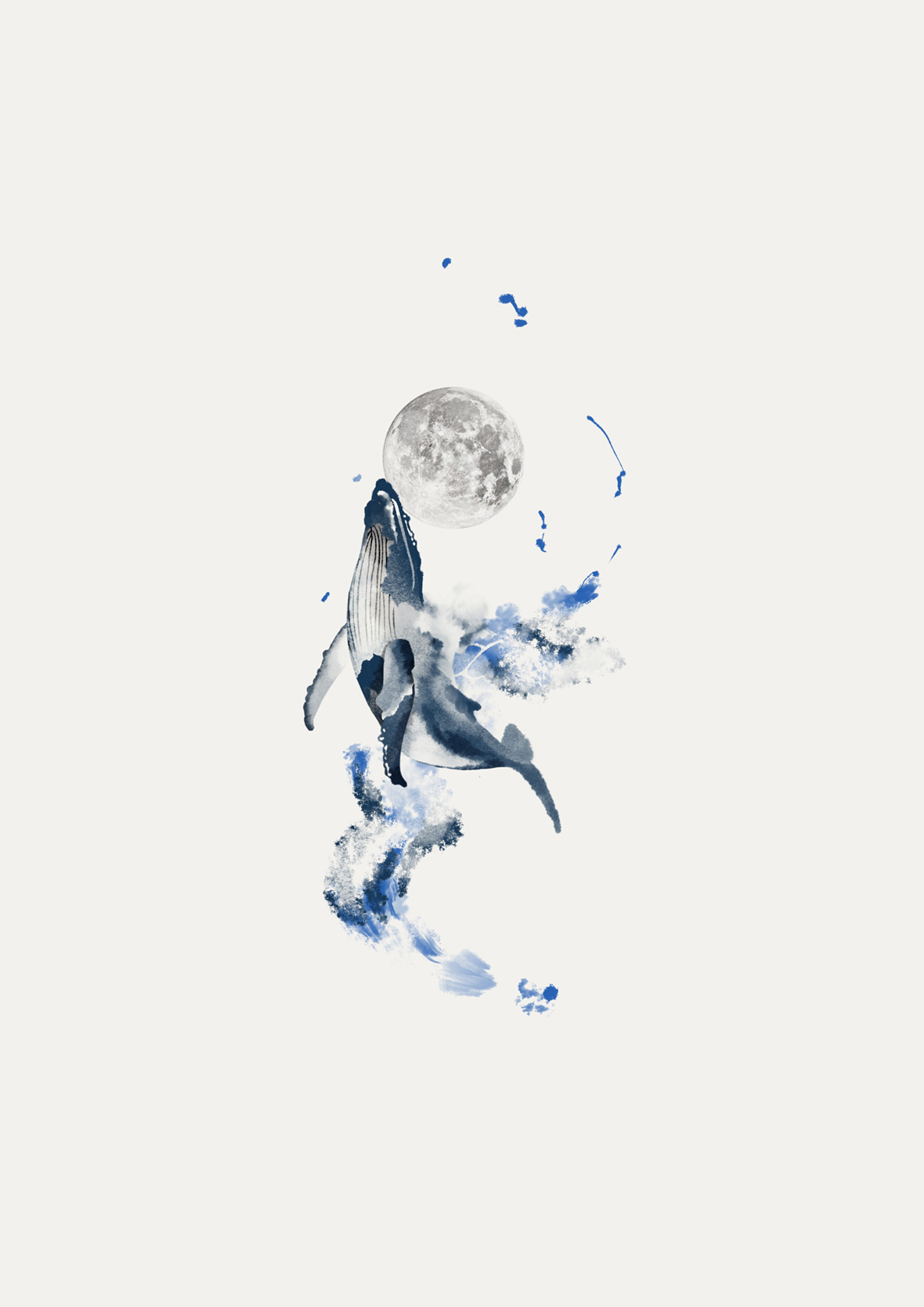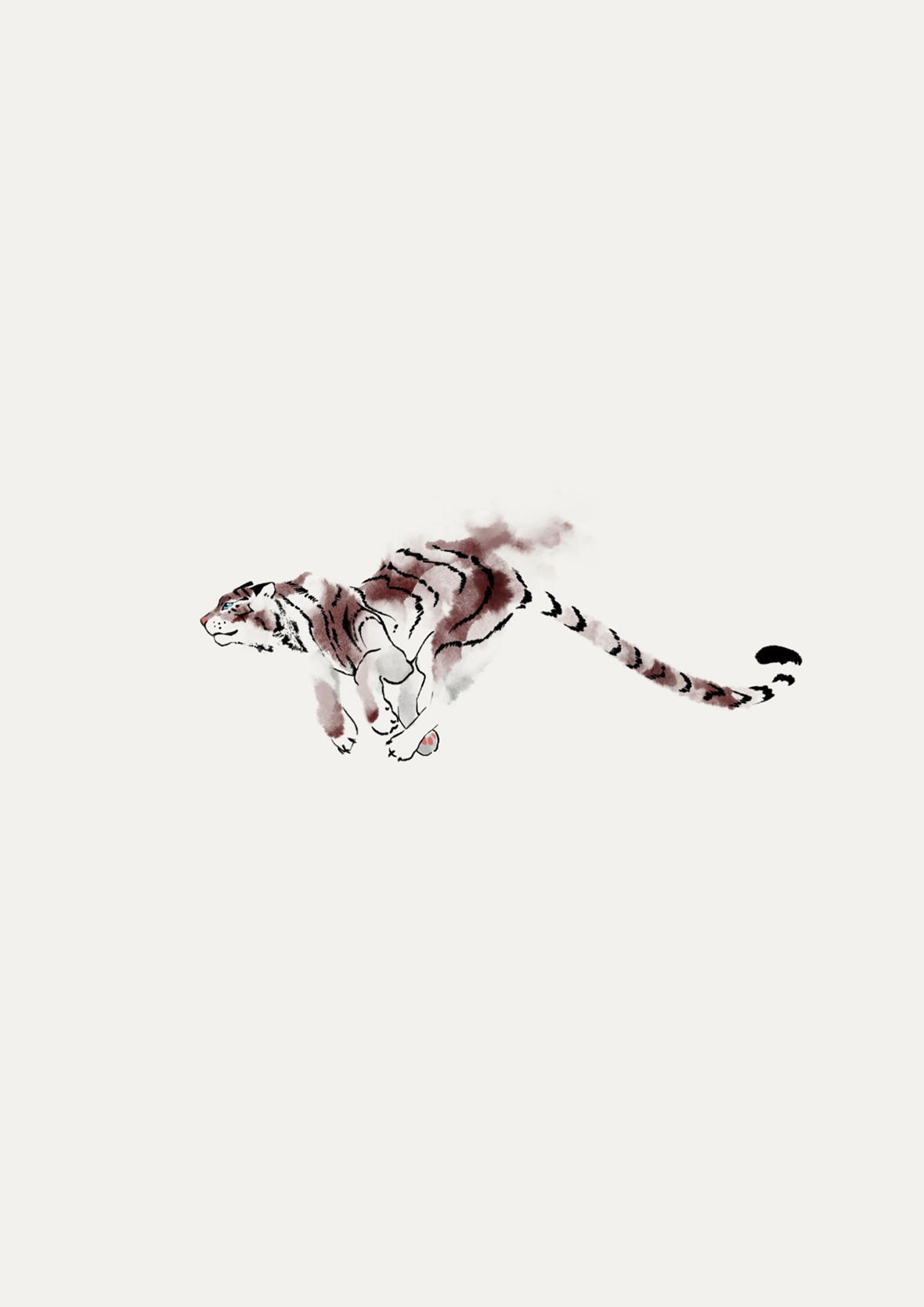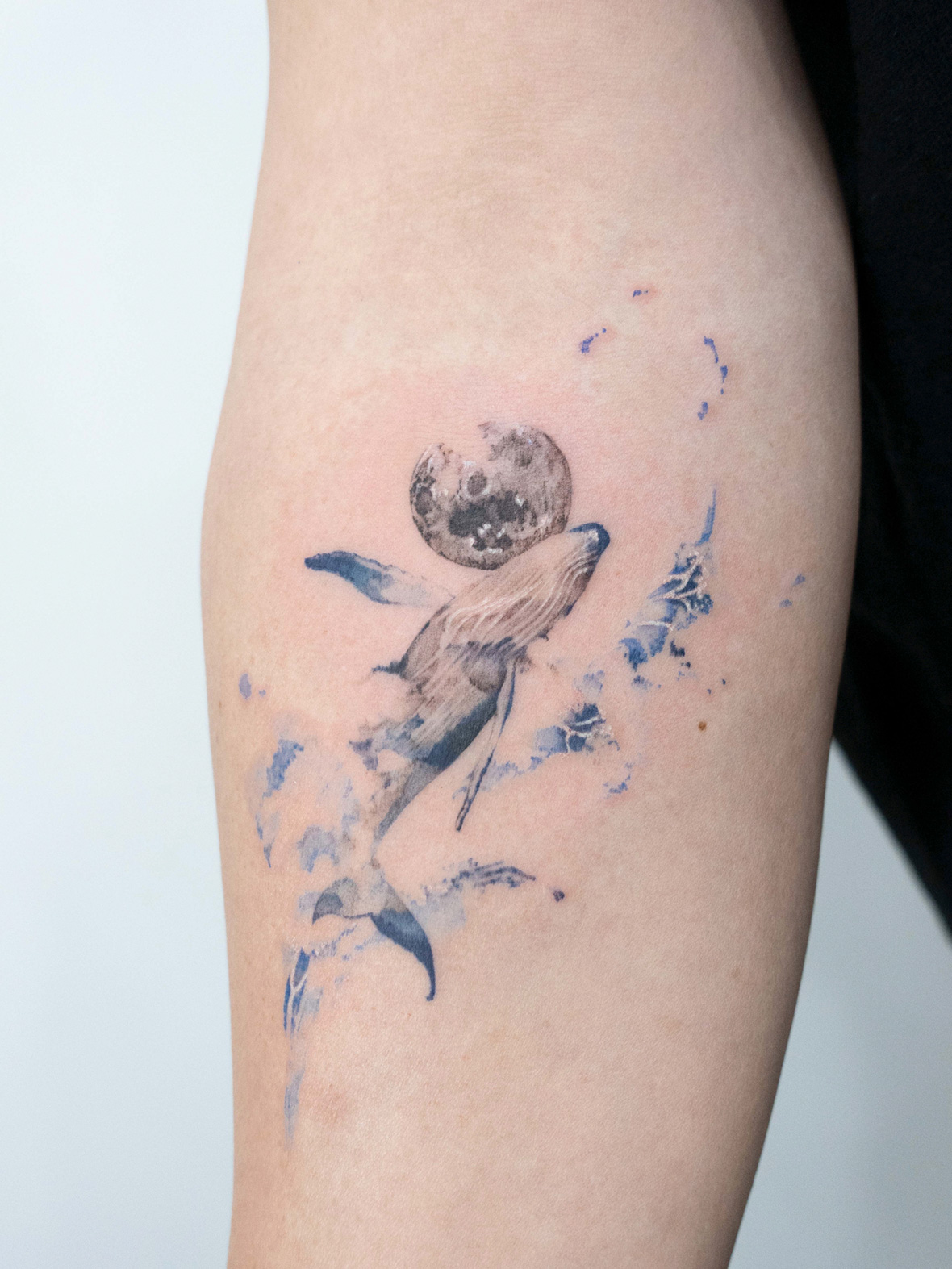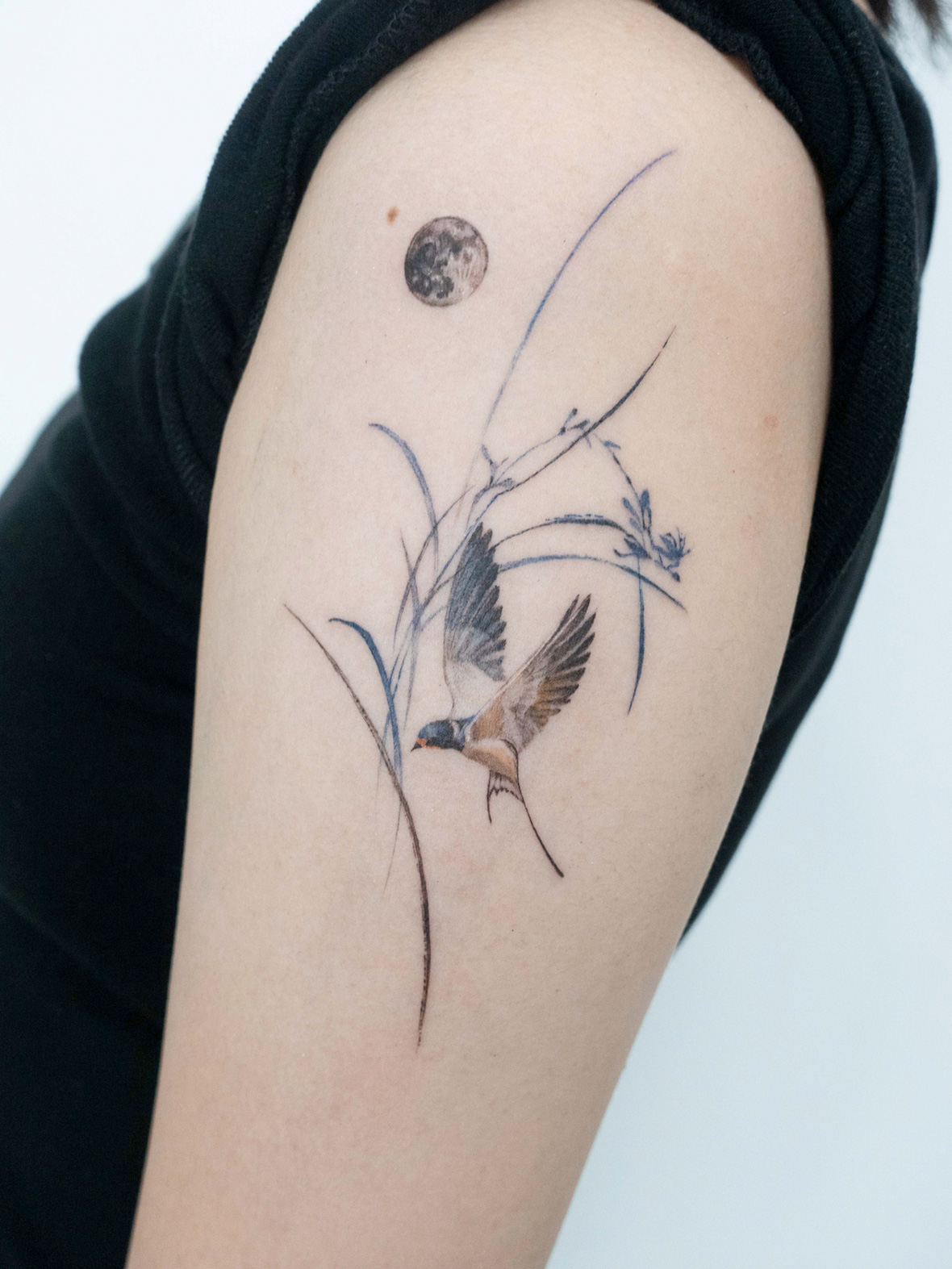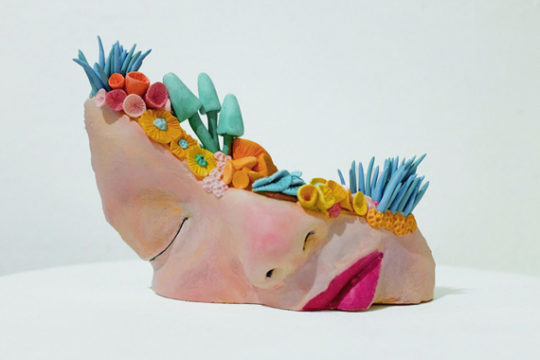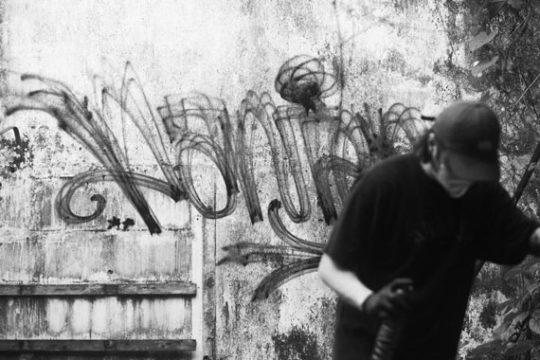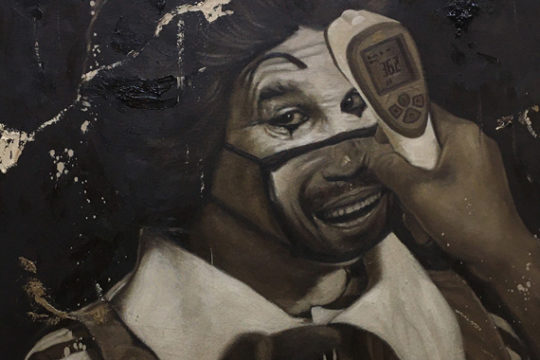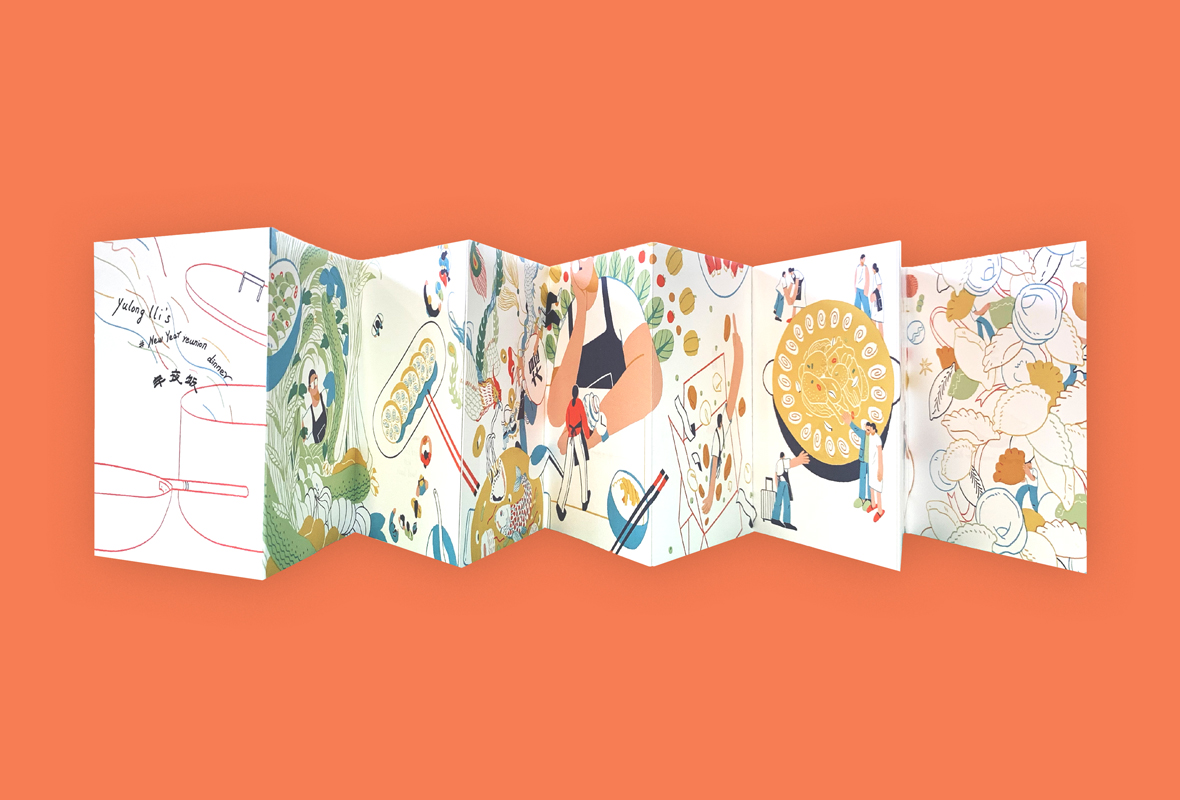
For some, art is mainly a method of self-expression. But for Shanghai-based illustrator Lli Yulong, art also comes with a certain responsibility. It was a realization that the Chinese artist only arrived at after plenty of soul searching. To him, art is wielded as a means of offering people clarity on what truly matters in life, whether it be love or something as simple as a delicious meal shared with friends. Art, at its core, can elevate the mundane to the profound, and good art should come without ego. It’s precisely these aspects of Lli’s work that make it so relatable and enjoyable. “When I work, I try to put aside any hubris, and just be more open,” he says. “I try to be in attunement with the world so that I can truly savor and experience it all.”
Since graduating from the China Academy of Art in 2017, he’s found recognition from the art world both domestically and abroad. He’s taken part in an art residency at Shanghai’s Swatch Art Peace Hotel and received awards from a number of prestigious competitions, such as the World Illustration Awards, the Society of Illustrators, Adobe Top Talent, and more. He’s also created illustrations for media outlets and commercial brands alike, working with names like New York Times, GQ, Apple, Google, and more.
也许在不少人眼中,艺术创作是表达个性的方式,认为艺术是自我的另一个出口,而现居上海的插画艺术家李豫陇(Yulong Lli)则不敢苟同,他将艺术创作视为一种责任,这种责任,源自多年来他对世界的观察以及亲身经历。创作对他来说,像是颜色与线条对身边事作出的回应,沉淀下对于爱、食物和生活等平凡世界里的感受,来换取一味的自我漫浸。李豫陇说道:“在创作中,我尽力去克服自恋,达到开放,富于回应。不是占有,而是收敛,更多的是体验、是感受。” 他的作品大多因现实而启发,因而让“共鸣”这件事变得容易。艺术创作者对于他来说,像是世界的过客,留下优美、精致的颜色和轮廓,那些都是对普世赞美的诗歌。
2017 年毕业于中国美术学院之后,这份 “责任心” 让李豫陇的作品于全球各地博得了认可。在最近的 2021 年,他作为艺术家参与 Swatch Art Peace Hotel 艺术驻地项目,作品被展览收入囊中。回首过往几年,多个国际奖项也都有他的席位,包括 WOI(世界插画奖)、SOI(美国插画家协会)、Adobe Top Talent(奥多比顶尖人才)等奖项。不光如此,李豫陇在商业领域也是热门人选,从《纽约时报》、《GQ智族》等媒体巨头,再到苹果、谷歌、Gucci 等耳熟能详的各类品牌,这些都是他的客户。
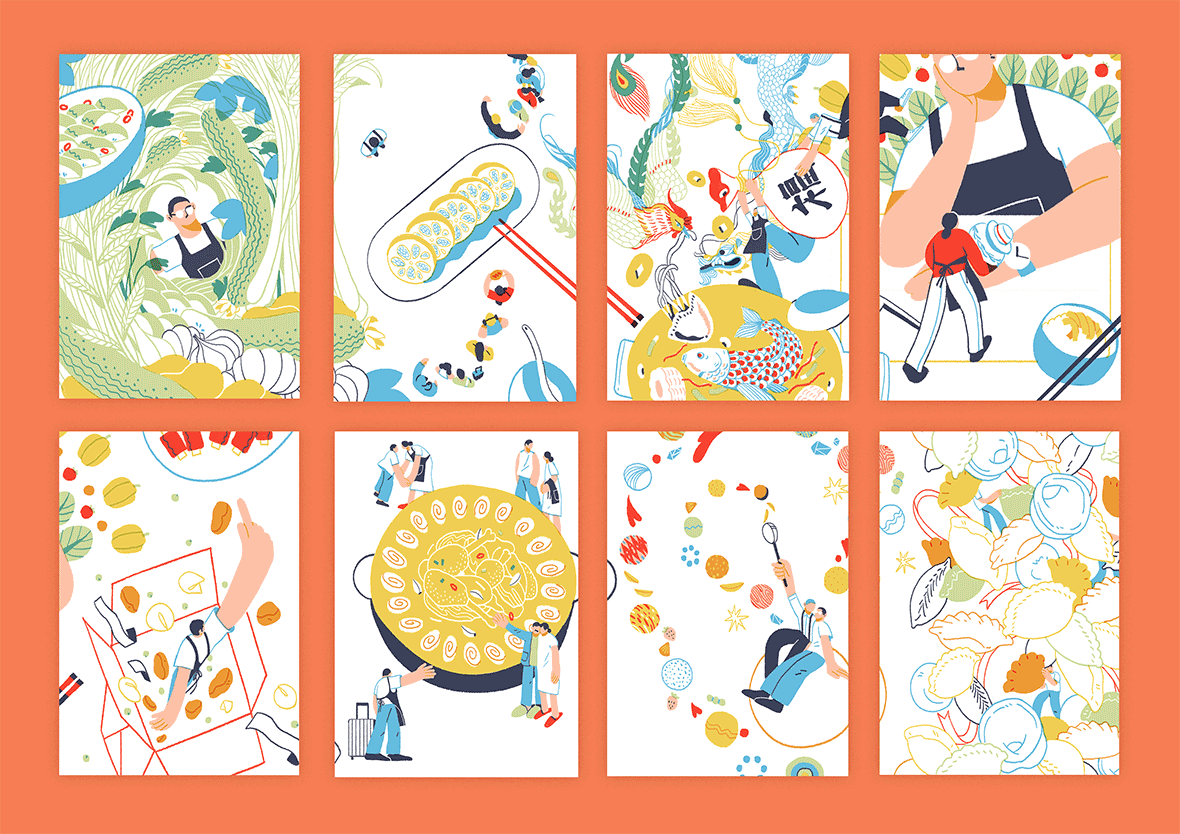
During university, Lli was fascinated by the differences between Western and Eastern aesthetics. These disparities, he noted, allowed people to discern the origins of certain pieces of art and media. As he saw it, motifs in Eastern art tended to rely on subtleties—with artists looking to tell stories and evoke emotions in nuanced ways. Motifs in Western art are more straightforward, pared-down, and more rigid in composition. He appreciated both methods and saw an opportunity in incorporating qualities from both worlds within his work. His illustrations today—with influences culled from vintage posters, contemporary art, and graphic design—exemplify this marriage of aesthetics. “When ideating a piece, I prioritize inspiration from the culture and art traditions that I’m familiar with,” he says. “That’s all then mixed together with my interests and fascination with Western aesthetics.”
New Year Reunion Dinner is a series that Lli began working on when he was an exchange student in England. Food, he believed, was an ideal motif that can both ground himself in his heritage and offer a level of relatability with Western audiences.
Born in Jiangsu, having studied in Shanghai and England, and with a significant other from Hong Kong, Lli looked back on his fondest culinary memories from these places to create the series. Dishes he drew include a pickled cabbage that his mother used to make in China, Cantonese sweet soup, a braised chicken and flour roll dish from Northwest China, and Shanghainese sweet-and-sour pork ribs. This menu was, at its essence, Lli’s life story summed up in illustraive form.
早在大学念书时期,李豫陇就对东西方图形符号差异的课题情有独钟,在他看来,图像和文字有异曲同工之处,是人类本能获取信息的方式。东方符号内敛含蓄,能为作品渲染情绪和故事性;西方符号直白、简练,为作品确立框架和基调。东西合璧迸发出十足的视觉张力,这种创作方式在他日后的插画作品中处处体现。后来在融合了复古海报、现代主义艺术等风格之后,形成了他作品现在的样子。李豫陇说道:“构思作品时候,往往会优先从自己熟悉的文化与传统艺术中寻找灵感,另一部分则来自兴趣与西方潜移默化的审美观。”
《年夜饭菜单》系列来自李豫陇在英国交换学习时期的创作。正如上面所提到的,“图像和文字的契合之处”,李豫陇选择用食物视觉符号代替语言向身边朋友介绍自己。整套菜单的构思与出餐顺序遵循了西式习惯,包括前菜,主菜和甜品,但菜单内容却反映了一段成长经过的追忆:例如对出生地甘肃的西北小城印象、在上海和英国生活学习的经历、以及与香港伴侣相识的回忆,这些片段都纷纷被 “做成美食”。与之相对应的,是 “老妈的泡菜” 和 “港式糖水” ,西北 “鸡肉垫卷子” 和沪上“糖醋小排”。这顿年夜饭,李豫陇围绕自己摆盘,一道道拼凑着他成长中的烙印,亦是一次通过插画讲述故事的尝试。

Sharing stories and experiences are at the heart of Lli’s illustrations. In a separate project titled Food Words of Shanghainese, he again uses the food motif to offer his perspective of Shanghai. In it, Lli draws a diverse spectrum of Shanghai’s inhabitants, as interpreted by common slang derived from varying dishes and ingredients. Take, for example, three-delicacy soup, a Zhejiang culinary staple, which when phrased as “rotten three-delicacy soup” refers to a person who’s absent-minded and unreliable. Another is “onion bulbs,” a derogatory lingo referring a foreigner who behaves impulsively. There’s also youtiao, a Chinese fried dough and common breakfast item, which when compounded with the adjective “old” (lao 老) is used to describe a slimy, untrustworthy individual. Plenty of other playful illustrations based on these food-related colloquialisms also appears in the project, including Big Mac, bean sprouts, and pork bone powder.
“The mix of these recognizable and unfamiliar motifs add additional context and interpretive possibilities to each term,” he says. “I’m hoping to add a distinctive touch of humor to portray Shanghai’s inhabitants in a contemporary format, and in doing so, showcase the potential of language, and how regional culture shapes and influences people.”
用视觉讲好故事,是李豫陇创作的核心。2021 年,结合自己在上海生活的经历,他再次“下厨”,从上海“食物”和“方言”两个角度创作了全新的系列 ——《上海食话》(Food Words of Shanghainese)。这一回,上海方言中食品名称的双关性成为切入点,树立了多组风格各异的沪上人士,一人一道菜,道道都是不同的腔调:“烂污三鲜汤” 是上海家常菜中的一锅炖,用来指代做事不走心、非常随便的人;“洋葱头” 来自上海话中的 “冲头”,加了 “洋” 就指那些莽撞、不懂行的外国佬;“油条” 是全国经典早点,上海也不例外,前面加上“老”字,形容阅历丰富、世故、油滑、不厚道的人;另外还有像“豆芽菜”、“巨无霸”、“排骨精”等等,都分别为人物立下了注脚。
细看这组作品,每幅又有丰富的视觉细节,讲述各自的故事,“烂污三鲜汤” 中的人物粗心大意,左右穿着不同样式的衣服,一不小心,将锅里的汤料散落满地;“排骨精” 身材纤细,身着名牌招摇过,现身于名利场所……画面中这些细节,让整个人物“活”了起来。除此之外,李豫陇还在画面构思上融入自己的巧思,例如作品的边框采用了月份牌(清末上海广告宣传画)和外销烟花包装卡牌的形式,为作品增添浓浓的海派味道,框住了腔调。
李豫陇解释说:“撷取这样的陌生又熟悉的符号来赋予这个词汇更多的语境与解读可能。用一种幽默而鲜明的方式,刻画更当代和日常的上海人物群像,同时展示语言和地域文化对人的潜在塑造与影响。”
A gentle warmth radiates from Lli’s illustrations. Even in busier compositions, there’s not a singular color that seems to pop out and draw unnecessary attention. The calming tenderness of his work is perhaps rooted in the relaxed state he prefers to work in. Despite avoiding overly flashy colors, he reveals that pink is his favorite. “Pink has long been associated with femininity, but the fact is, the color was originally an expression of masculinity,” he notes. “This misconception was perpetuated by the retail world.”
He’s long despised labeling of any kind, and with his art, he hopes to make changes to the status quo. In late 2021, he held an exhibition titled Love is Everything in Shanghai that aimed to subvert people’s preconceptions of what love can be.
一眼望去,李豫陇在作品中运用的颜色都温暖人心,即便是内容再过丰富的作品,不同颜色的搭配也会彼此中和的不错。这其中一方面或许归结为他对色彩搭配的考究,另一方面或许更好解释,李豫陇平时总喜欢在放松的状态下完成创作,很多作品都是在工作室里穿着睡衣、喝着咖啡的情形下进行。如此的平常心,让画面显得和气、斯文且舒适人心。这些颜色当中,李豫陇偏爱粉红色,他说道:“在普遍的认知中,粉色一直是被赋予具有女性气质的刻板印象,而其实粉色的诞生之初则是用于形容男性。这是因为参杂了消费主义引导和性别对立等偏见。” 将色彩审美和性别挂钩是他极不赞成的事,而这种挑战偏见的创作思路也同样出现在他的作品当中。2021年的末尾,李豫陇在上海思南书局举办了一场名为《无限亲密》(Love is Everything)的个展,是他对爱在刻板印象中的概念发起的一次对抗。
The exhibition was inspired by a special issue of the New York Times photographed by Ryan McGinley. Titled Love City, the issue was a celebration of love in New York City through portraits of different couples kissing passionately.
The images Lli showcase in Love is Everything feature lovers of all genders (and even non-humans) with similarly locked lips. Beneath their chins, an outline of a heart centers the composition. The project aims to show the varied definitions of love, its power as a bonding agent, and the fact of love being primal energy that can’t be contained or controlled. The broad range of colors and techniques used in the series can almost make it seem like they were all made by different artists, but this is by design—the inconsistency is intended to drive home the idea of love existing in a multitude of forms. Despite the differences, these varying artworks being able to co-exist in a single series seems to speak to how, when it comes to love, boundaries aren’t boundaries at all.
2018 年,美国摄影师瑞安·麦克金利(Ryan McGinley)为《纽约时报》创作特刊《Love City》,摄影师在二十四小时内拍摄下二十四组恋人的接吻画面,来记录纽约市一天内发生的亲密连接。一年后,李豫陇在观看了这组系列后深受启发,萌生了《无限亲密》系列的冲动。作品中,一个大大爱心正中靶心,人、植物、动物围绕在其左右。无关乎性别、物种,所有人和事物都沉浸在一片爱意,这仿佛是在隐喻爱的更多维度、以及爱的更多可能性。另一些作品中,人物以网状爱心连接彼此并延伸,透露着李豫陇对亲密关系的思考。他认为爱是大自然的能量,是来自原始的冲动,不应受到任何约束。这些作品中运用到大量丰富的颜色,恰恰反映出爱、关系的多样性,随着这些颜色不断混合、丰富,爱的边界也变得开阔明朗起来。
作品名称大多用数字编号,隐约牵引着观众抓获其中故事的线索。作品《0612》的灵感来自06年12月上映的中法合拍影片《面纱》,讲述一对英国夫妇在中国桂林发生的一段情感纠葛,画面上,湖面的涟漪牵动内心、幽蓝色调度神秘,这些都把观众带到遥远、飘渺的爱意之中;《2013》的灵感则取自 2013 年上映的科幻爱情片《她》,探讨了人与科技亲密关系的边界,画面中一半是人类情感的洪流,另一半则被数字化空白和颜色公式占据。
Lli lives his life with an unwavering insistence. More so than mere technique, his talent lies in the way he’s able to distill his life experiences and aspirations into a visual format that’s relatable to wide audiences. His illustrations are designed to celebrate mundanity, inspire thought, interrogate injustices, and help people understand that we’re not all that different. “It’s important to be attuned to your true self, the person who you are in the present moment,” Lli says. “Once you have a grasp of that, you can have a better idea of where you want to go, and with that clarity, you’ll be able to make headway.”
责任有时可以是一种理想,是坚持“对”的事情,并不断朝着目标努力。李豫陇将自己所看到的、所经历的,外化作一种面向大众的美丽愿景,去赞美、去歌颂、去融合、去对抗,让身边更多的人感同身受。那些关于身份认同、视觉符号、色彩勾兑的印记,它们也被紧紧地联系在一起,共同构建他独特的美学。对于自己的创作,李豫陇“很负责任地”说:“珍惜当下的真心,确认是对的然后不断前行就好了。”
Like our stories? Follow us on Facebook and Instagram.
Website: www.yulonglli.com
Weibo: @yulong-lli
Instagram: @yulonglli
Contributor: Pete Zhang





